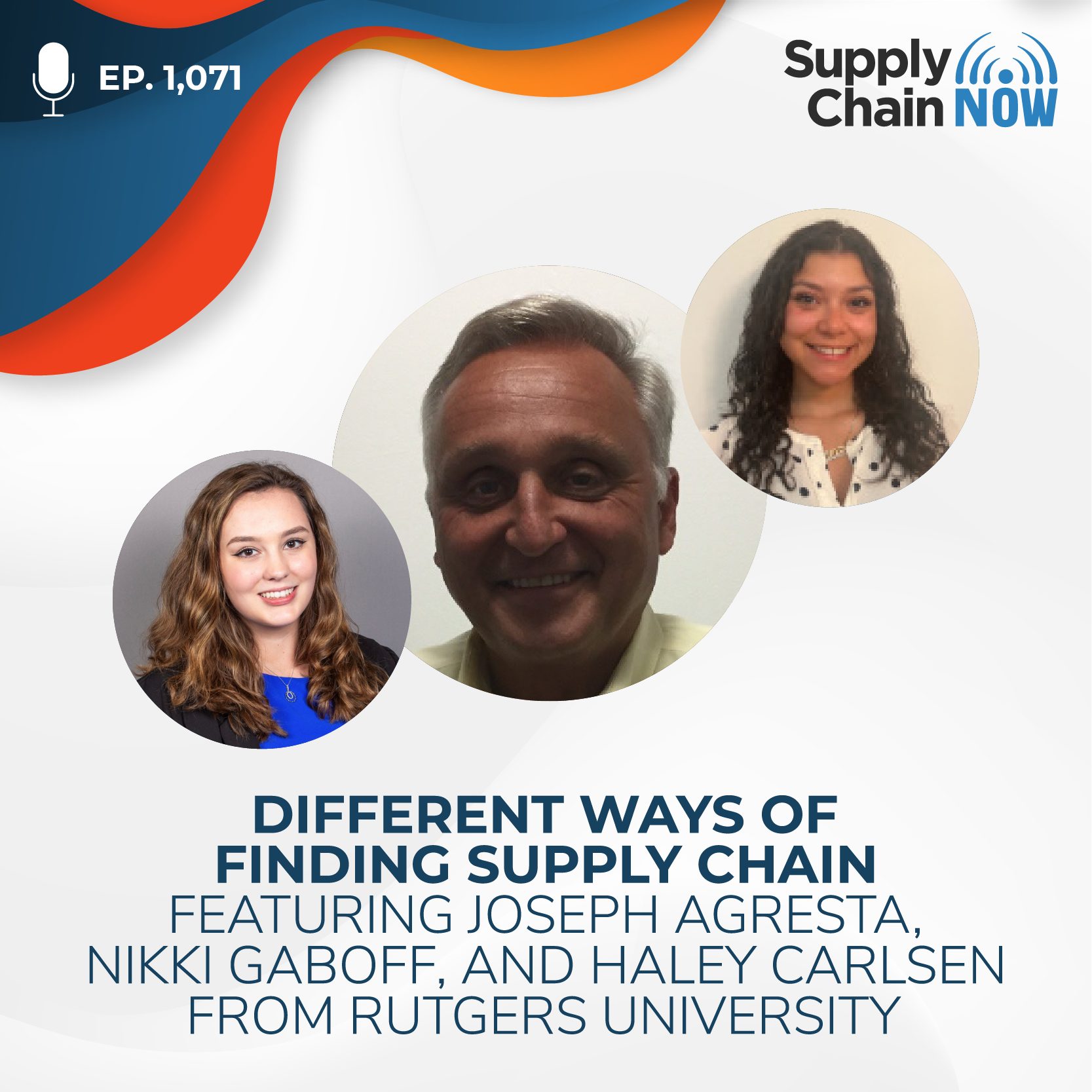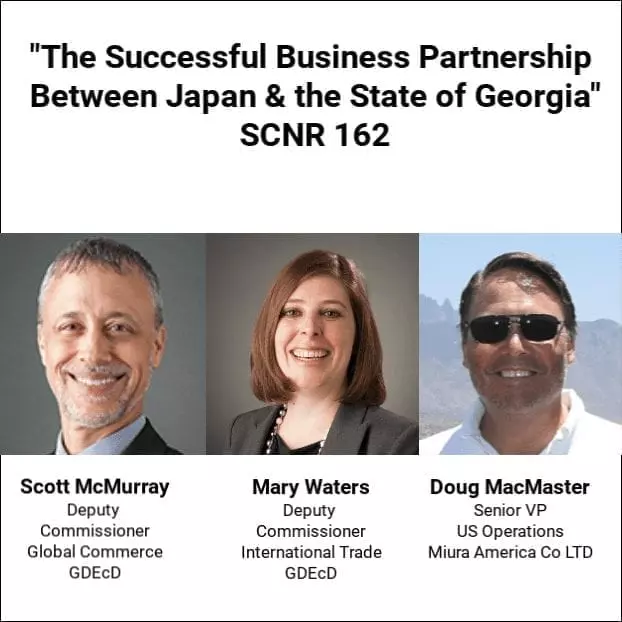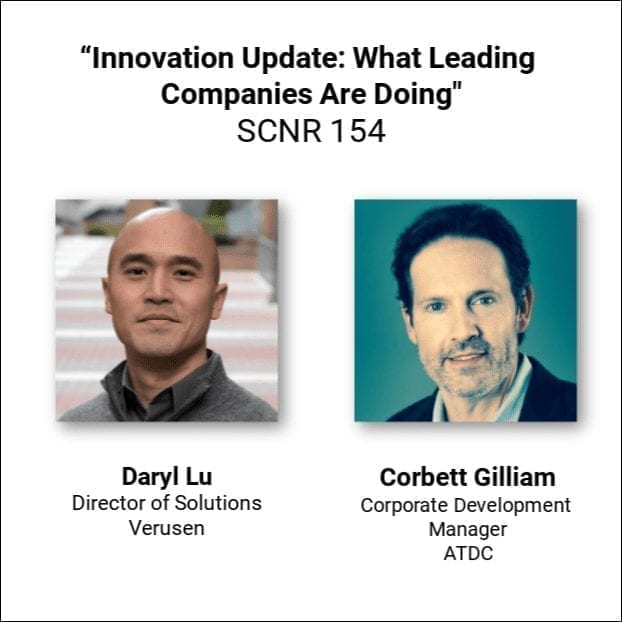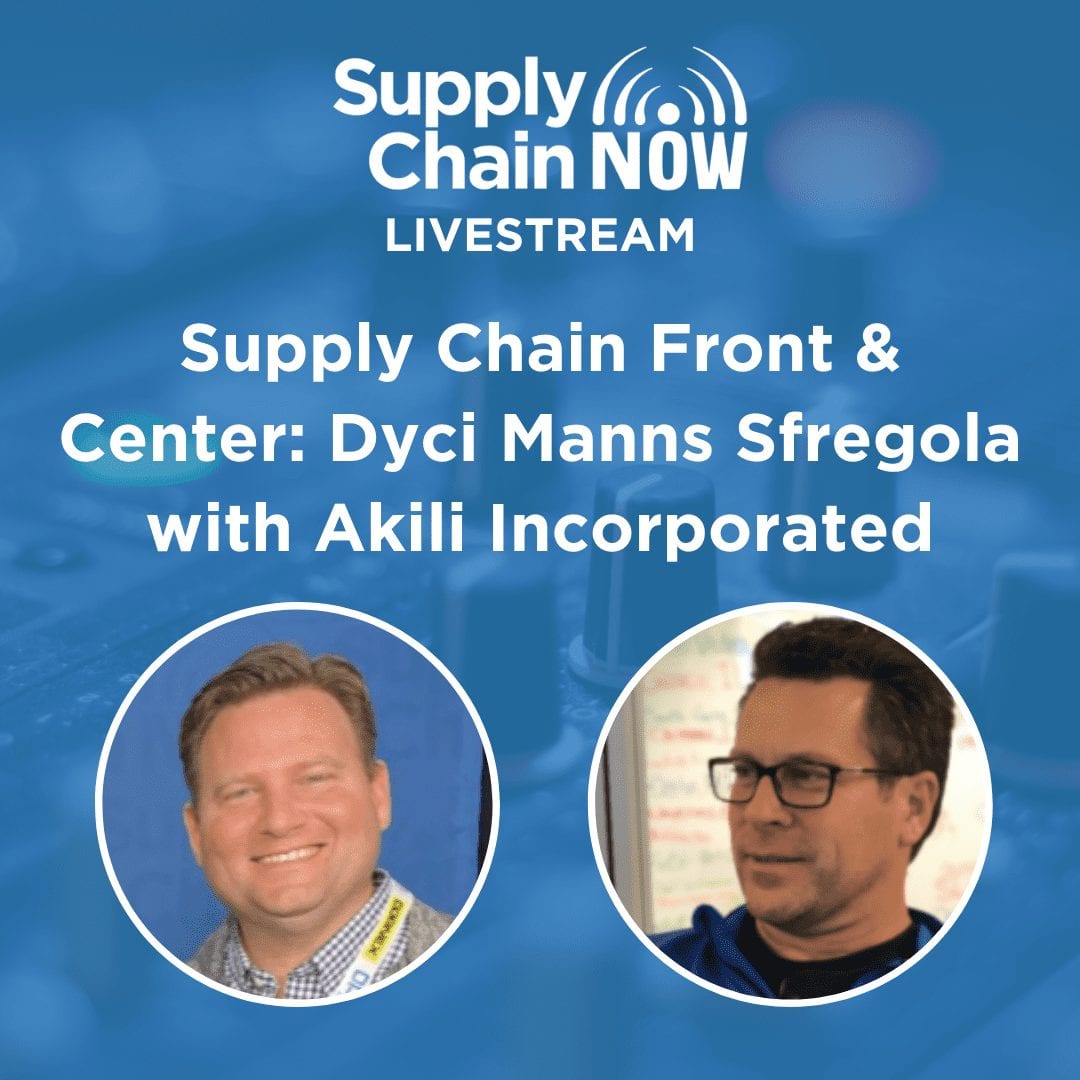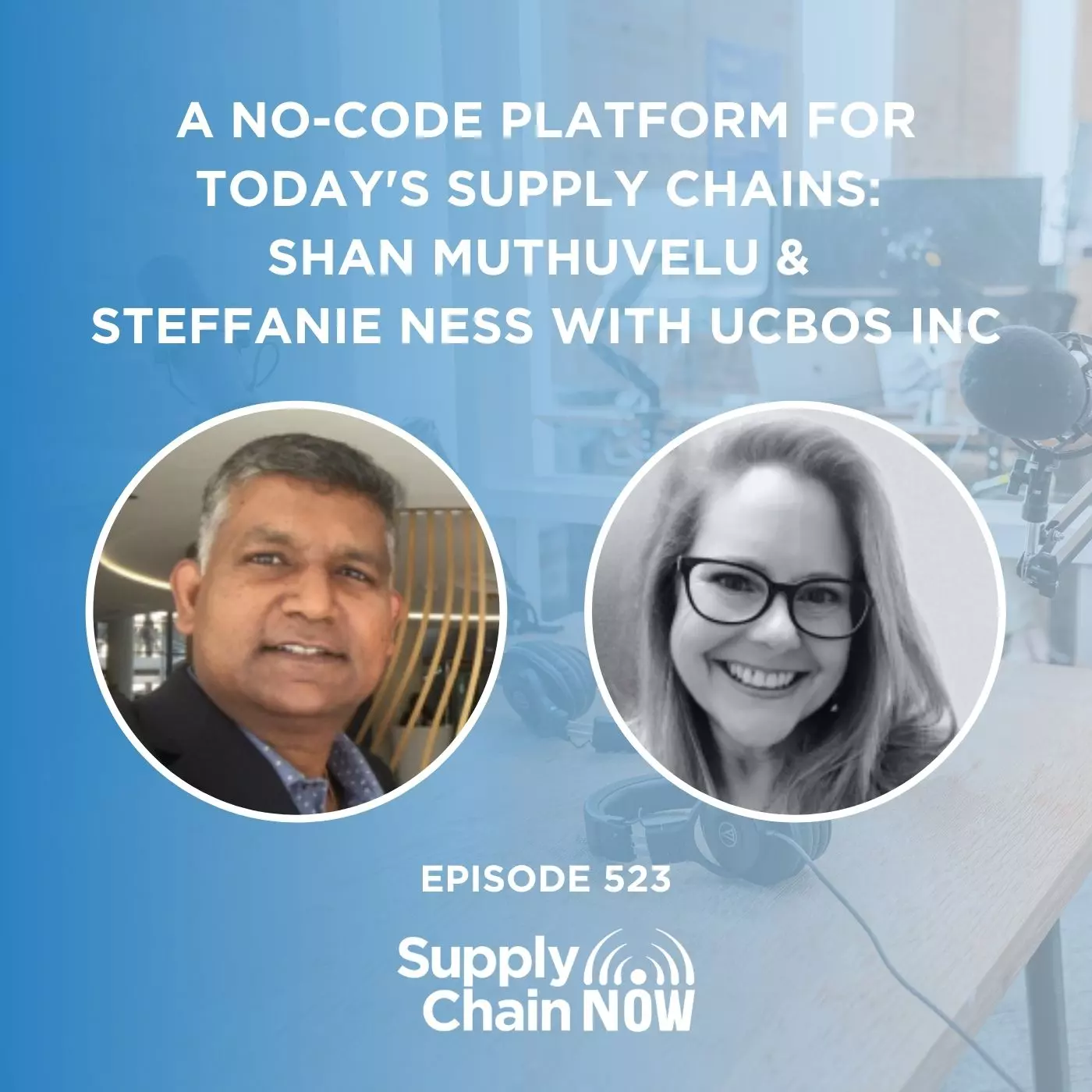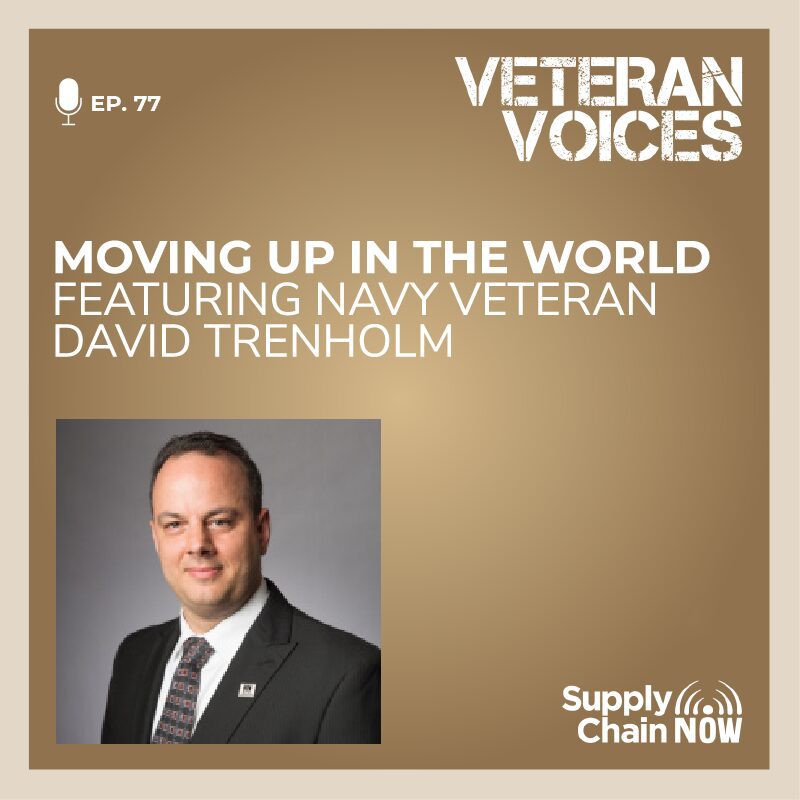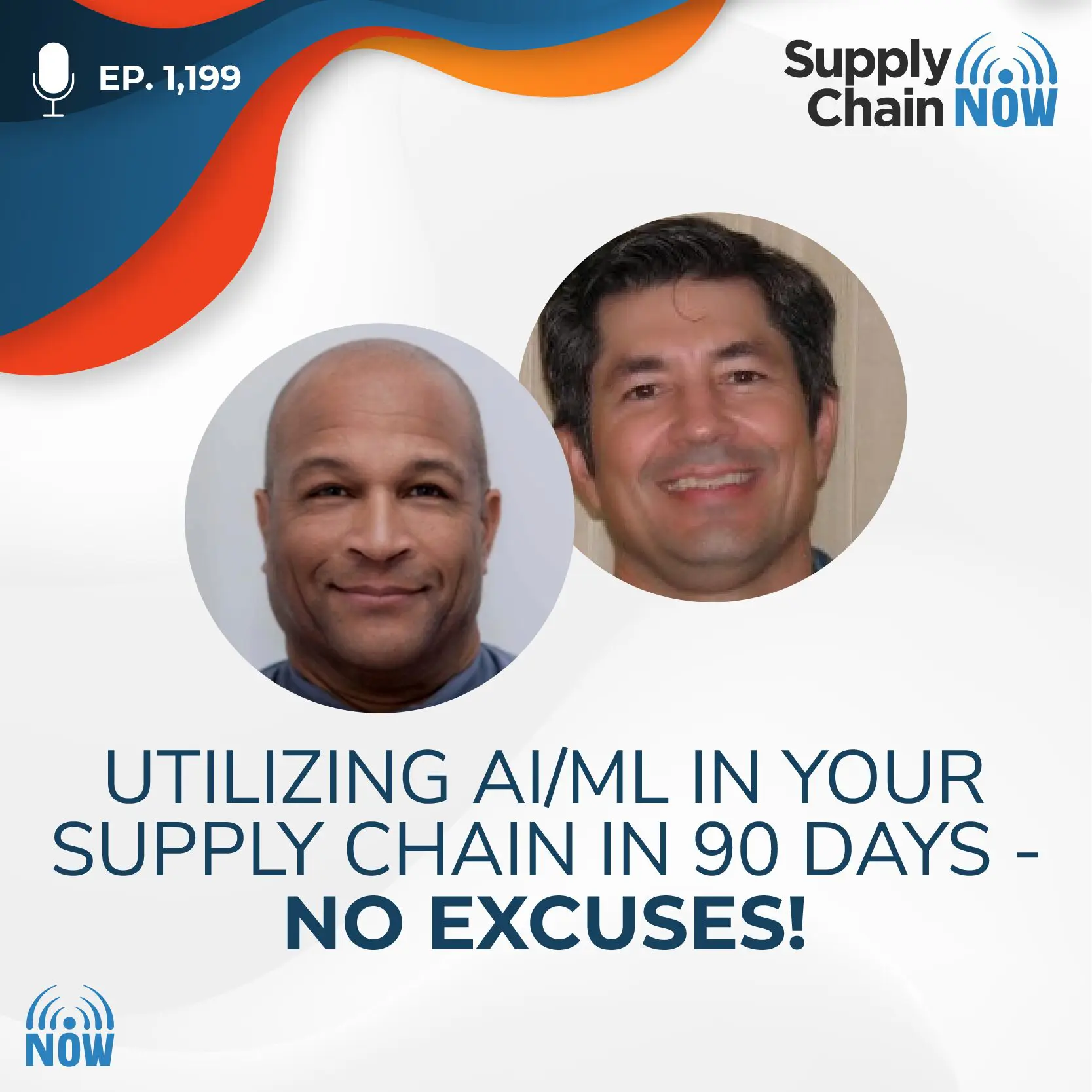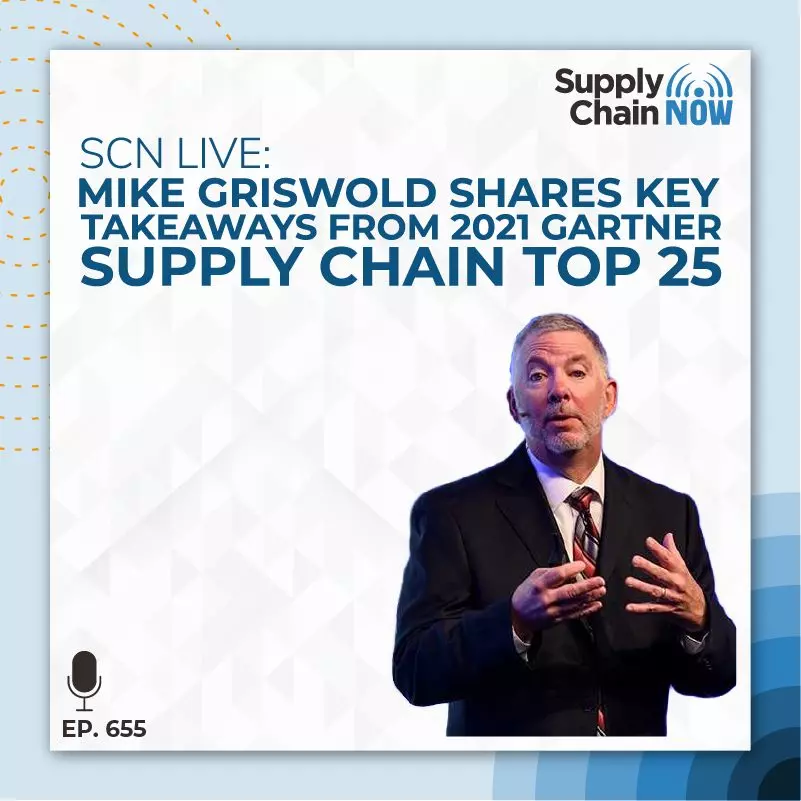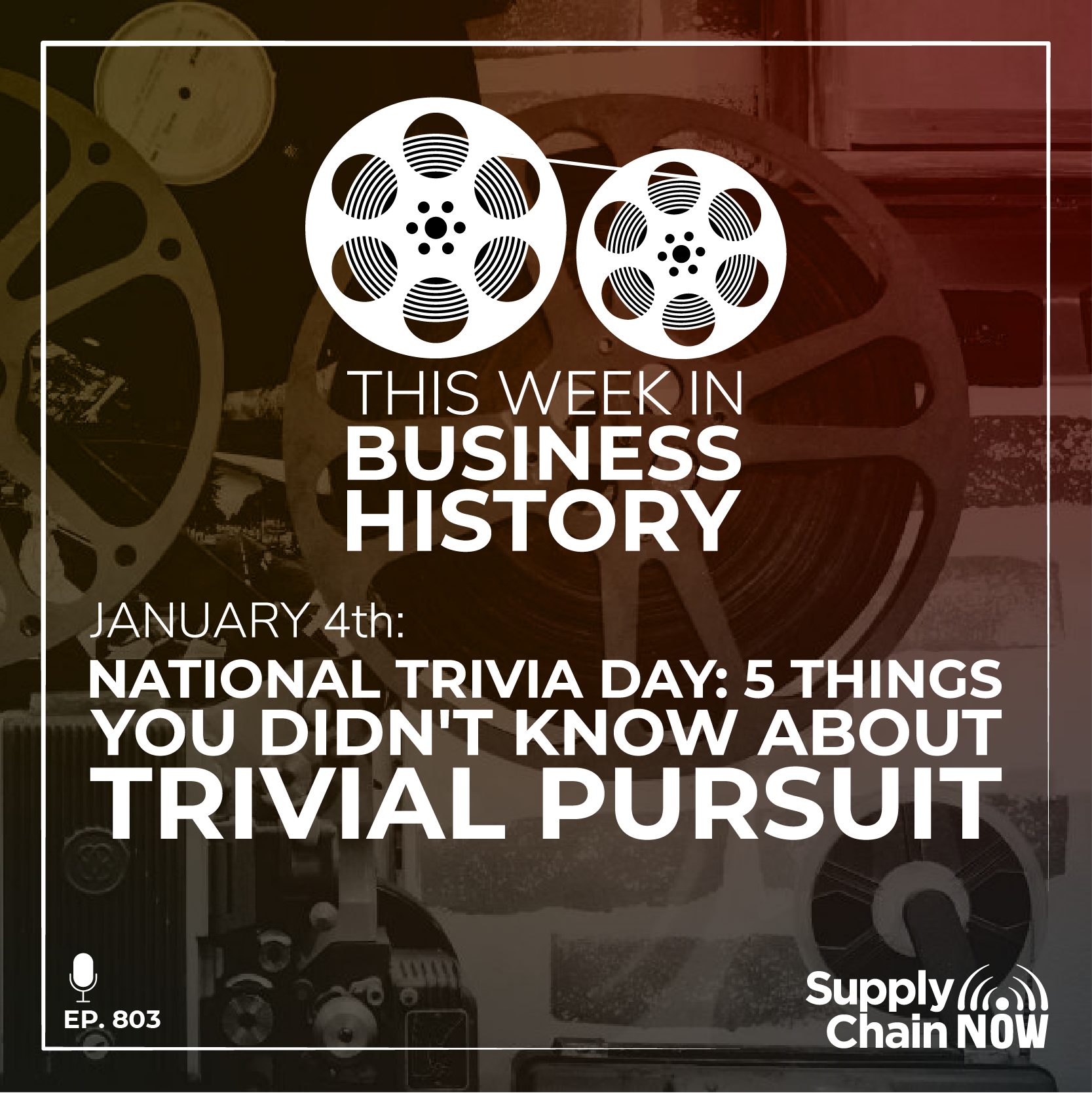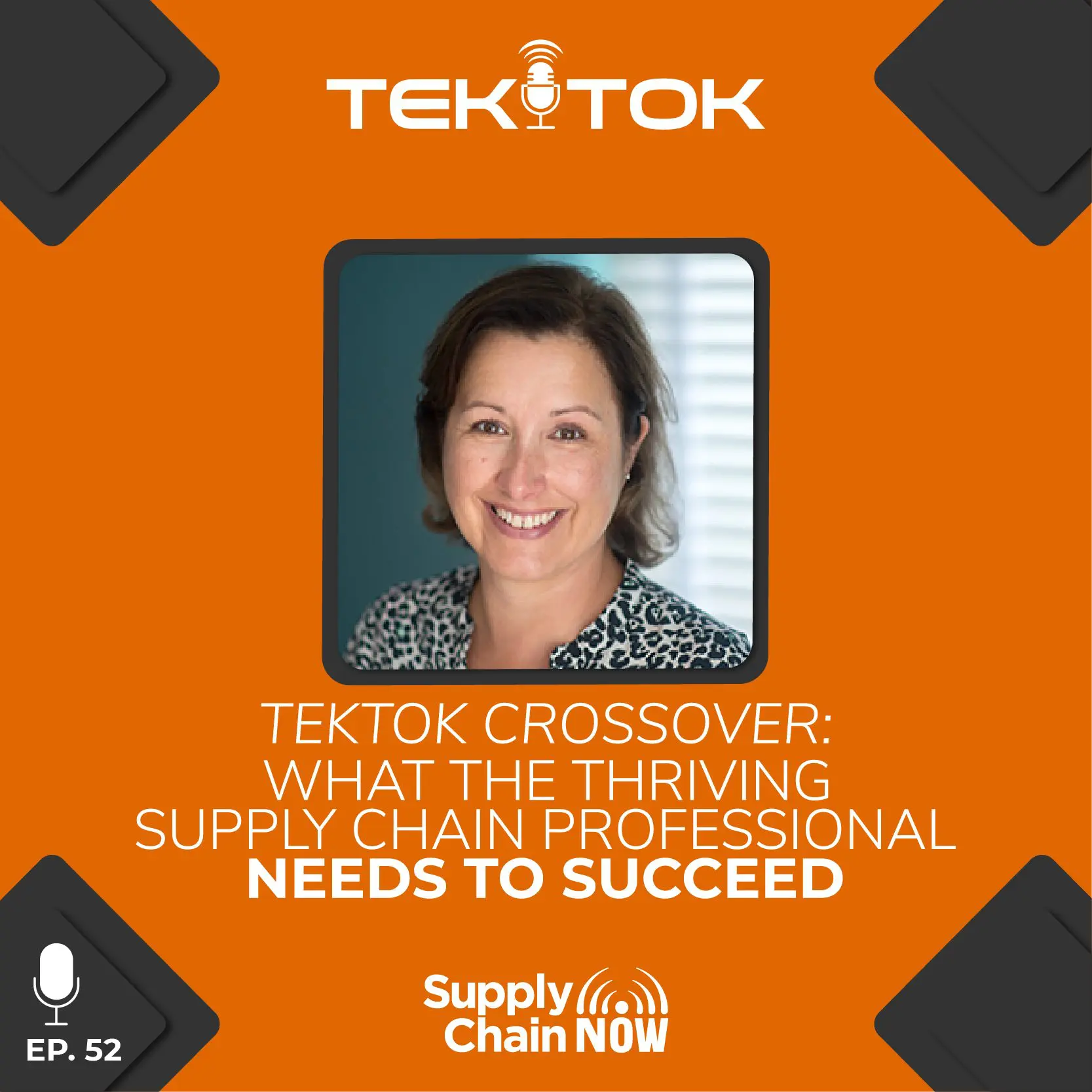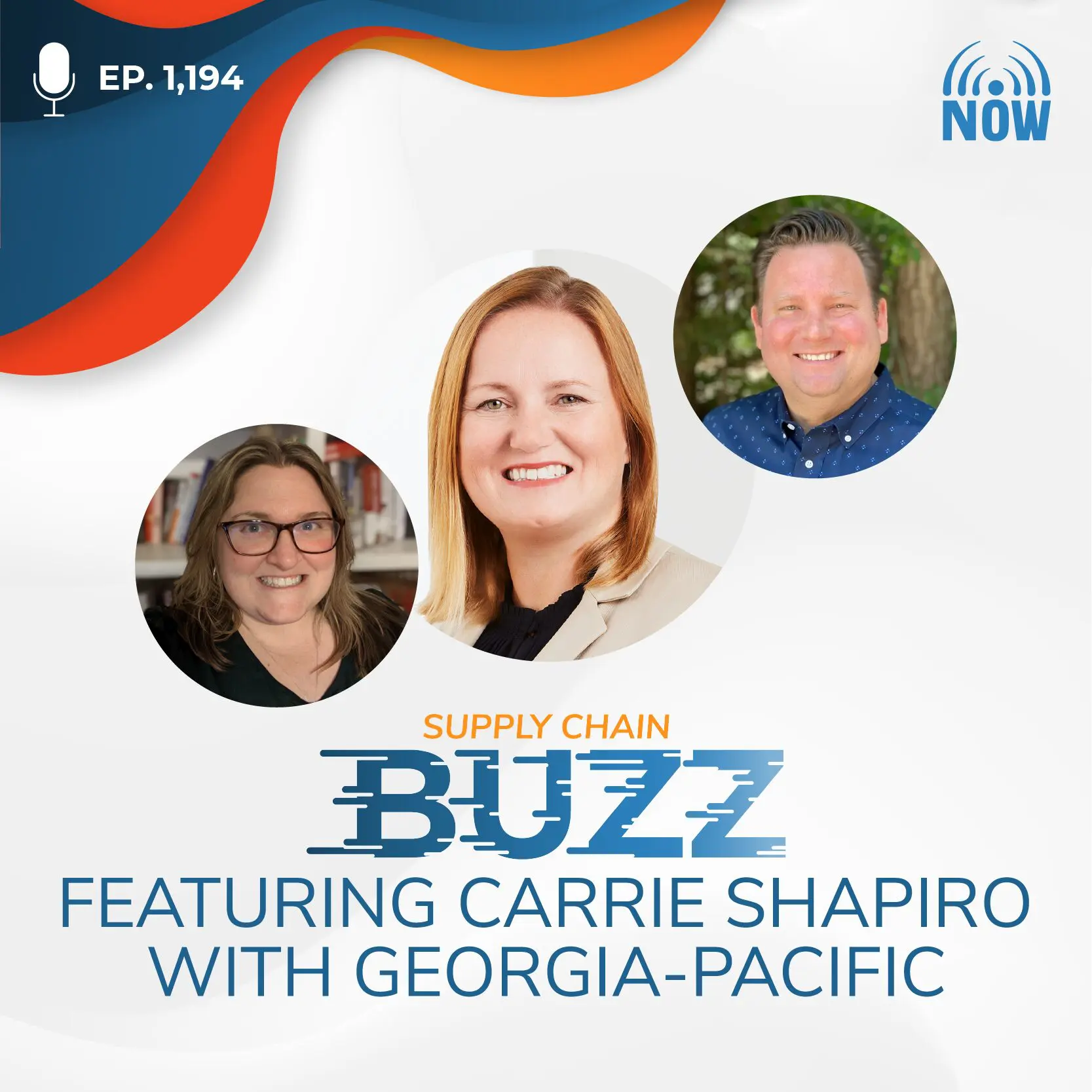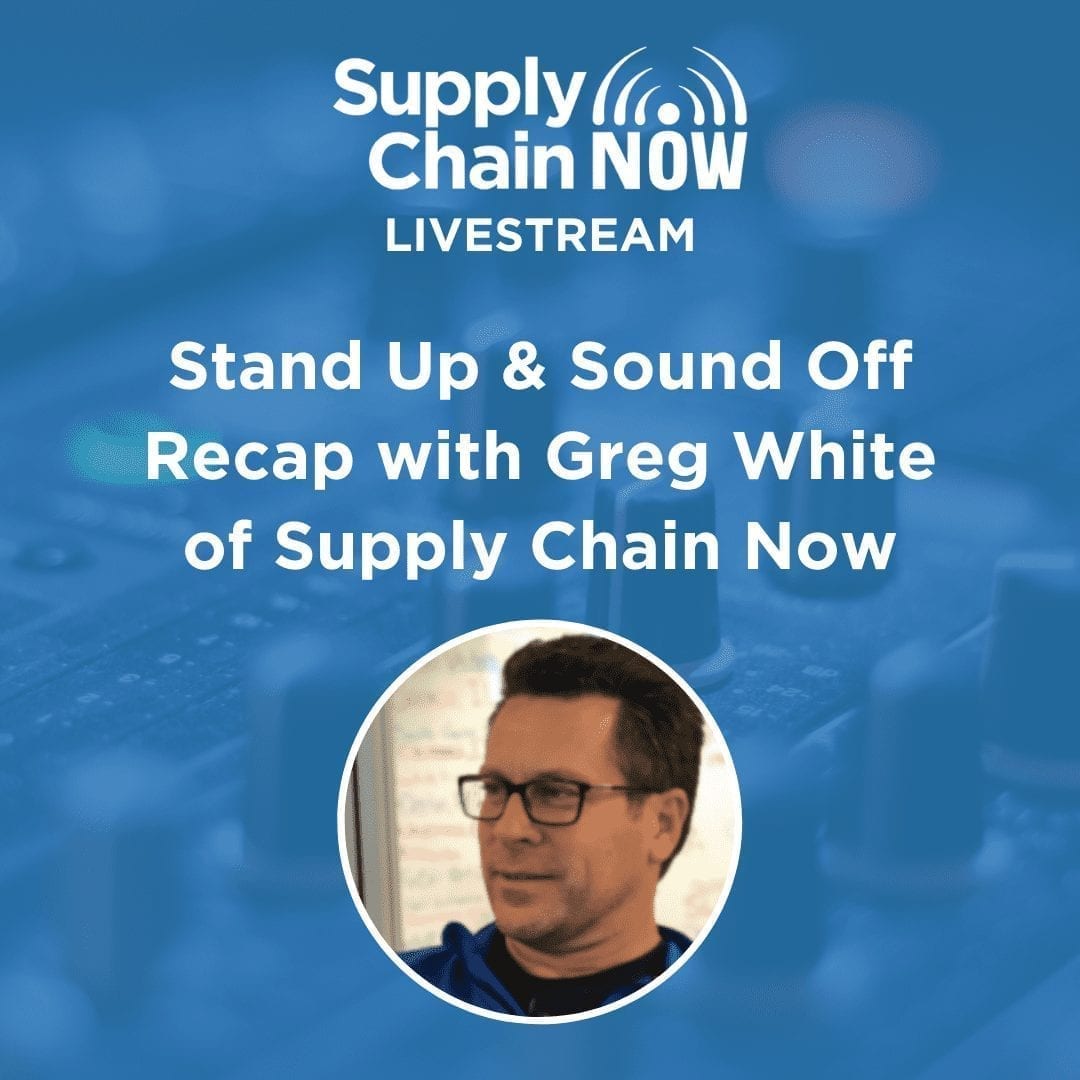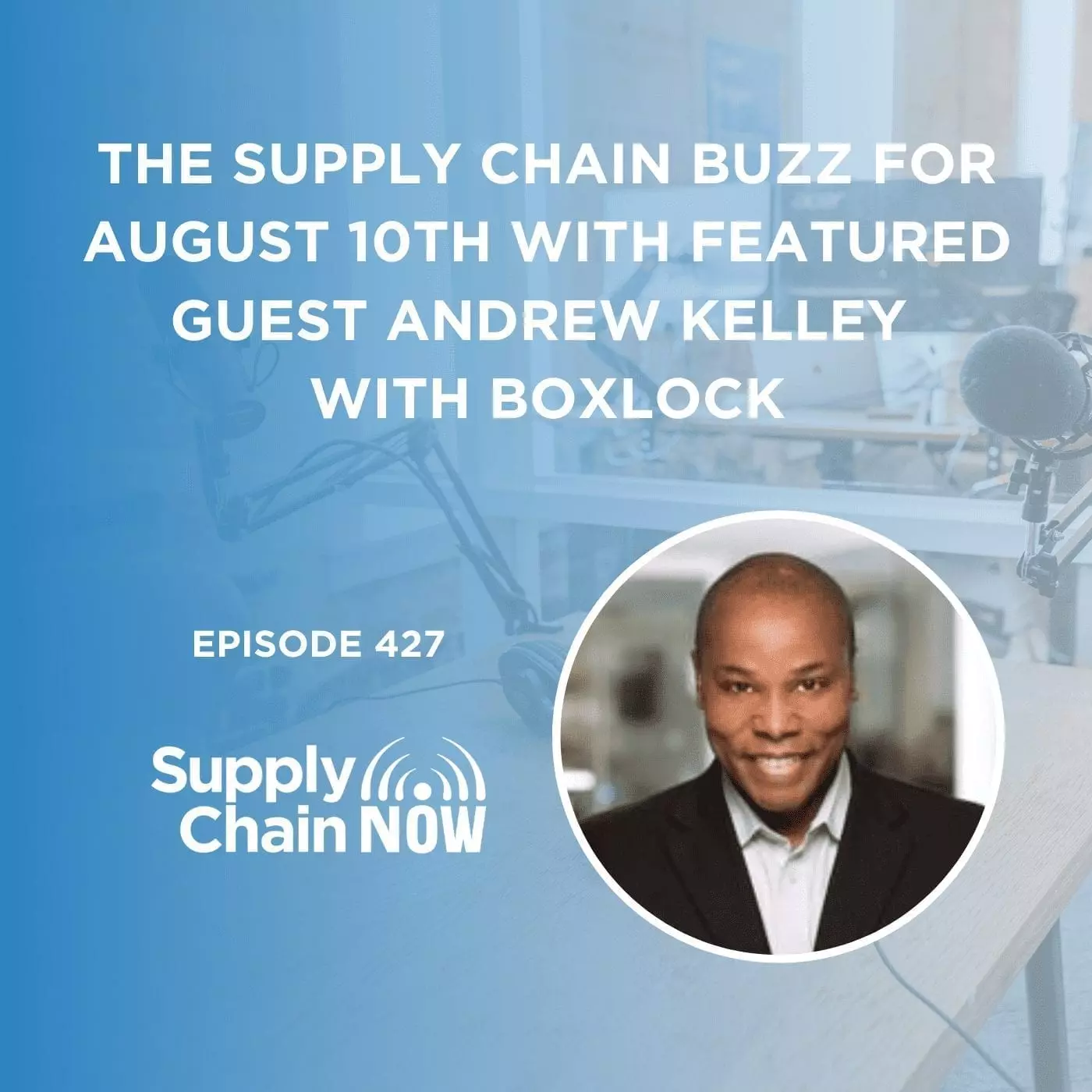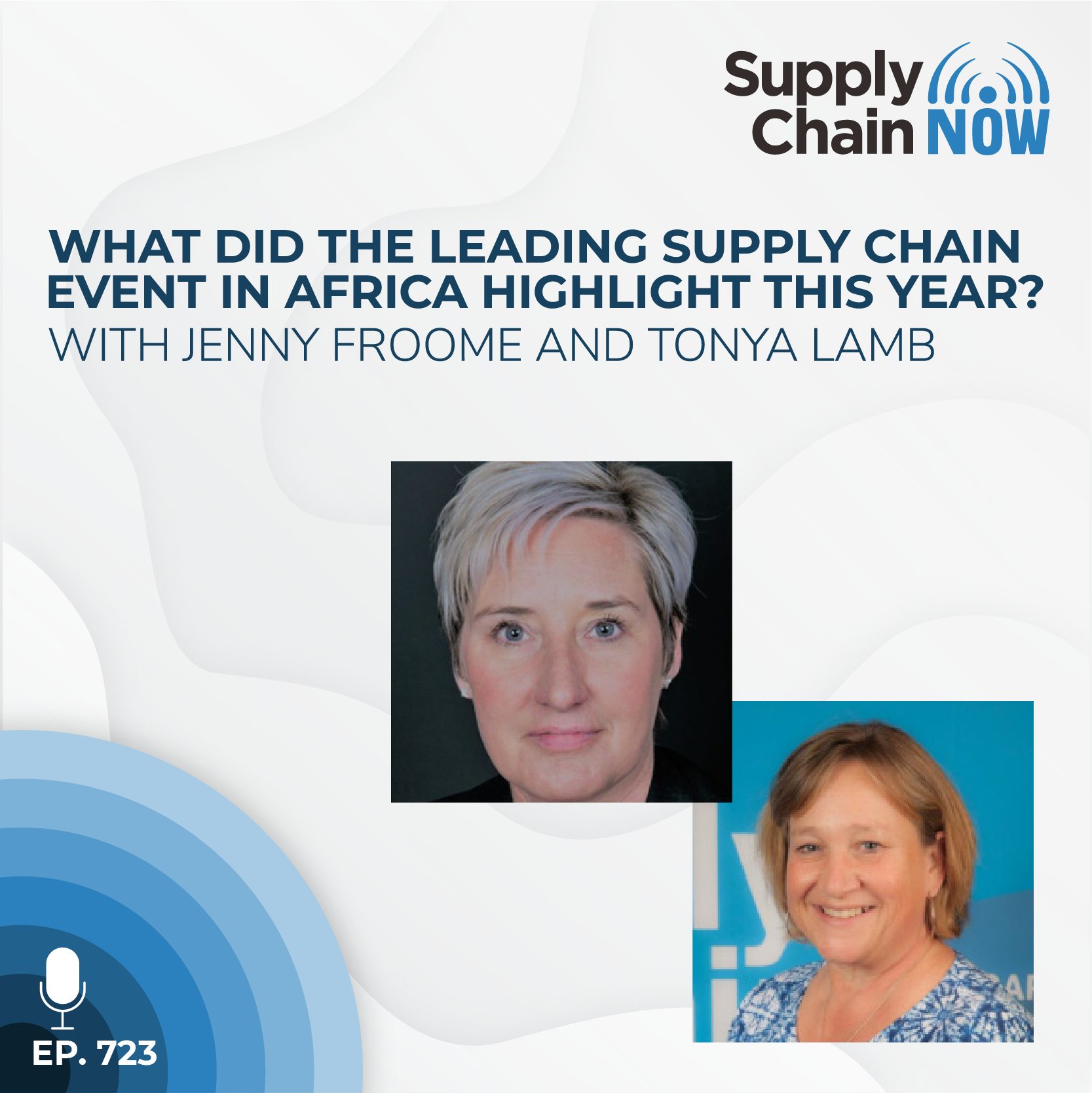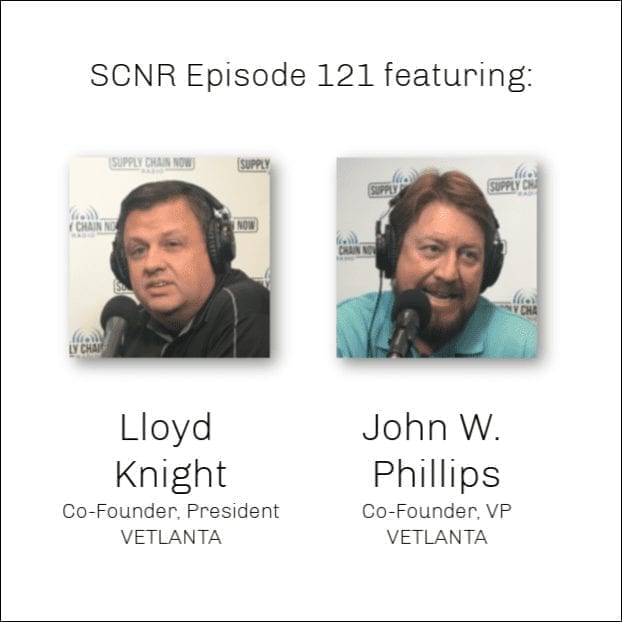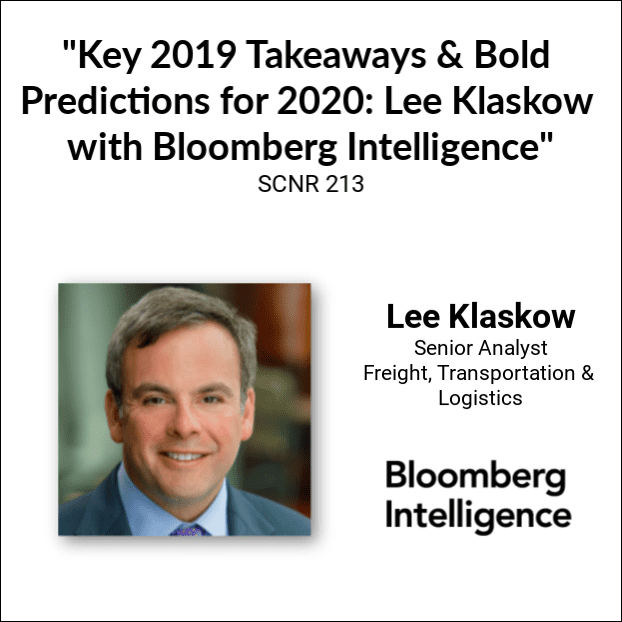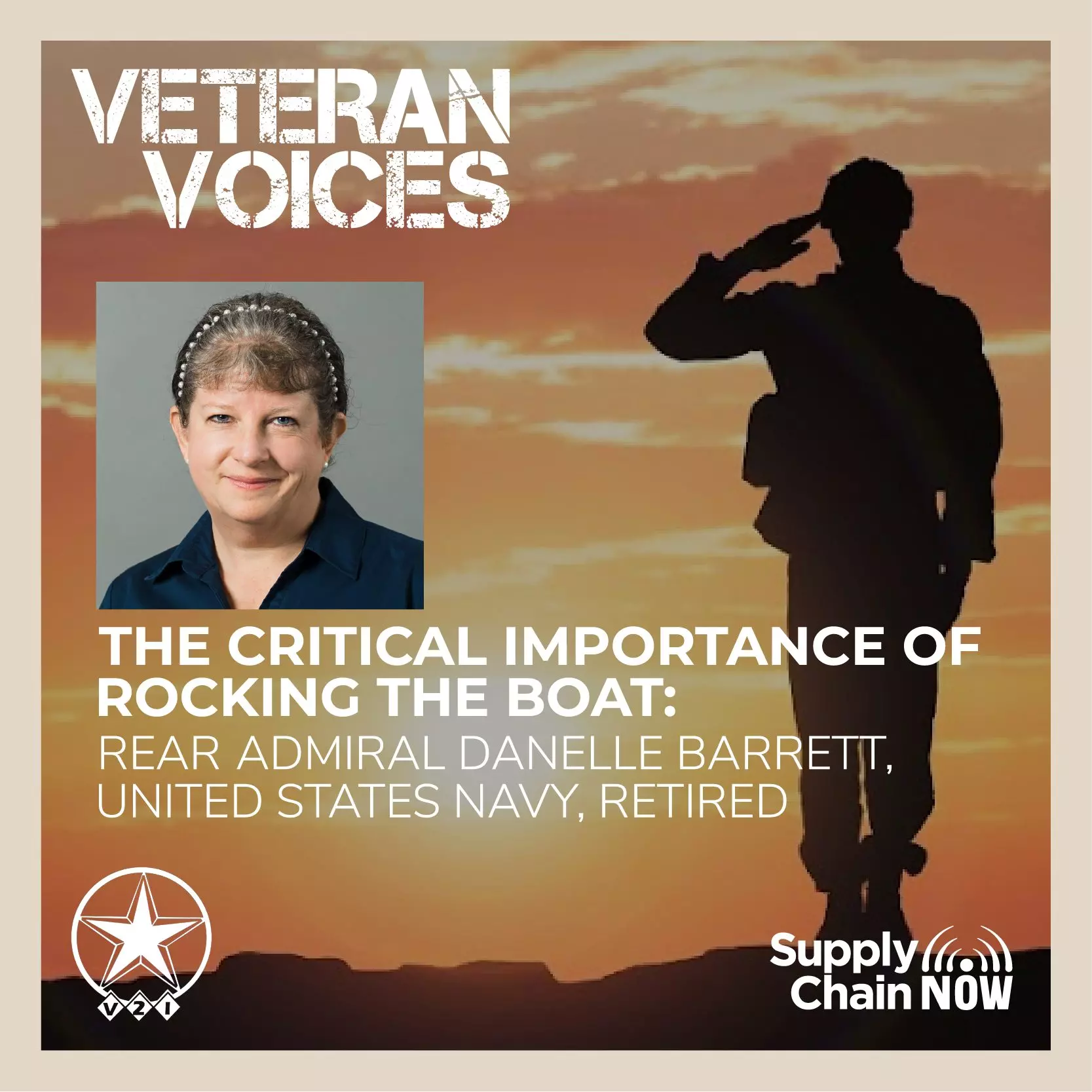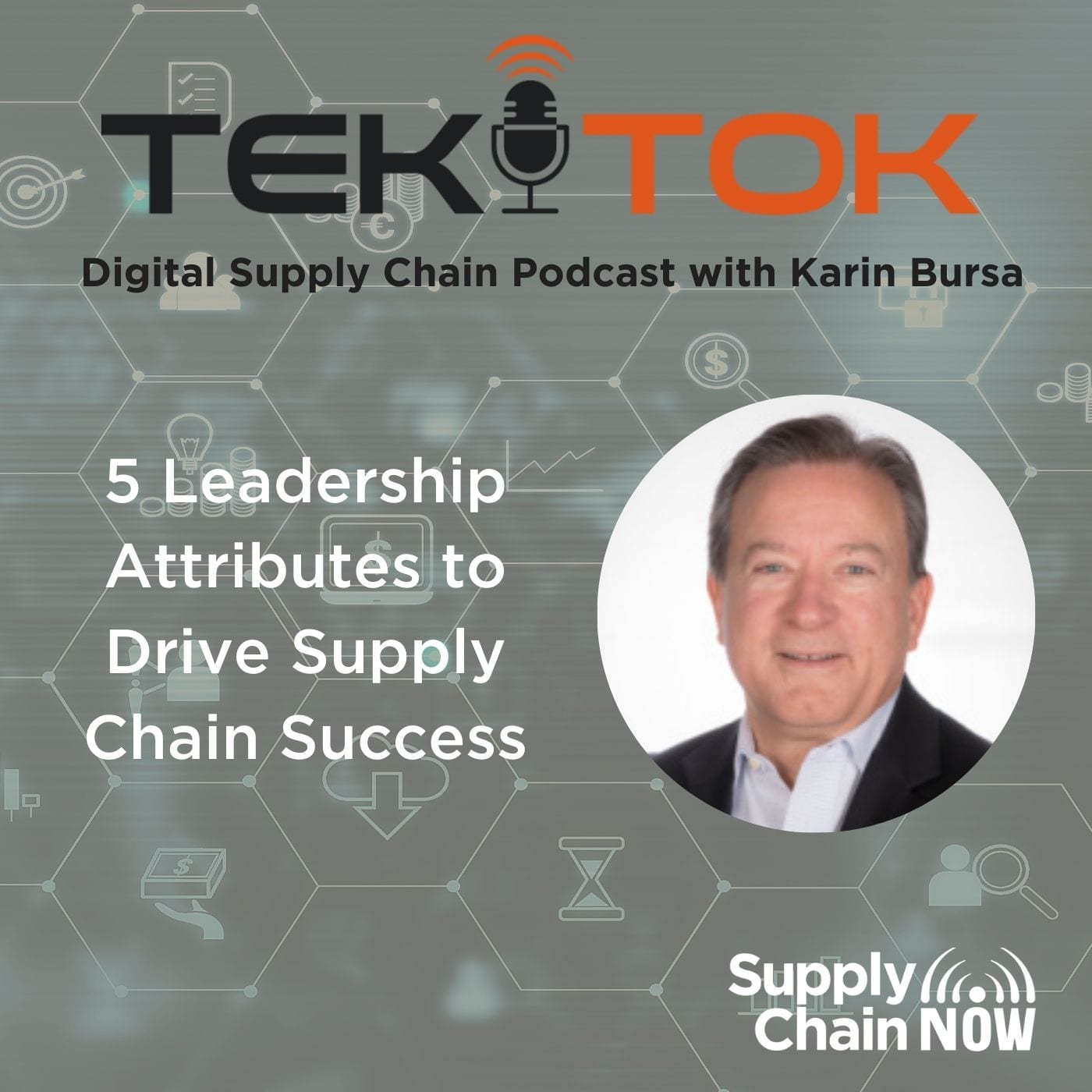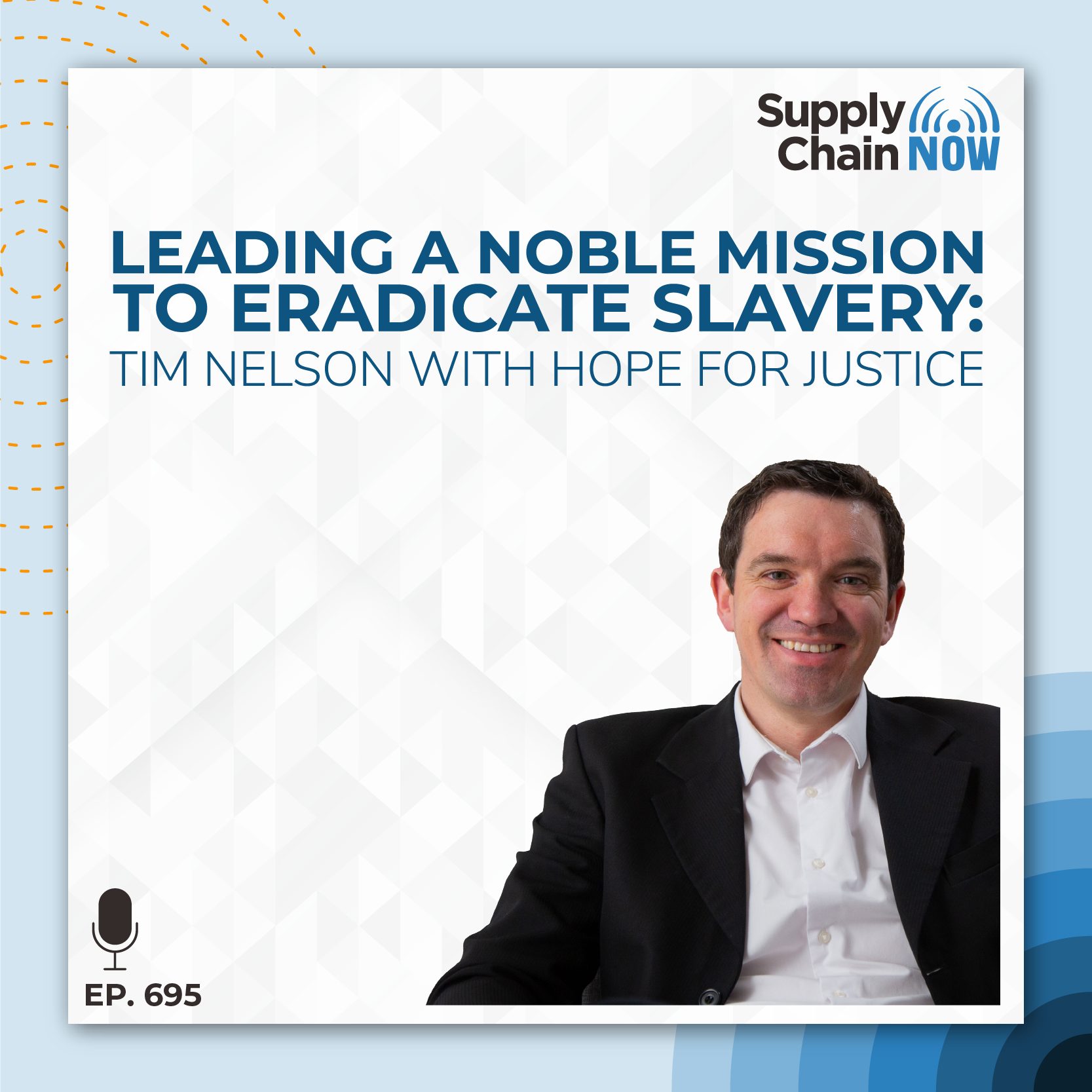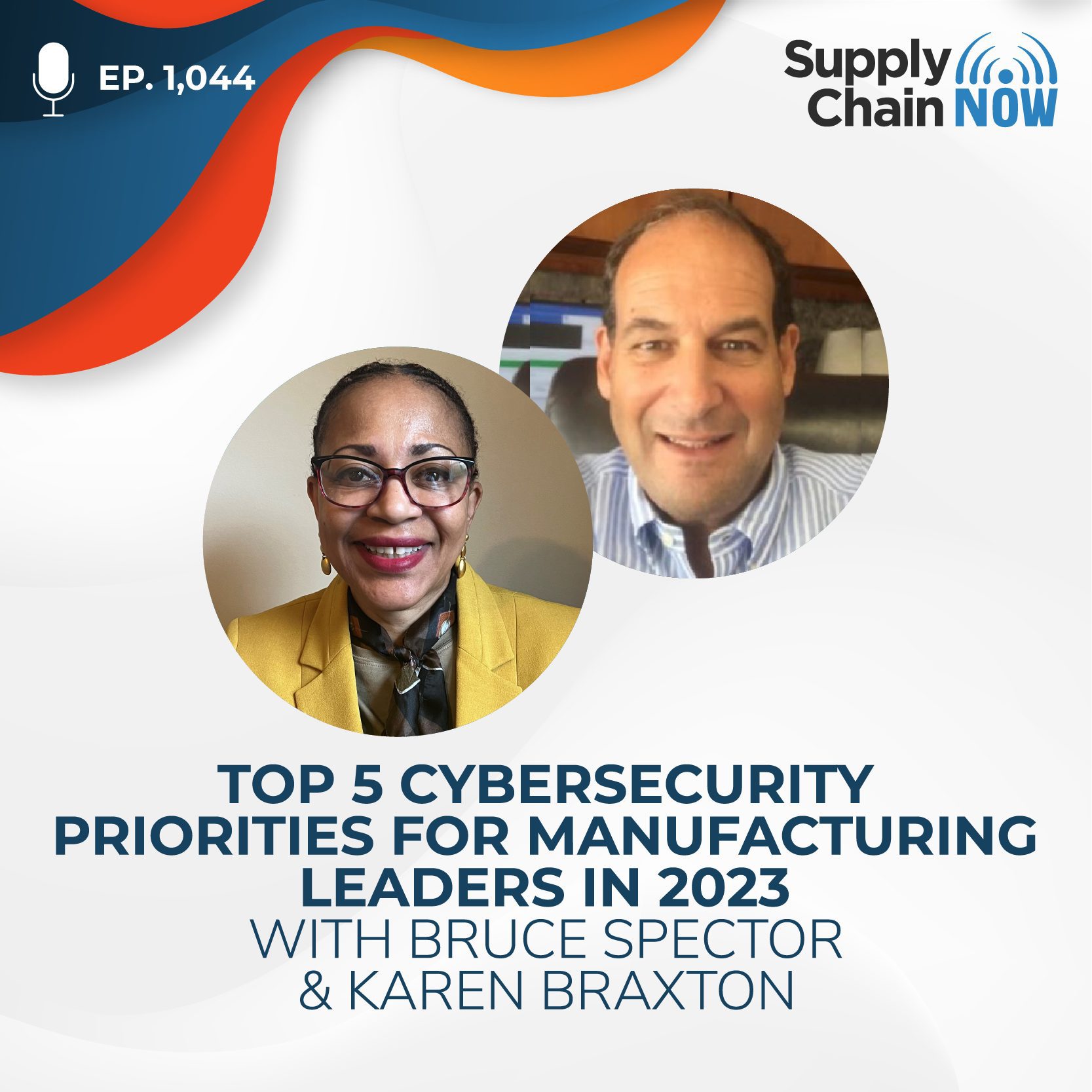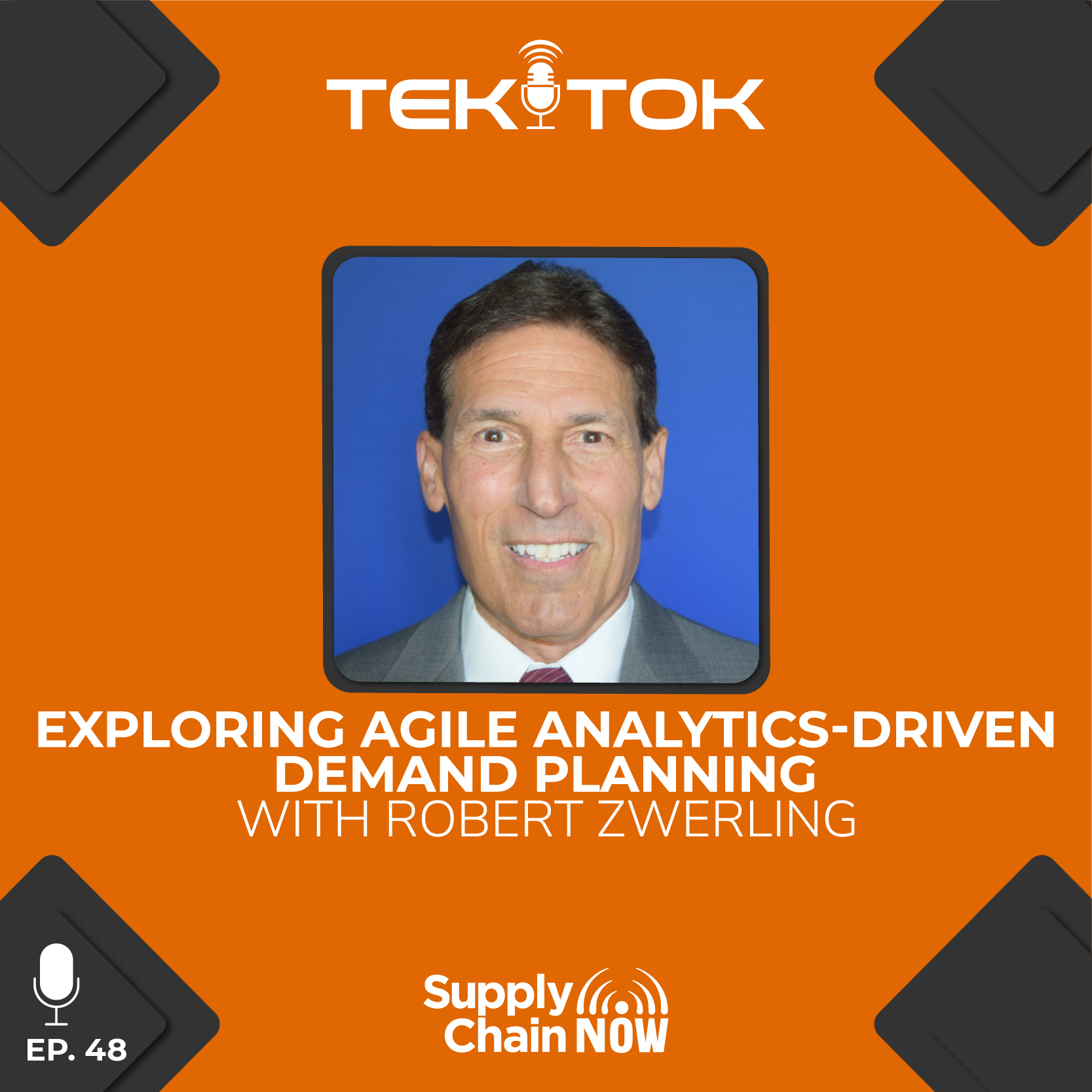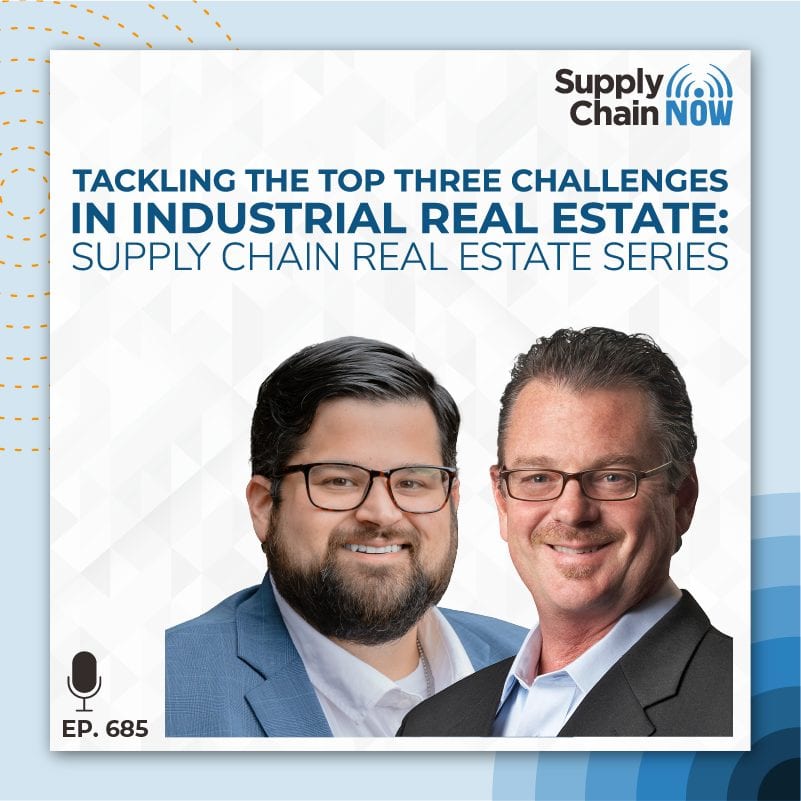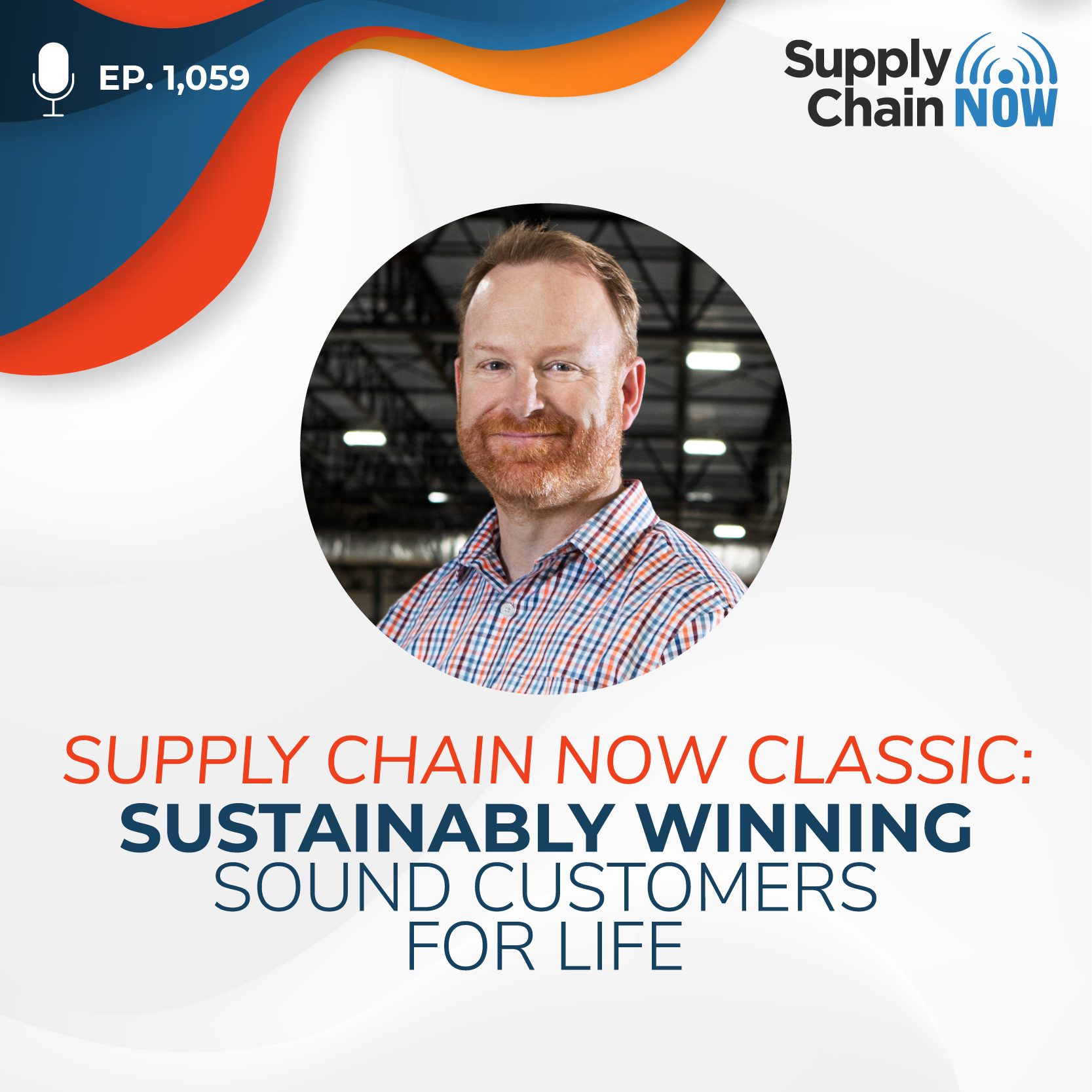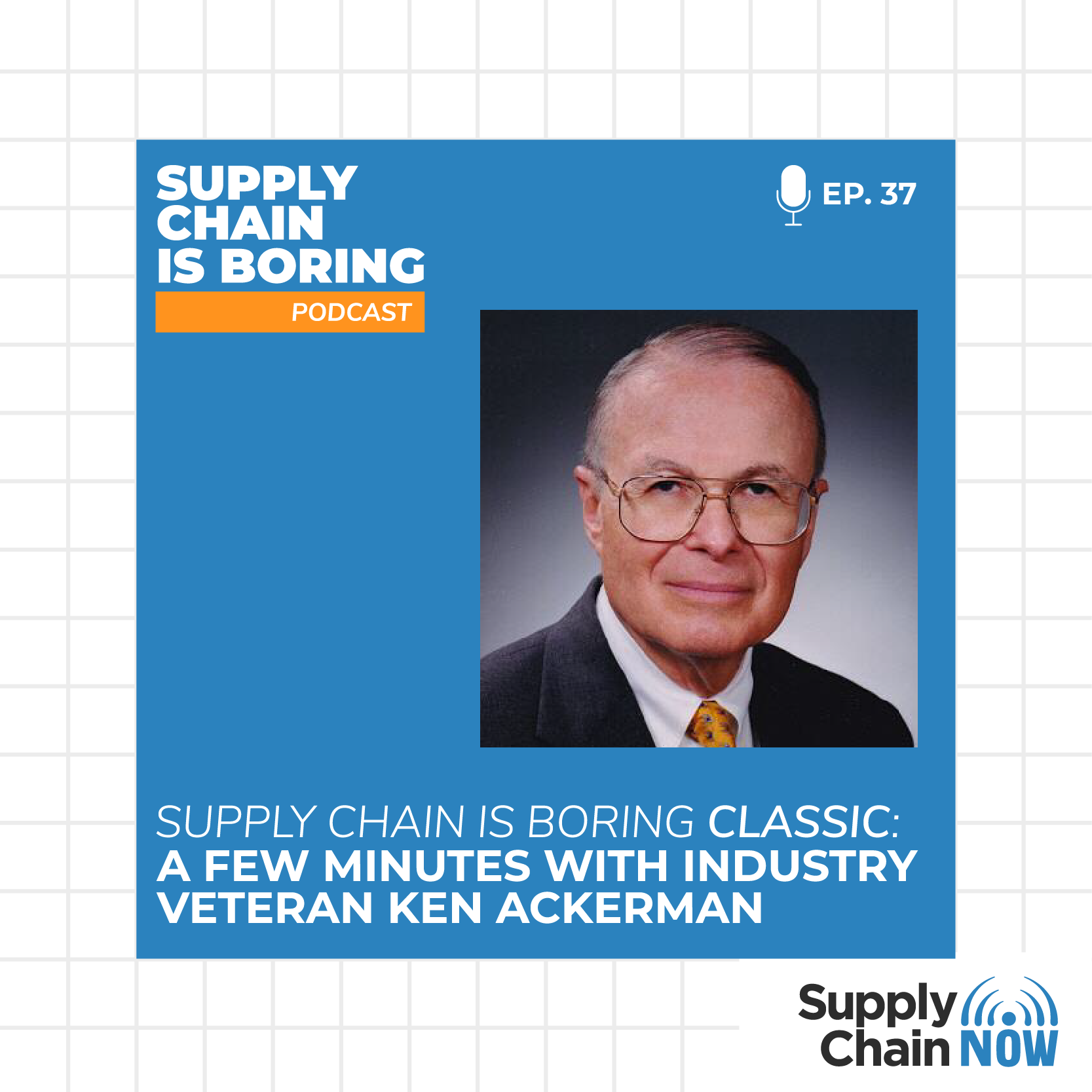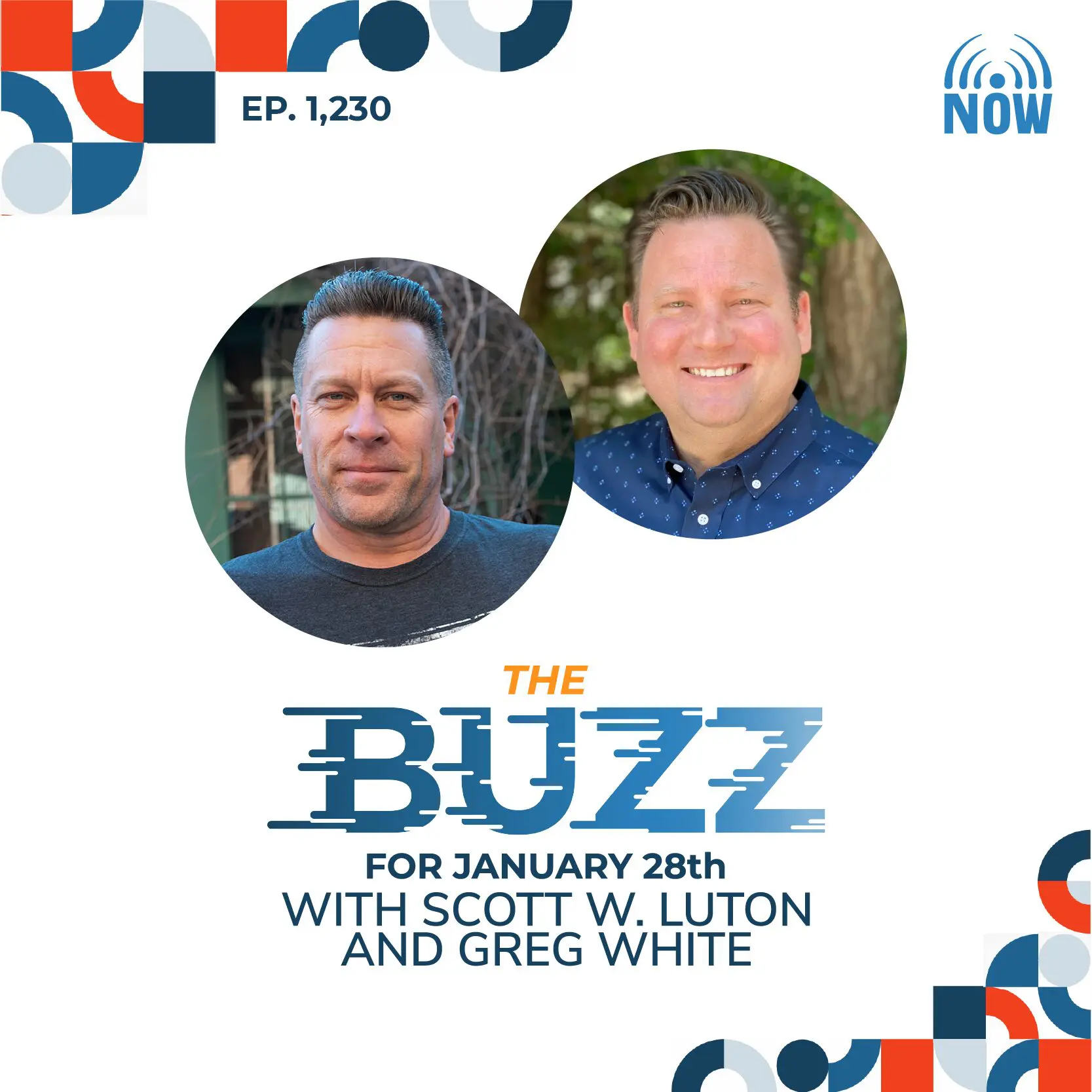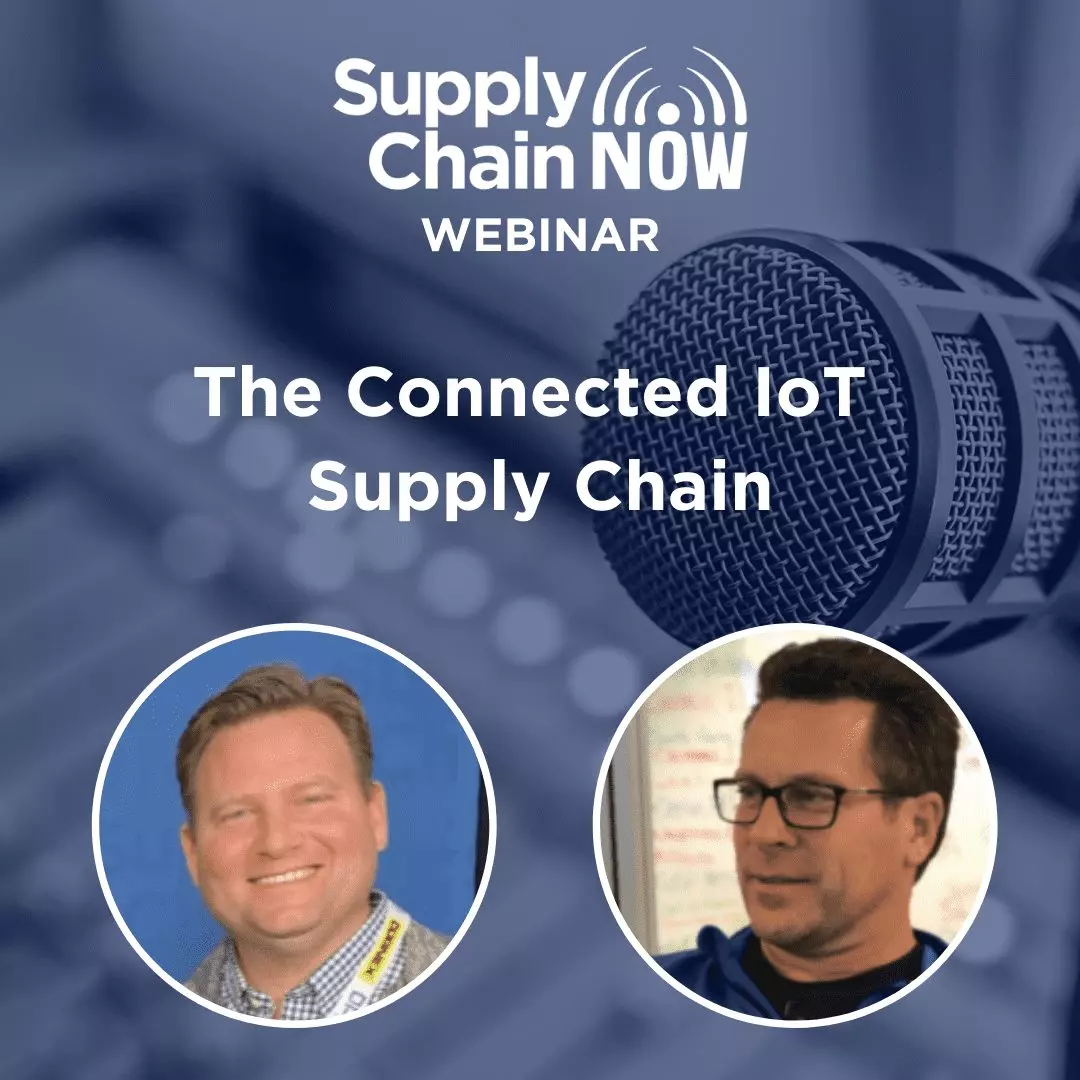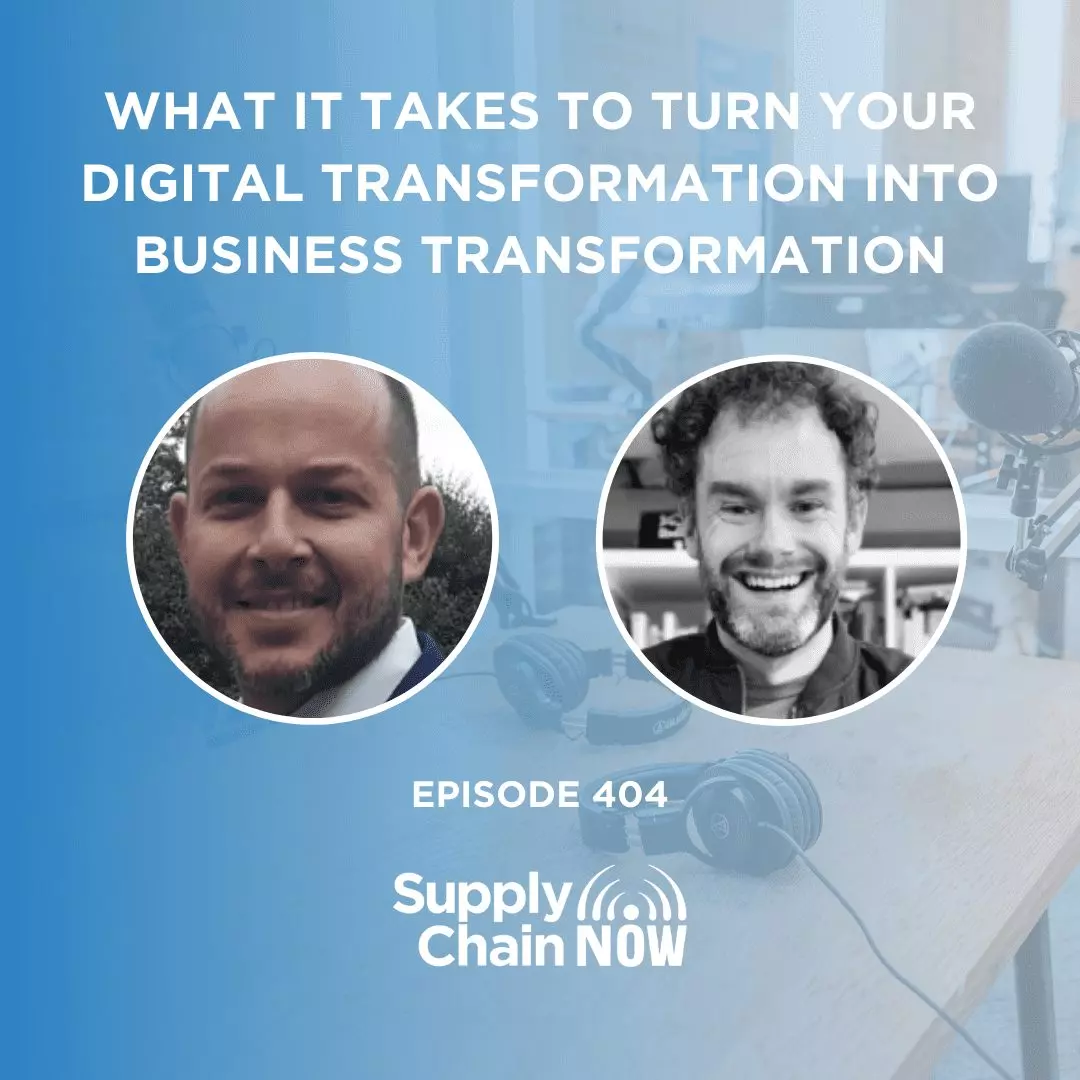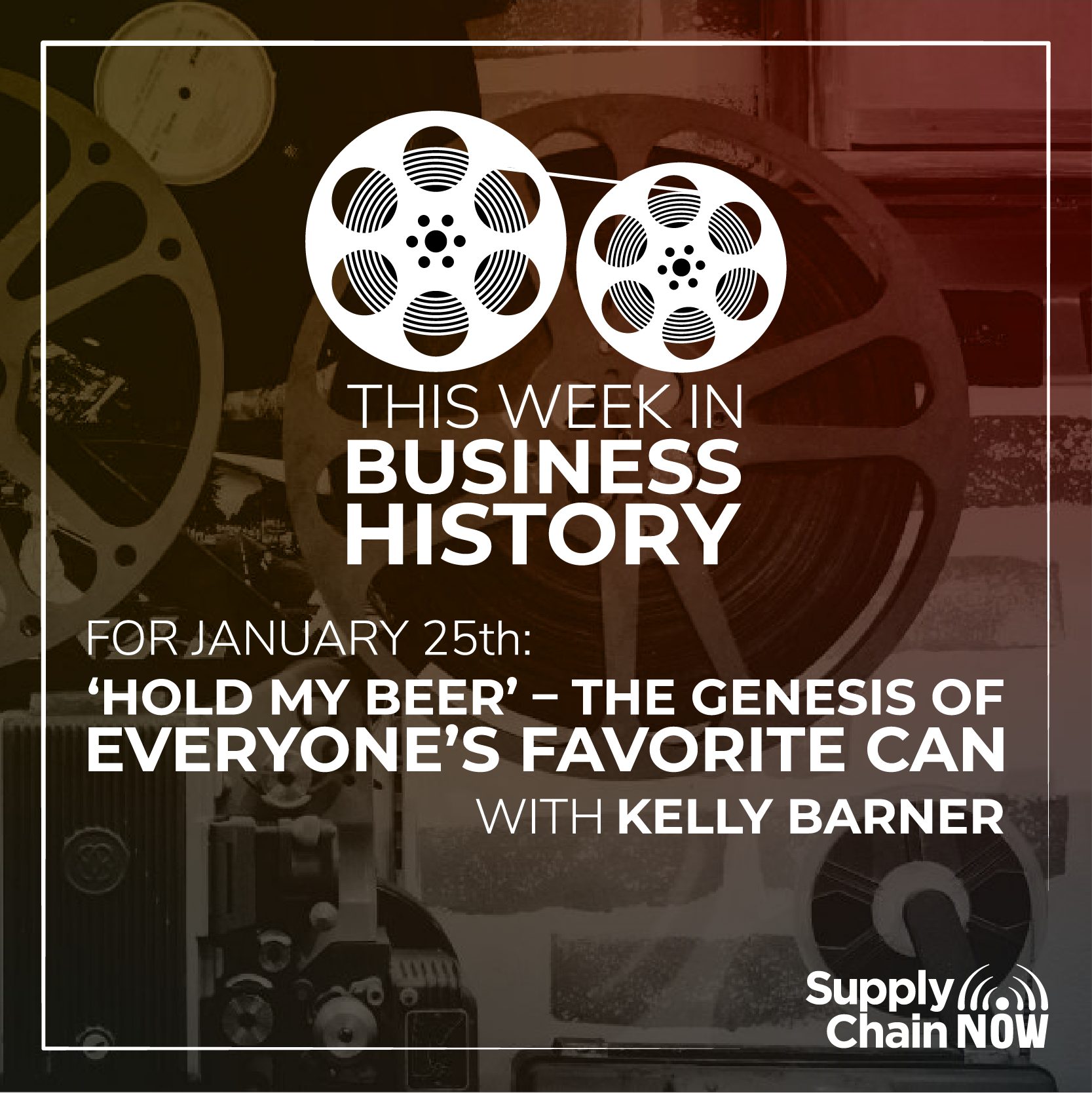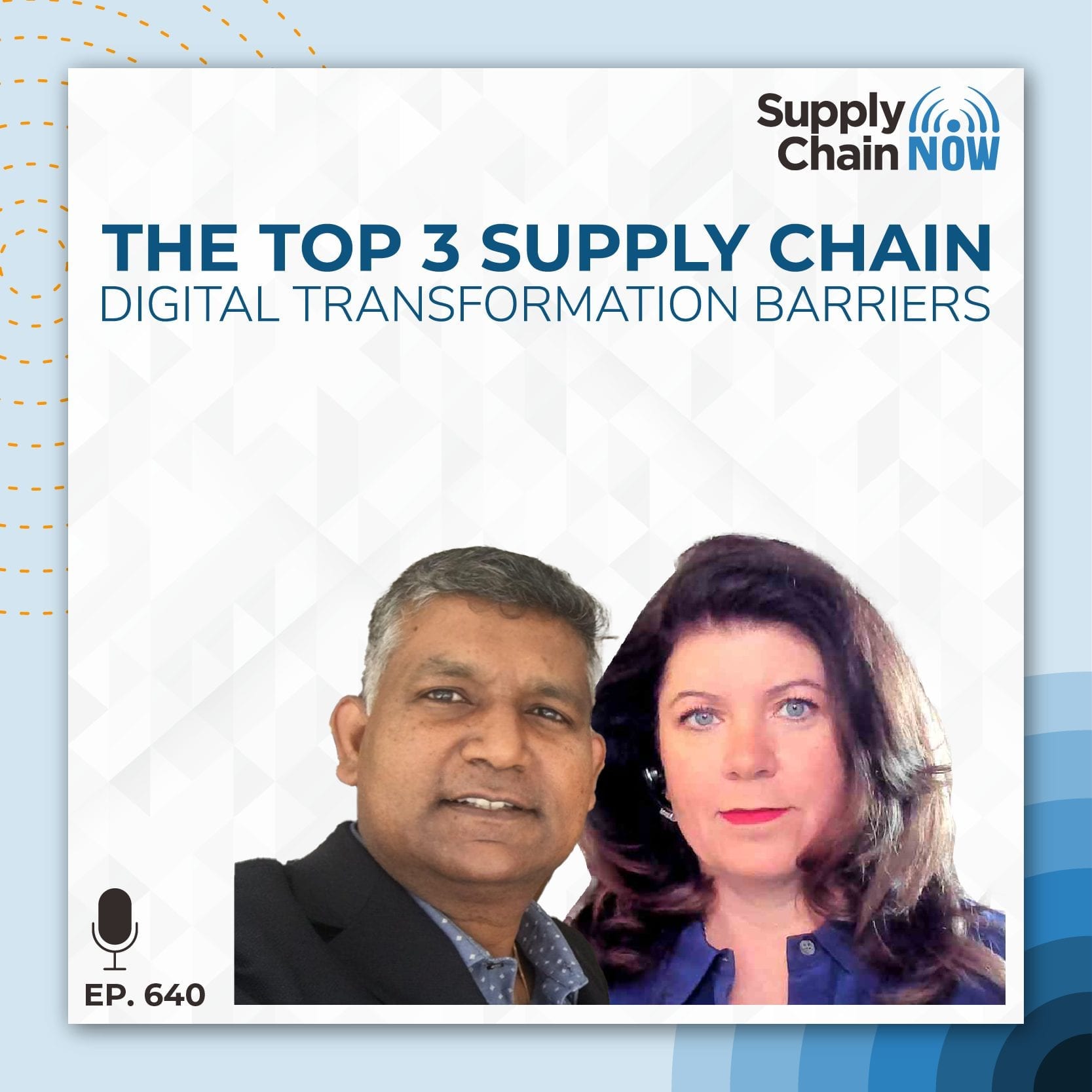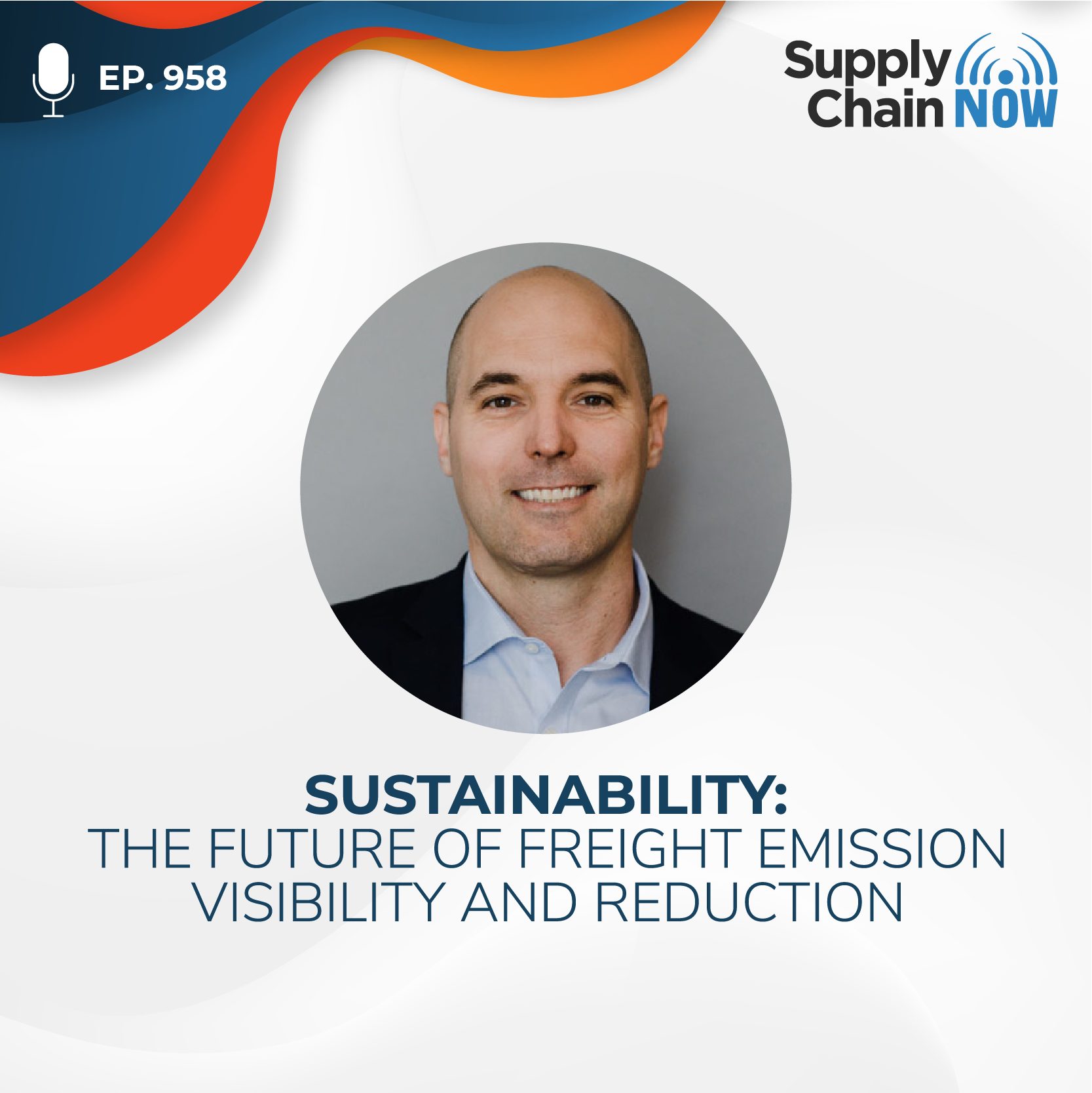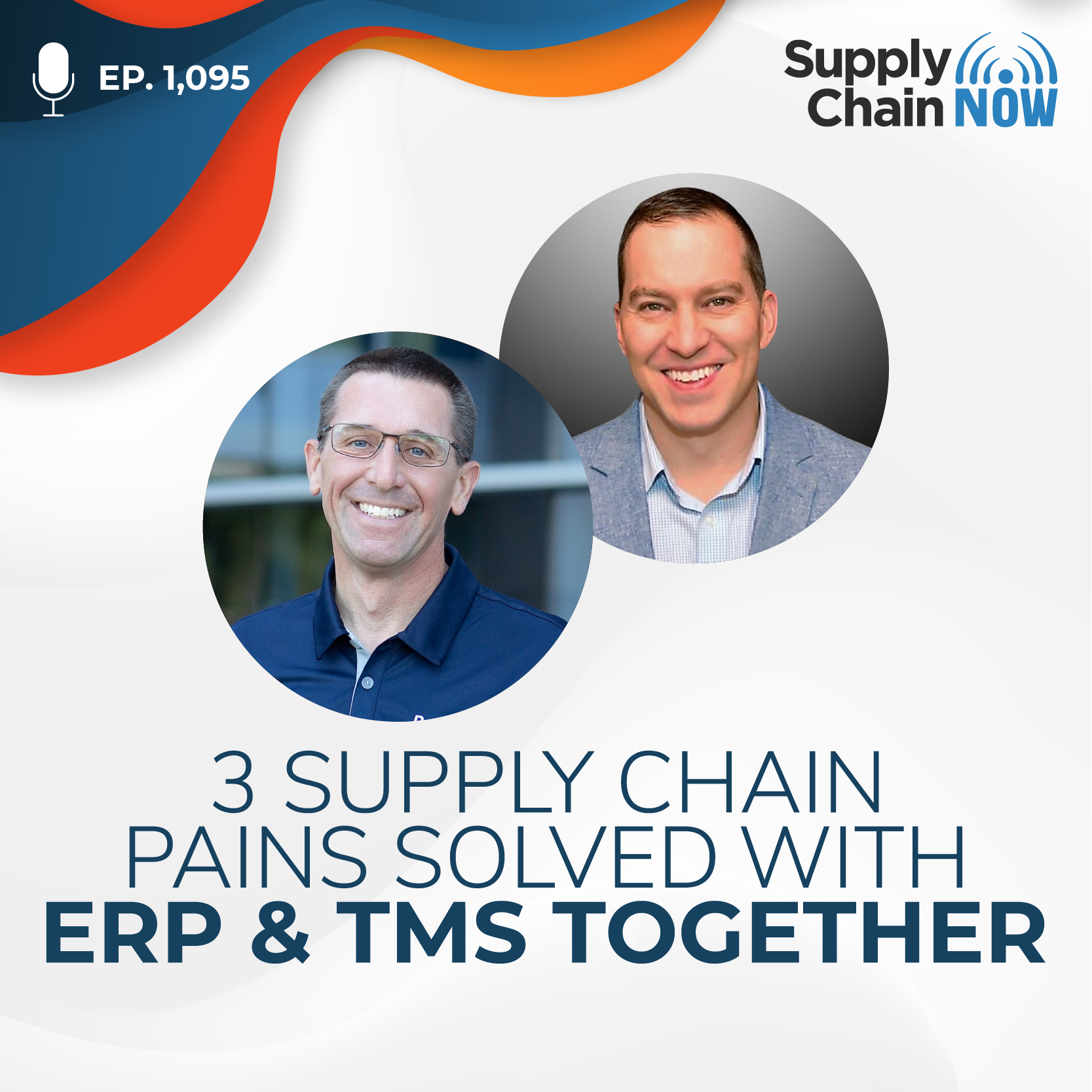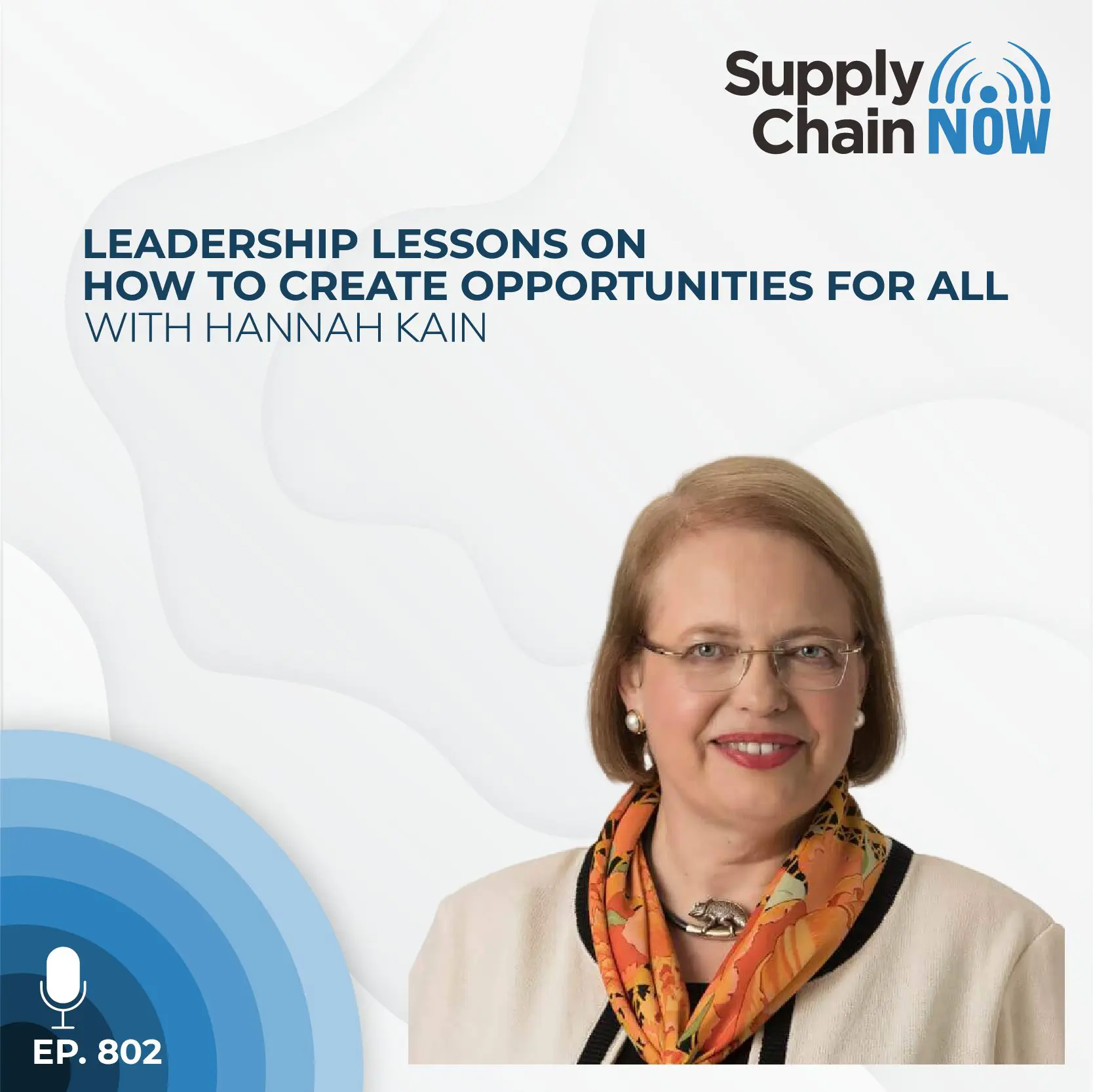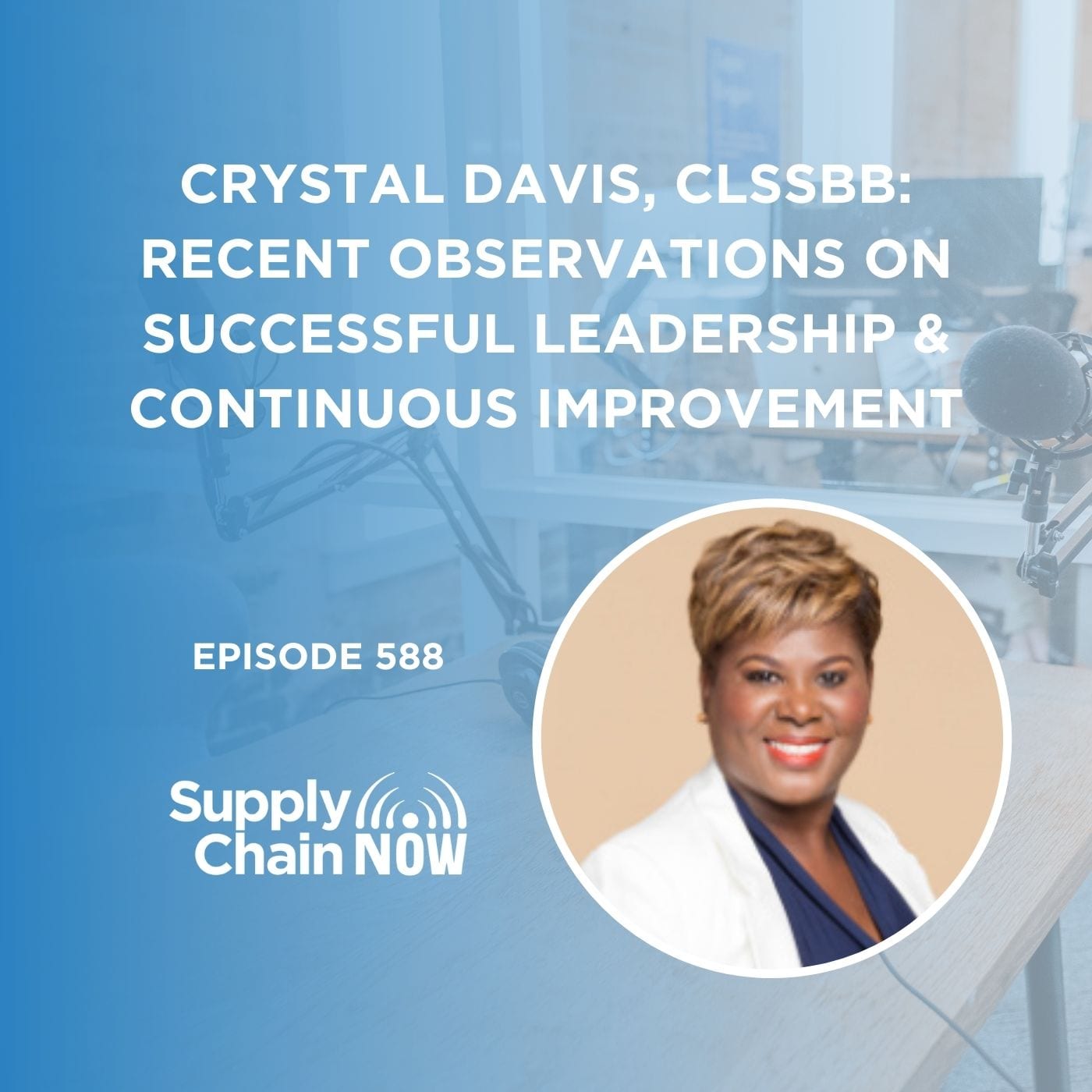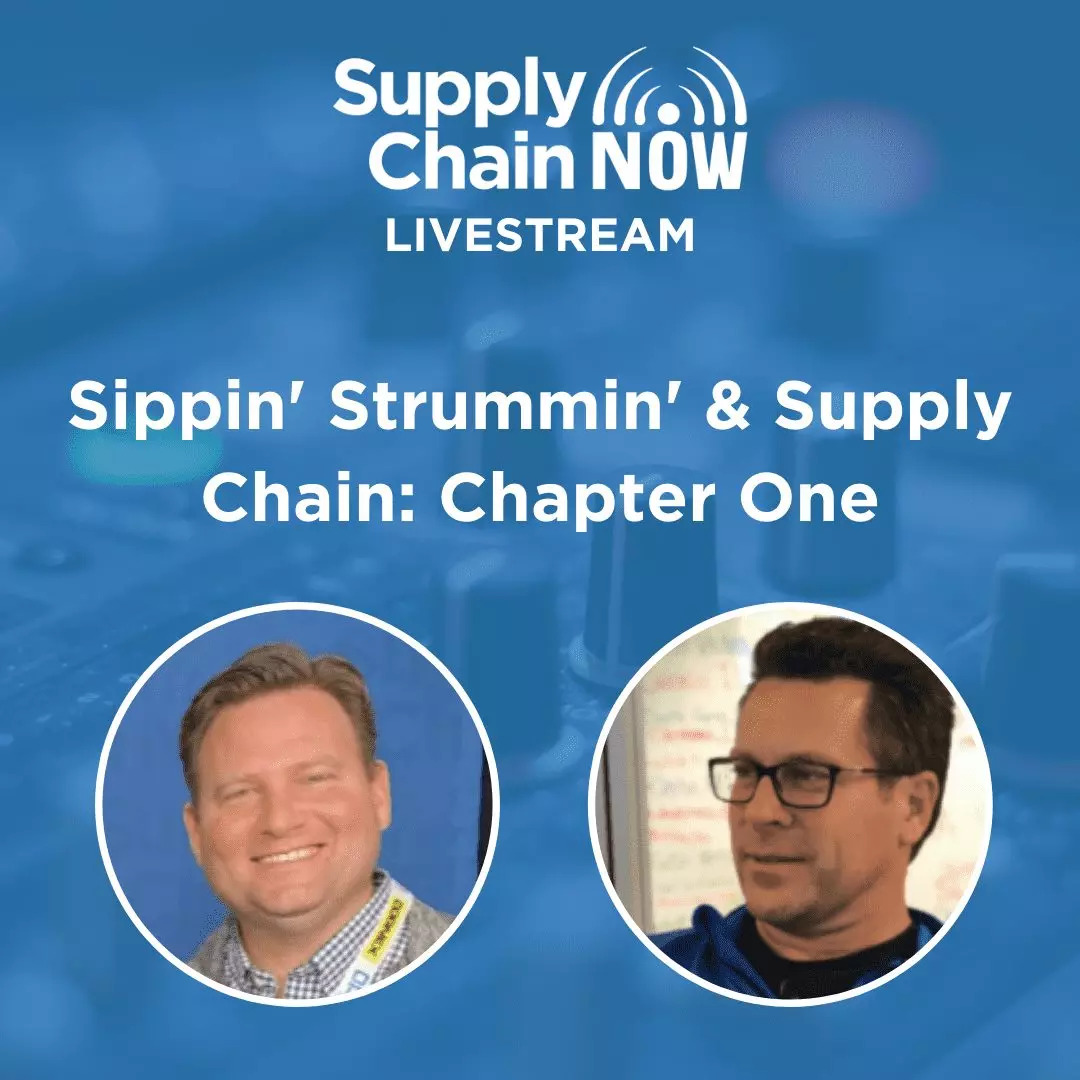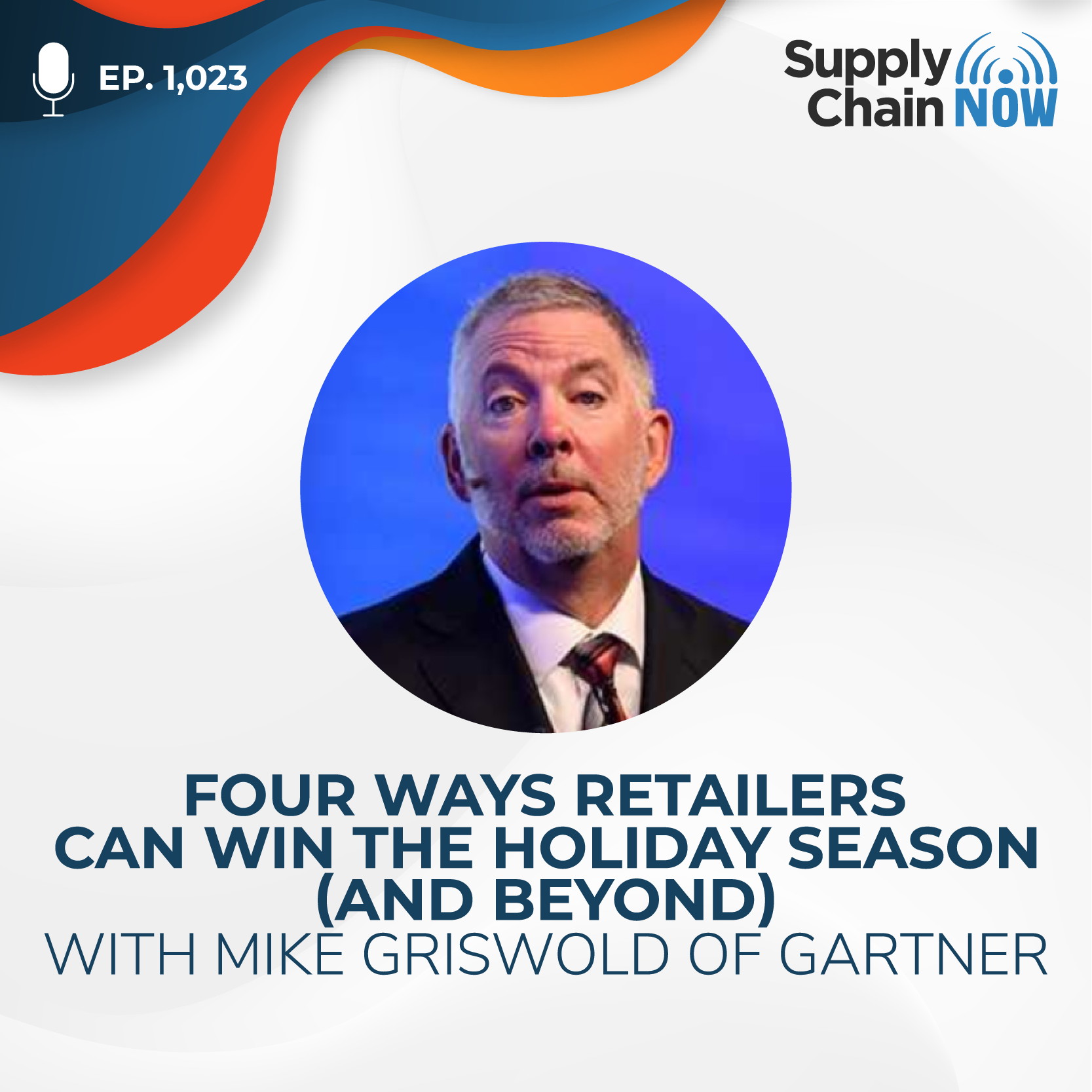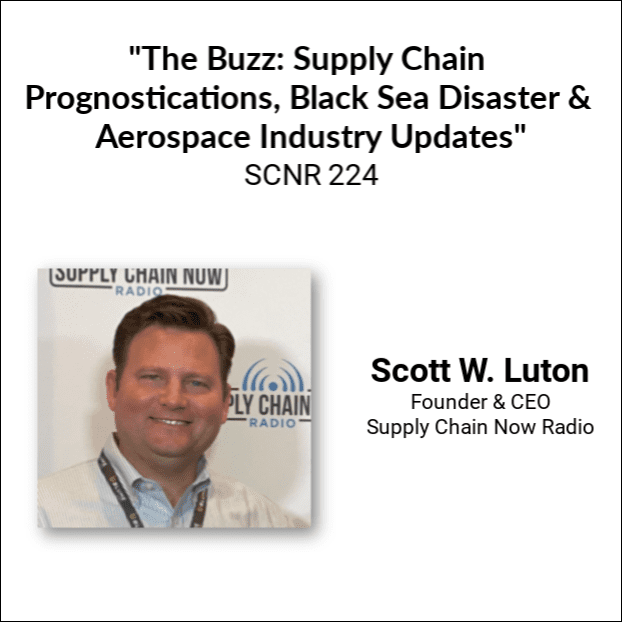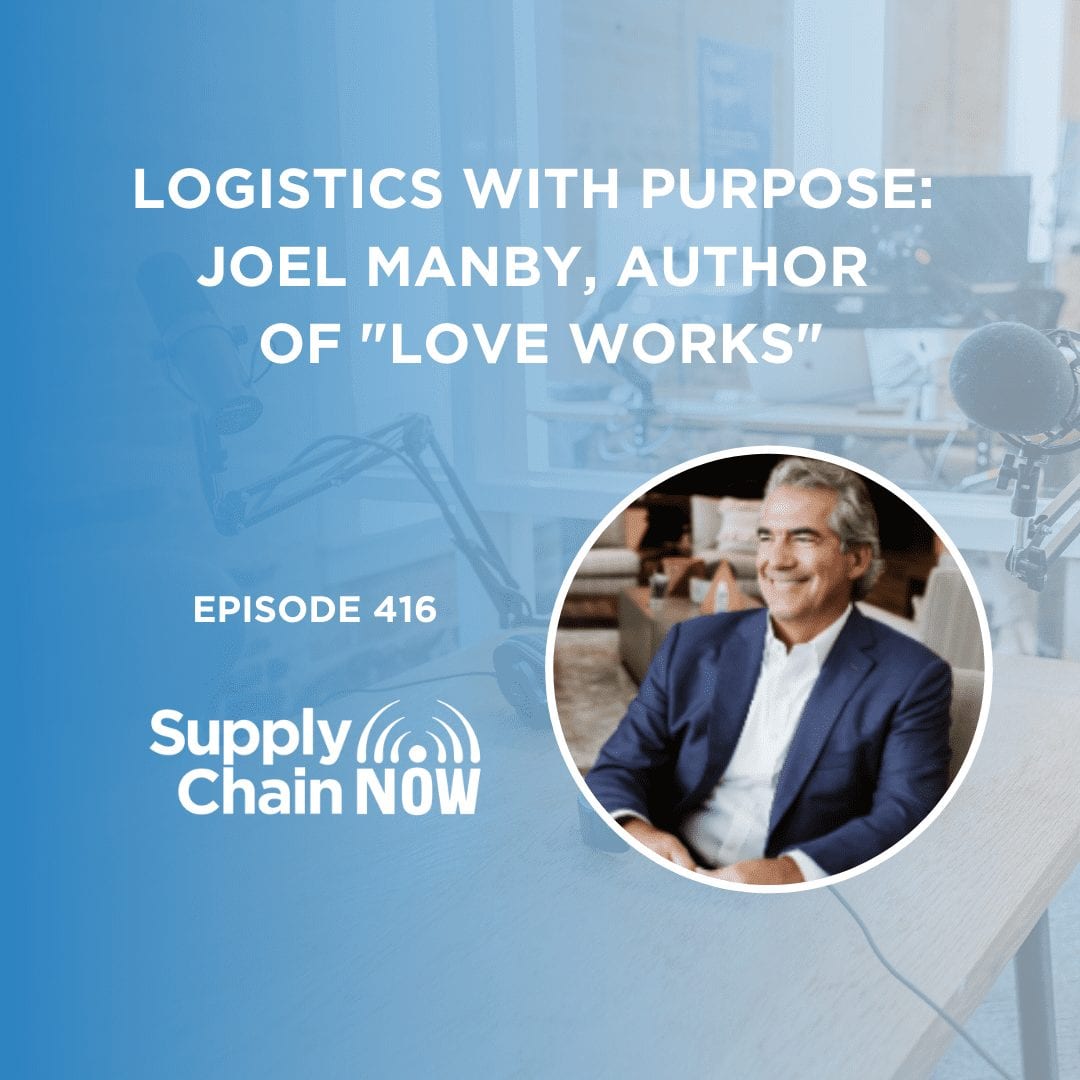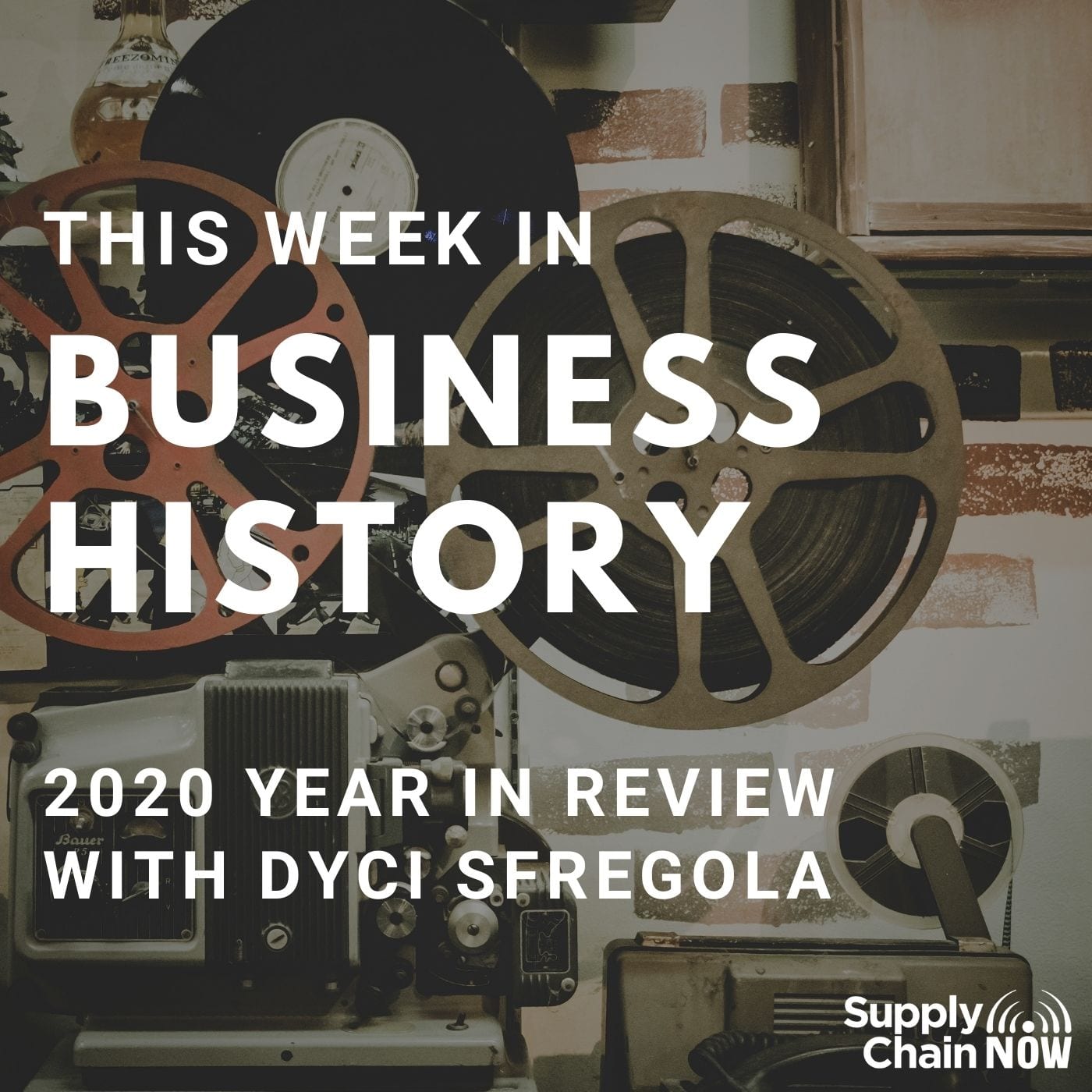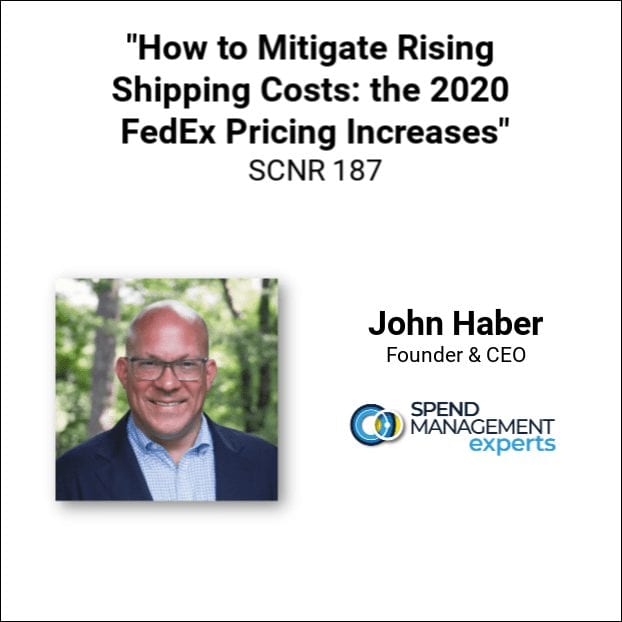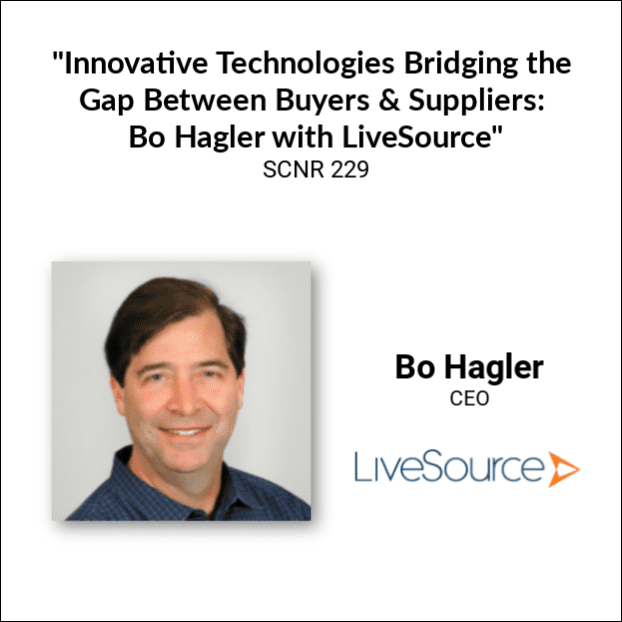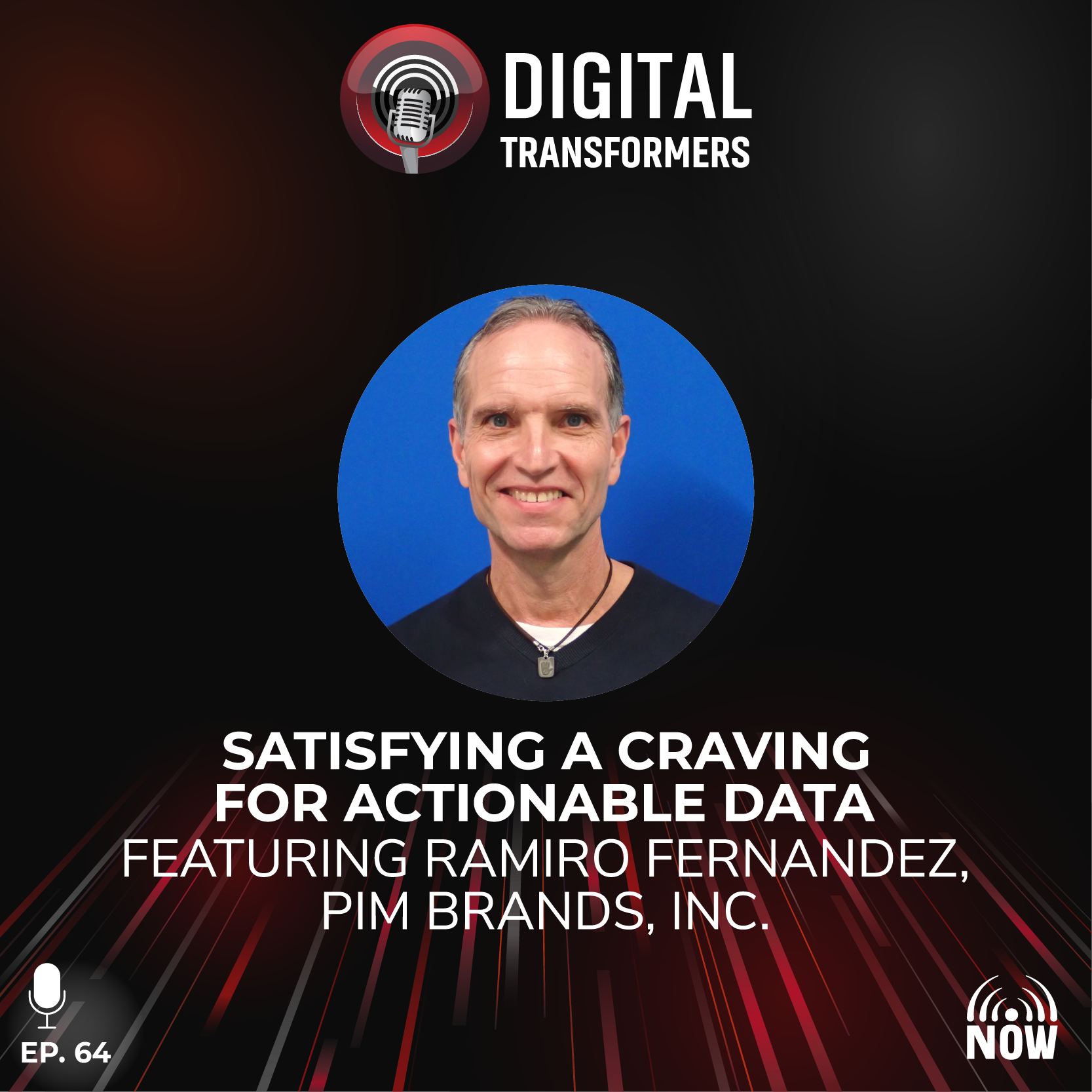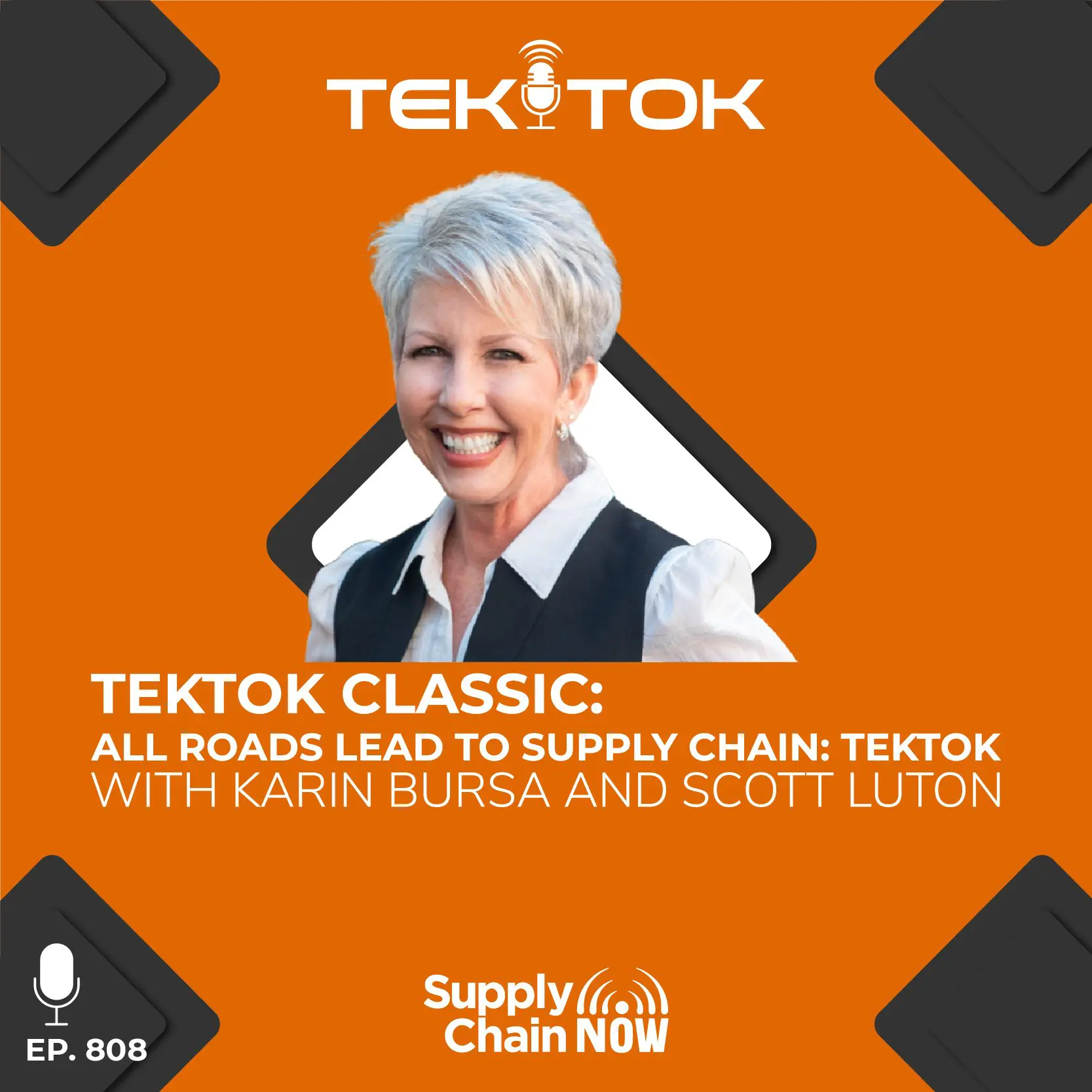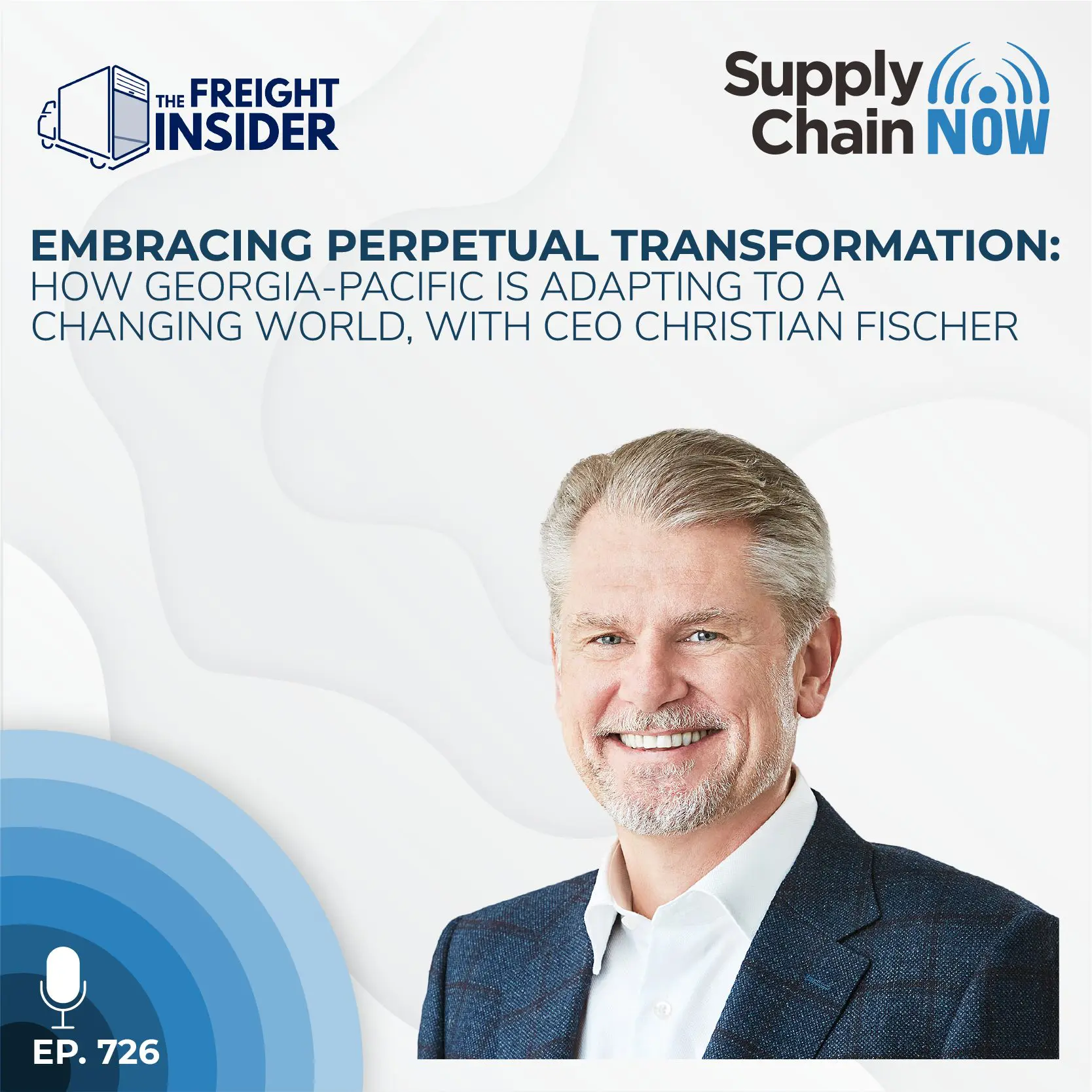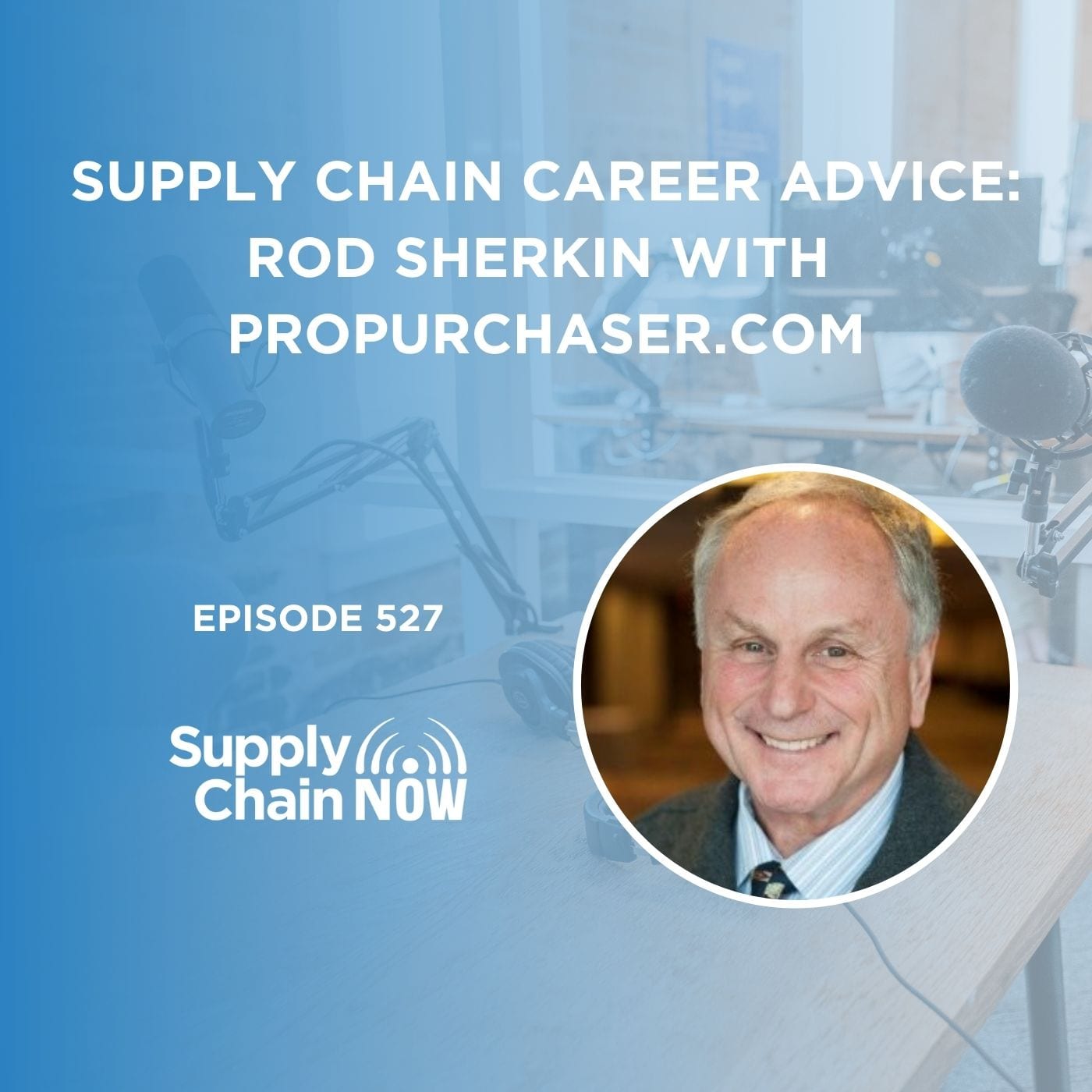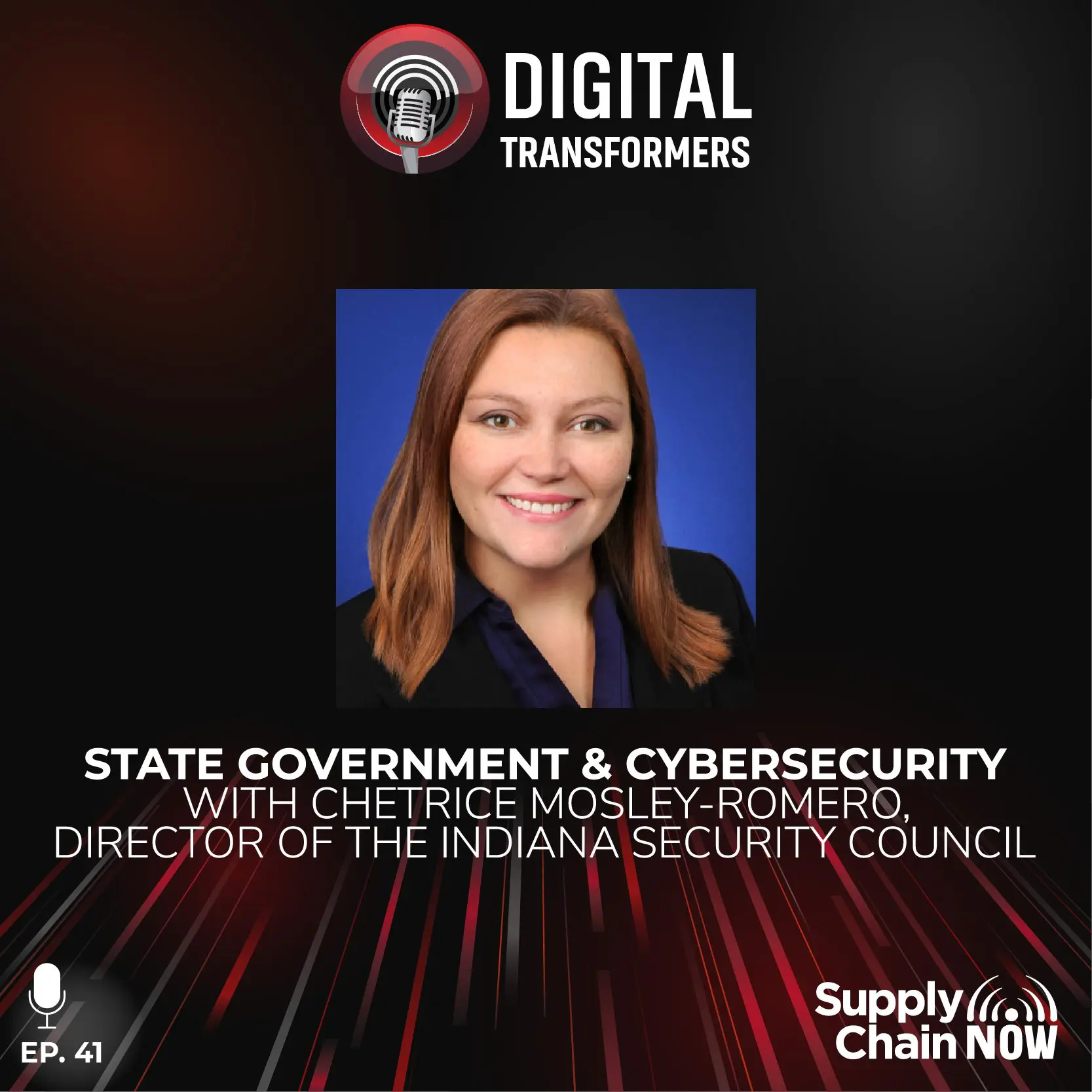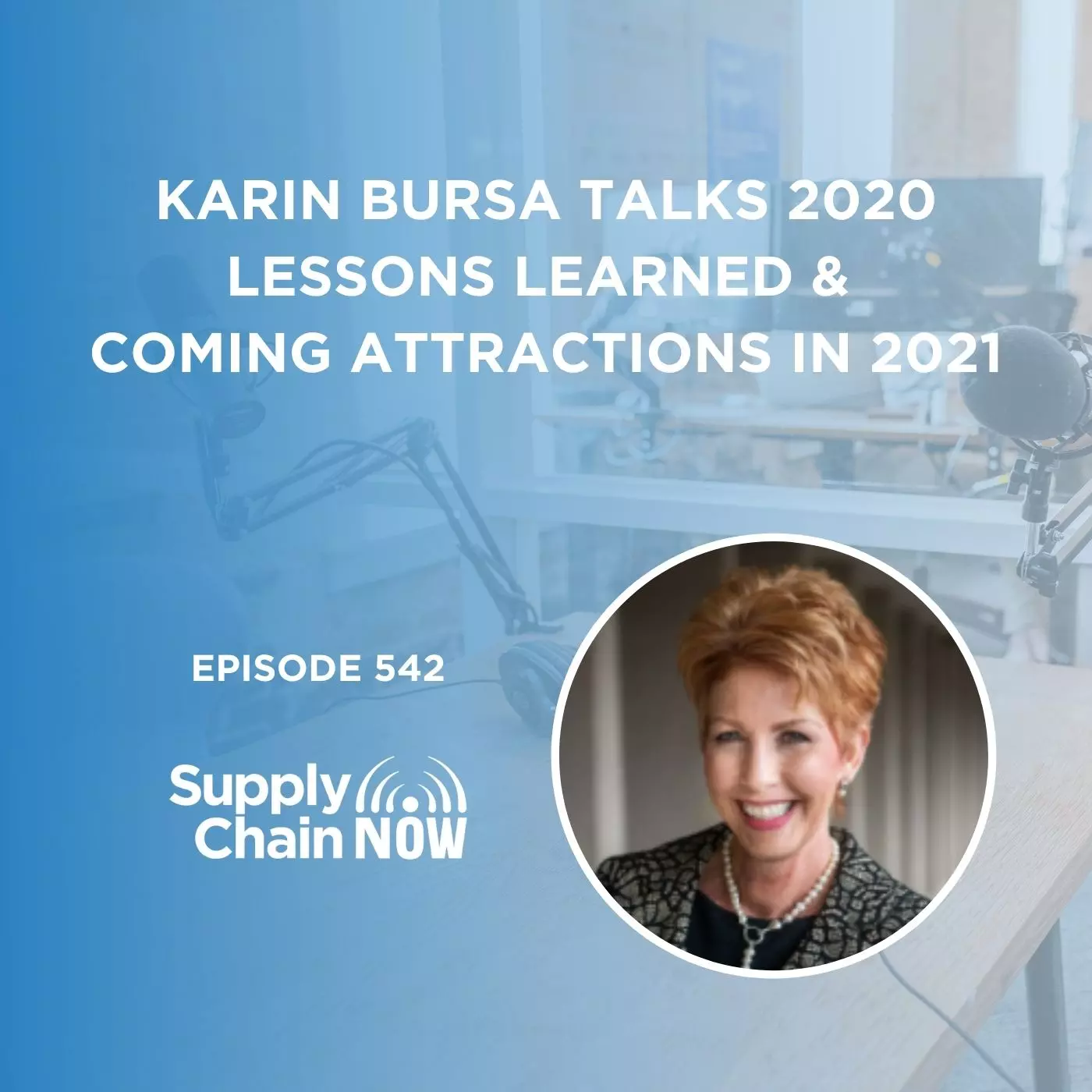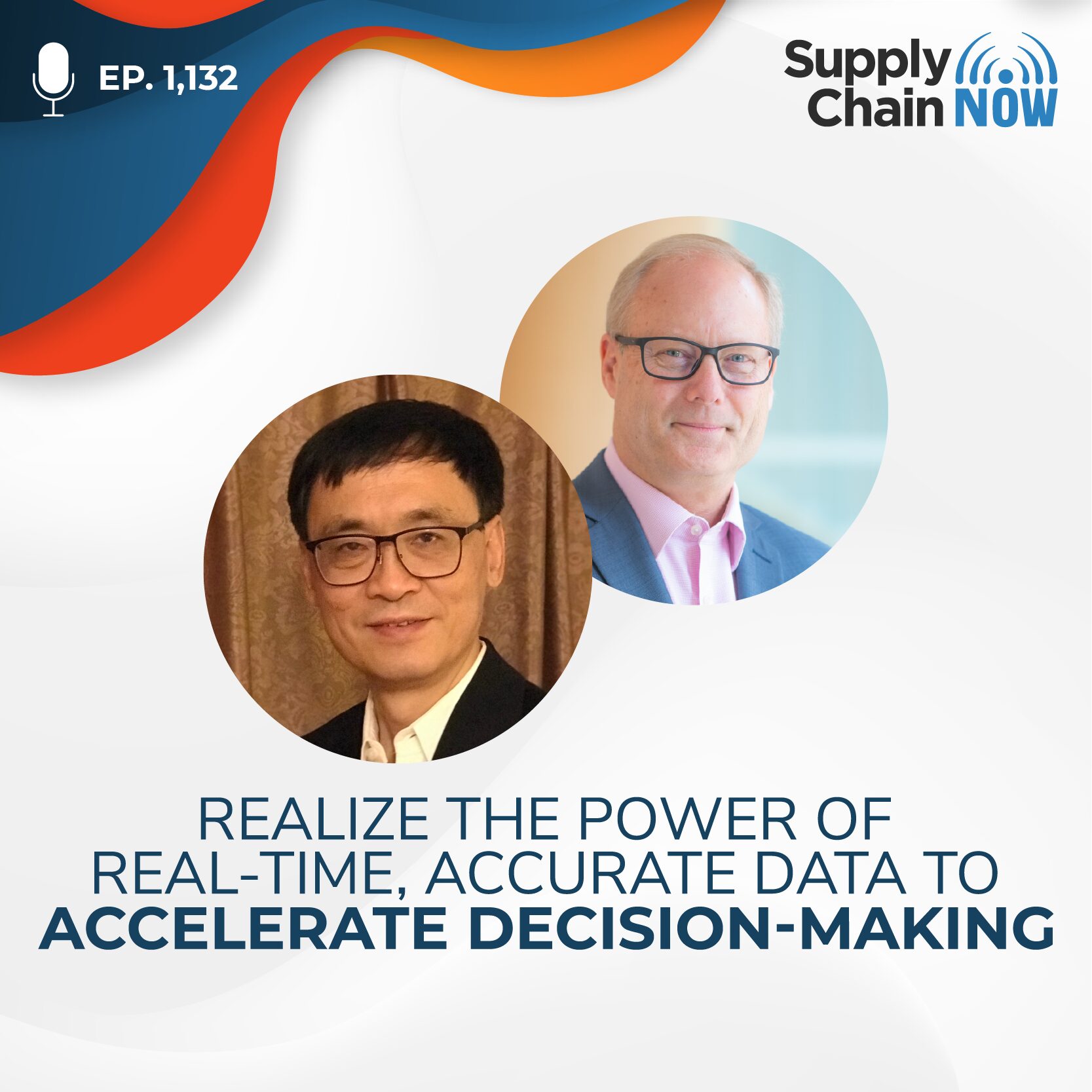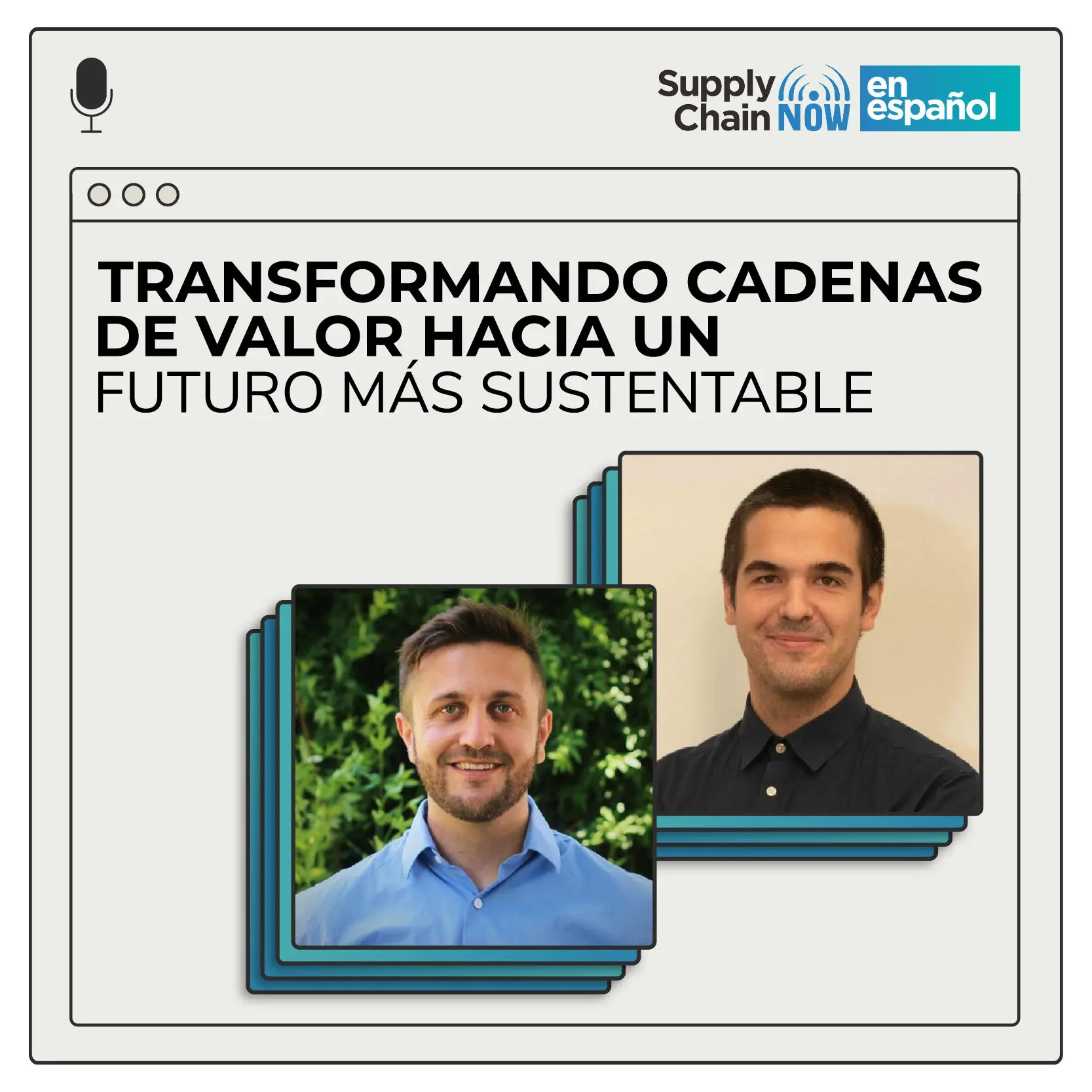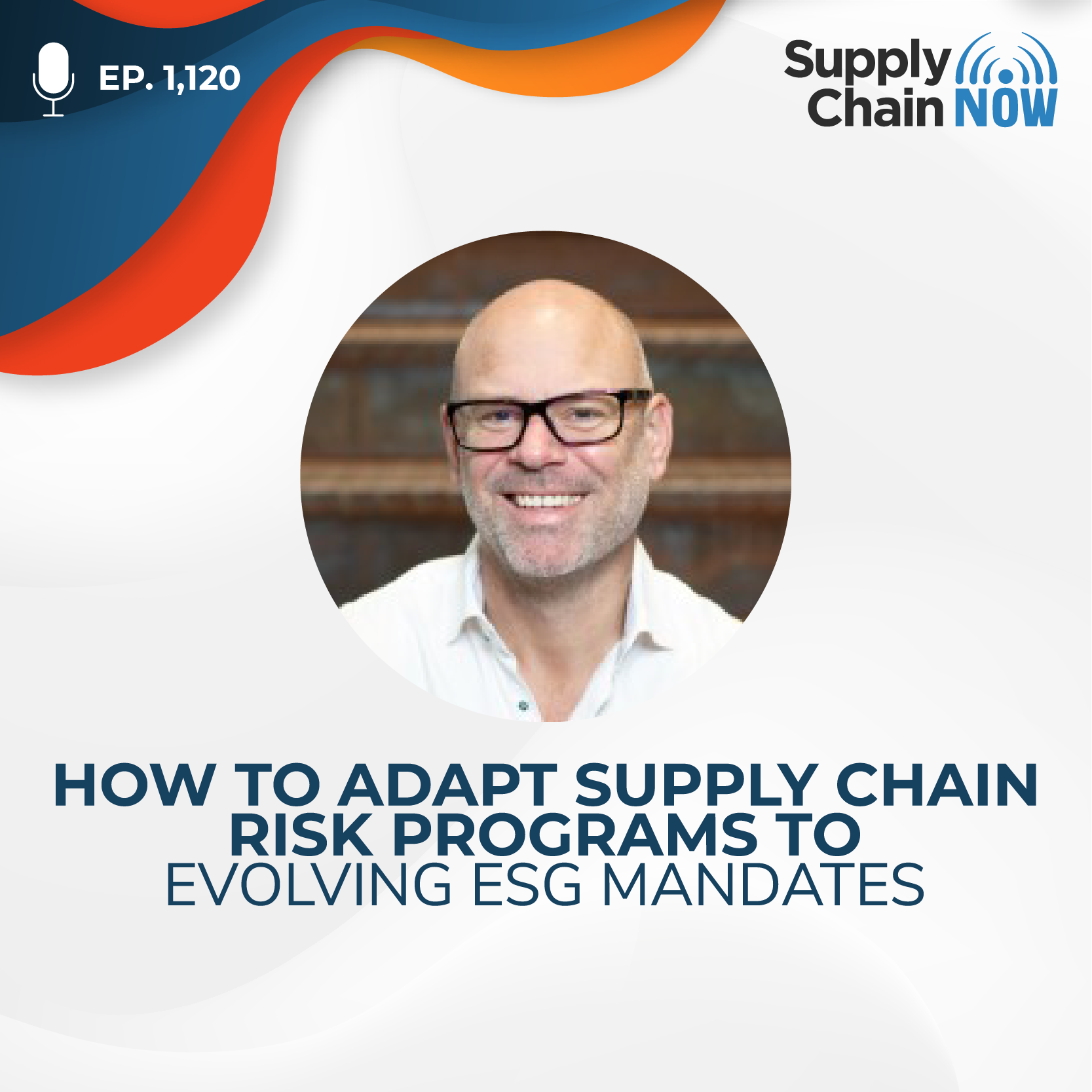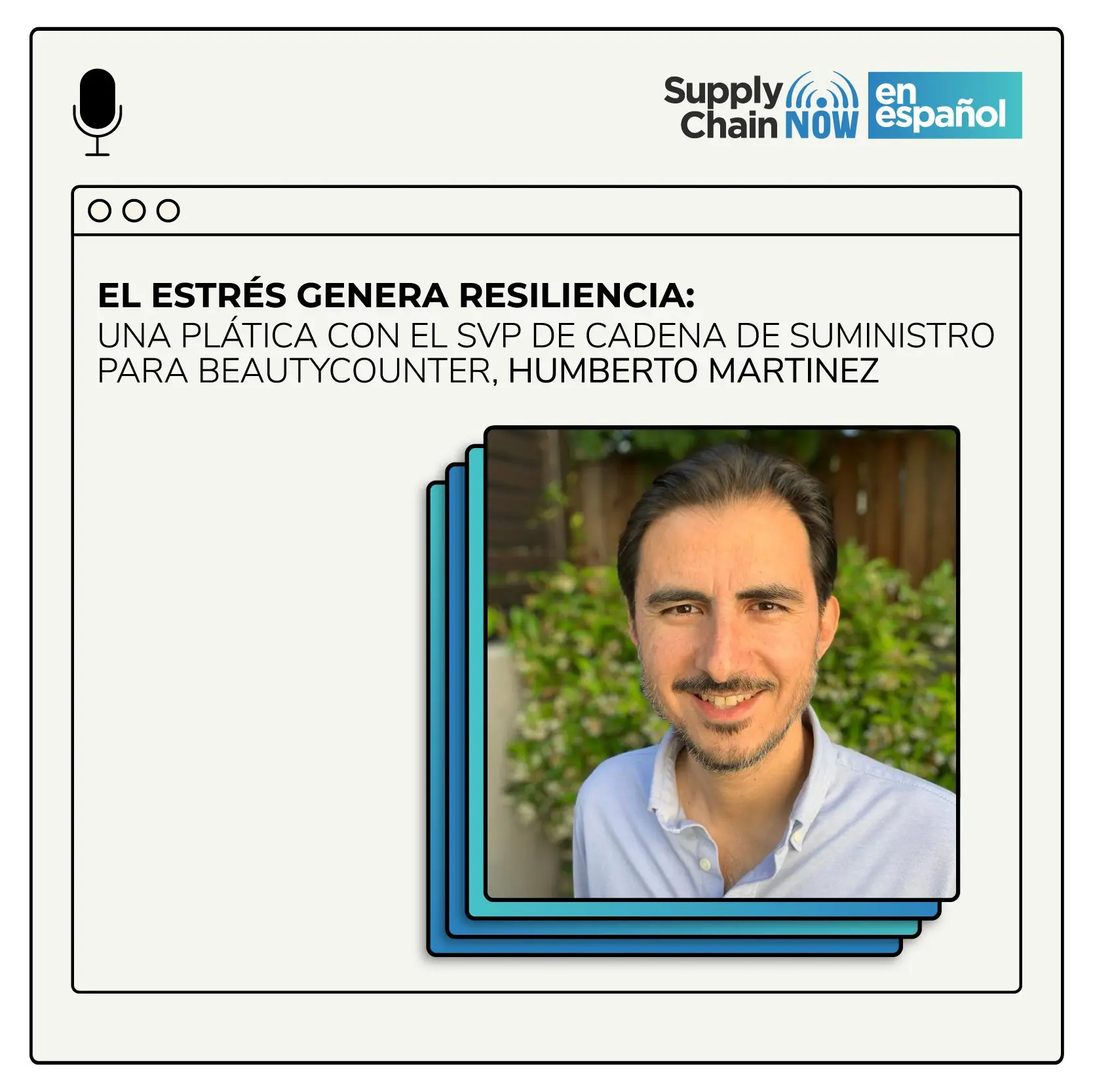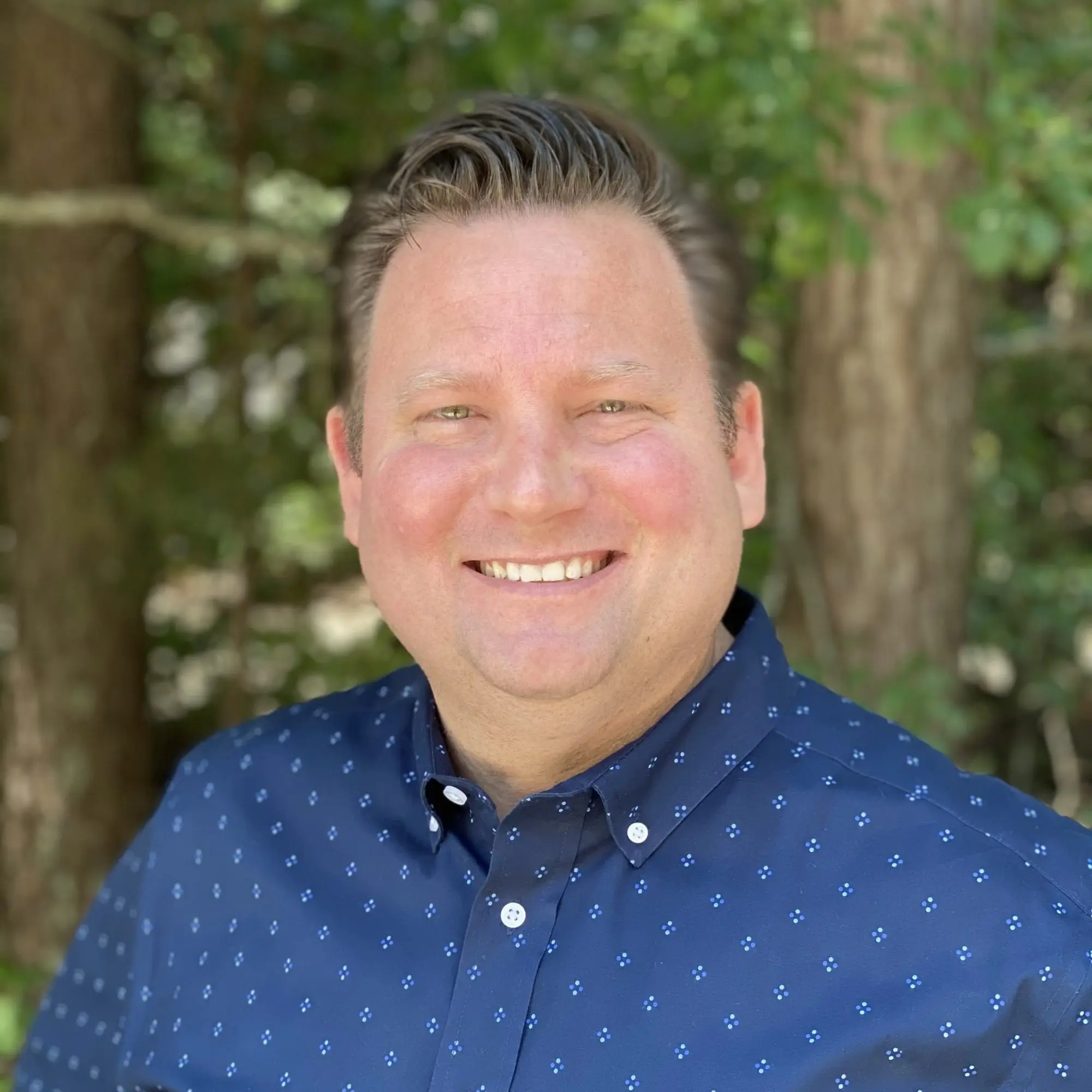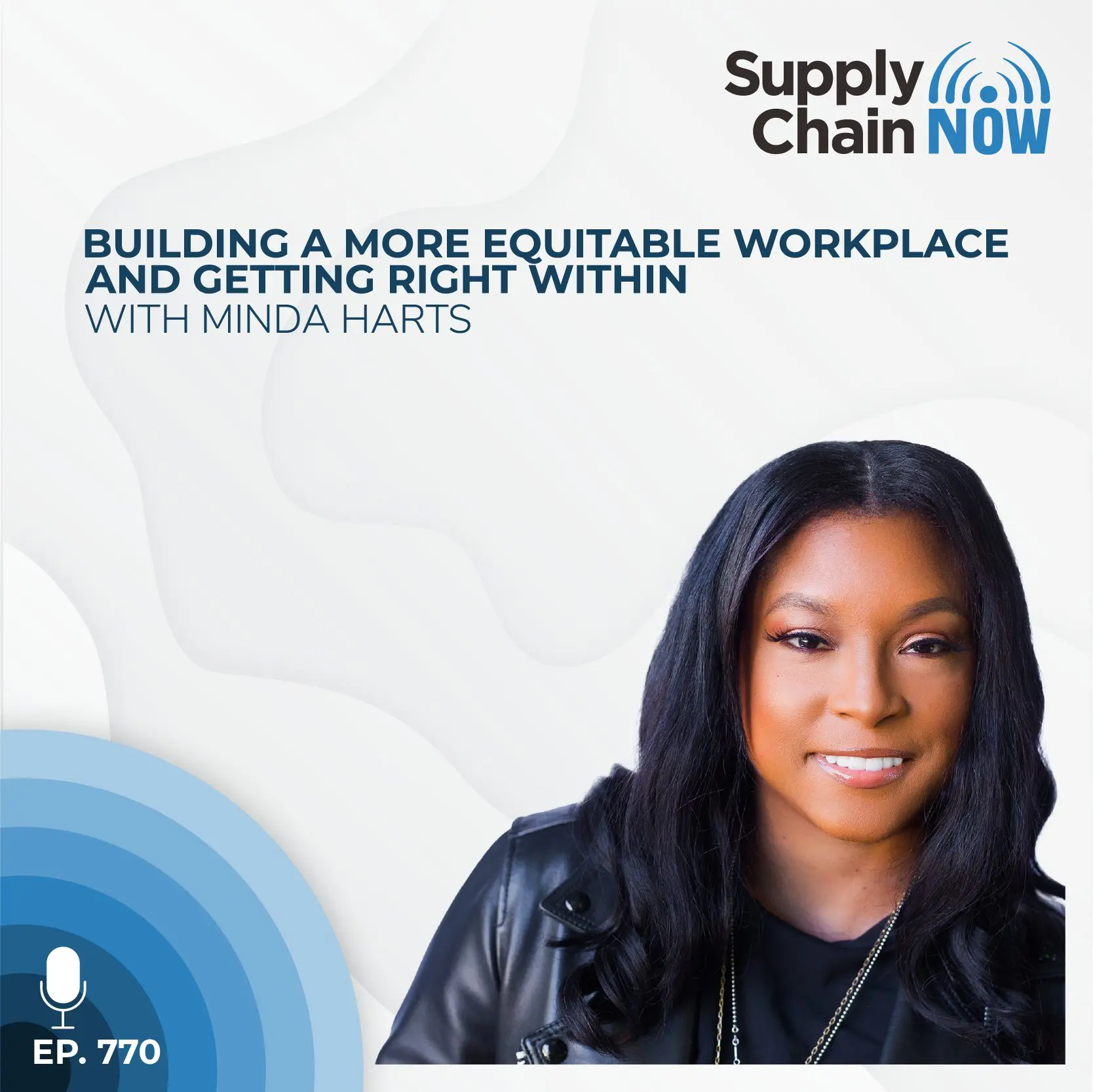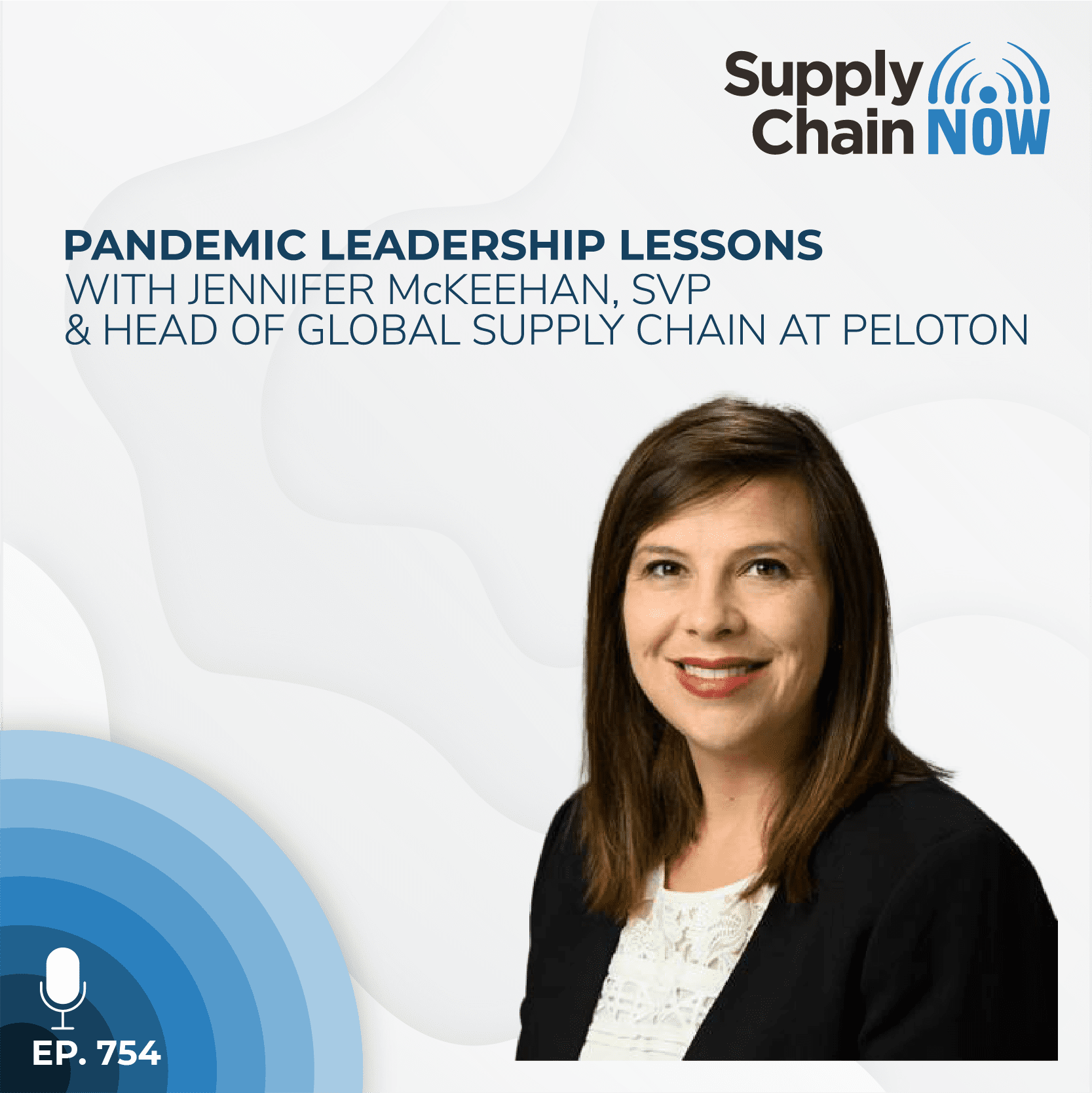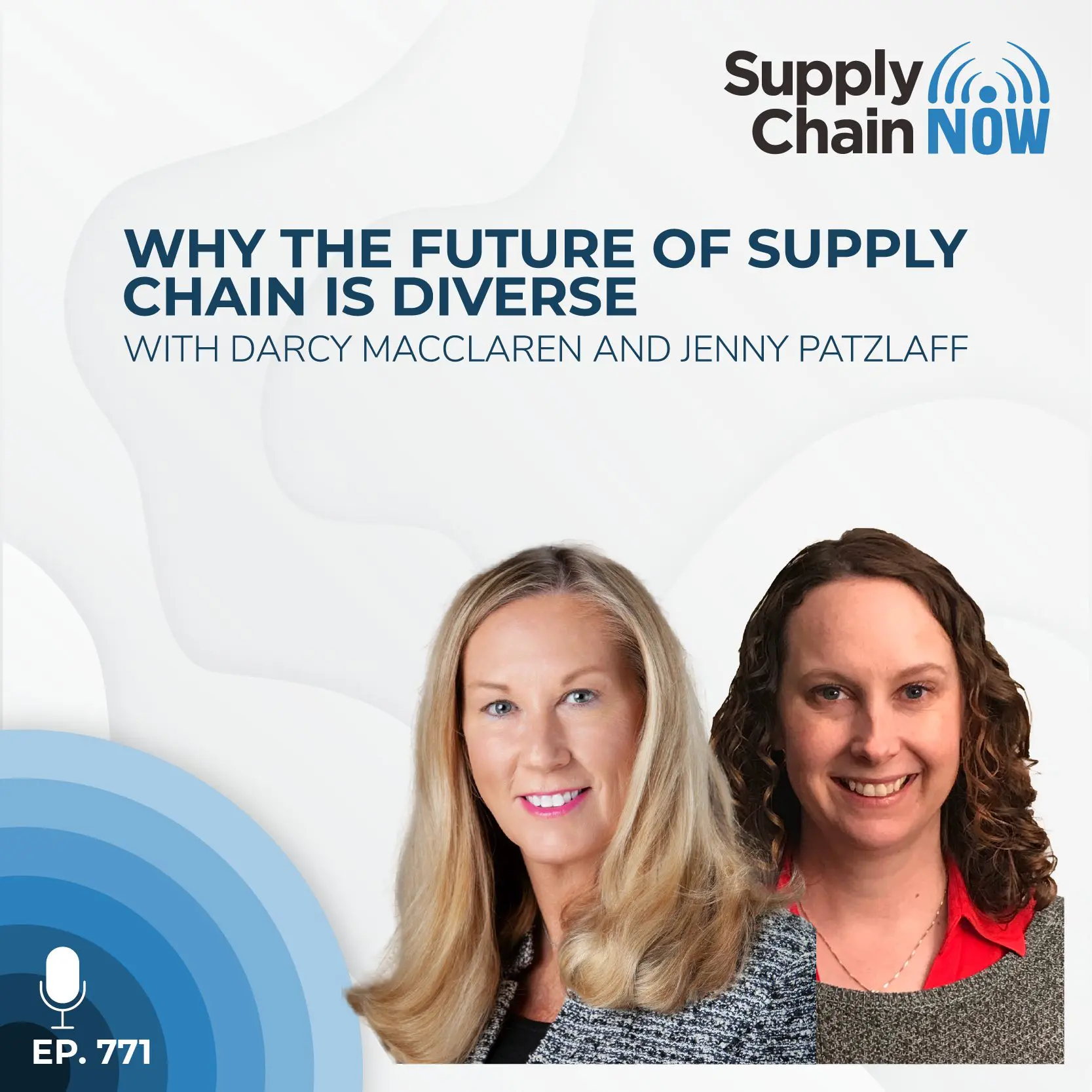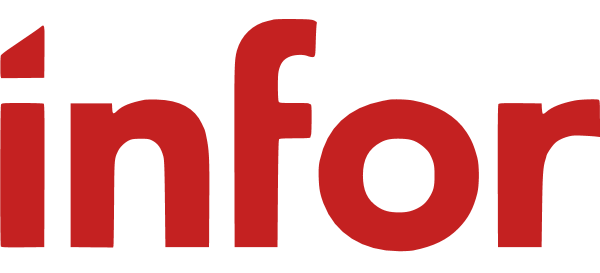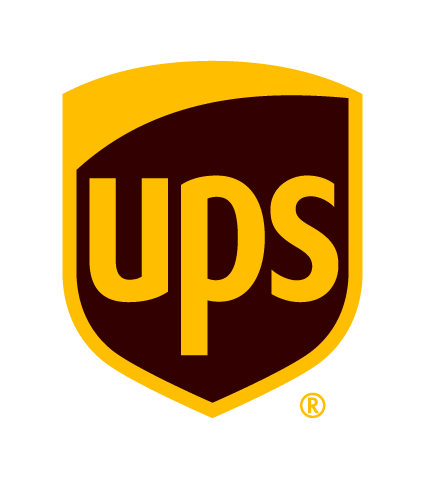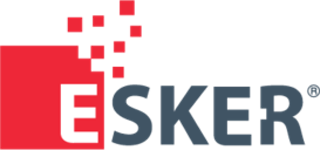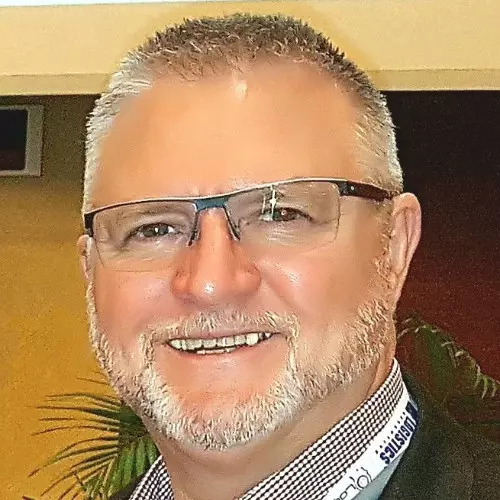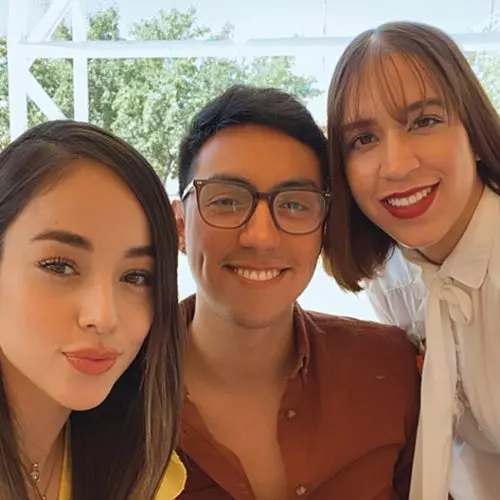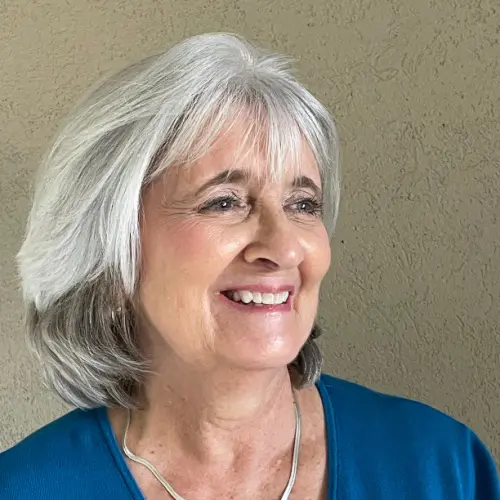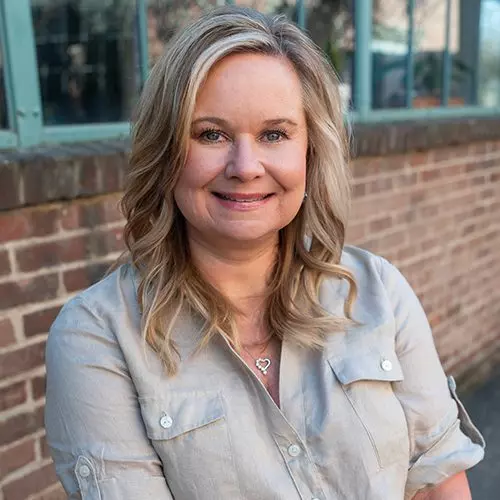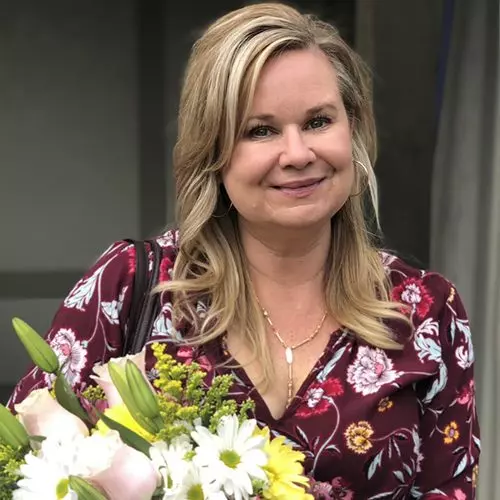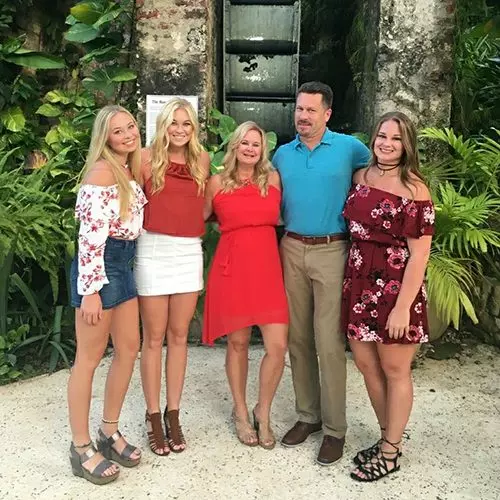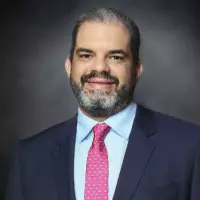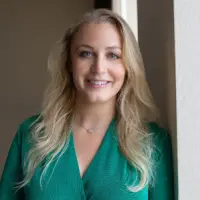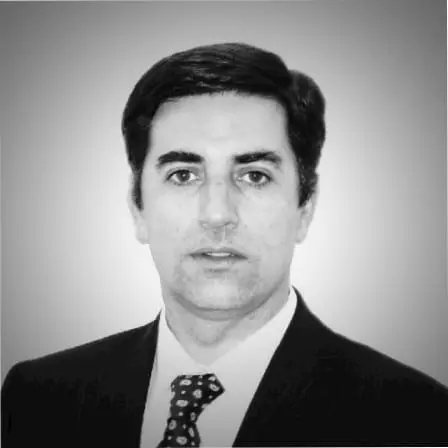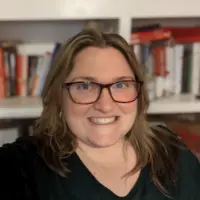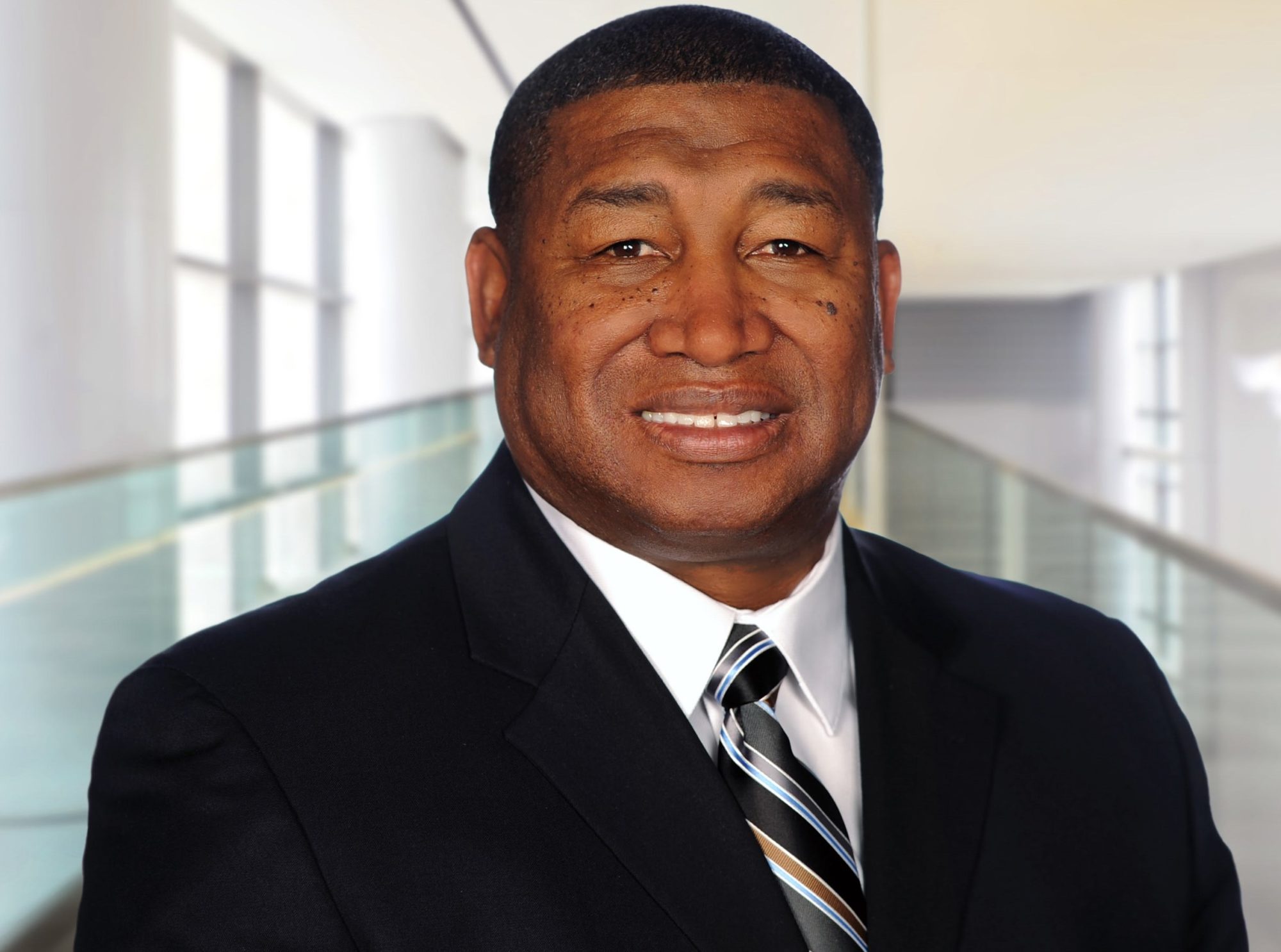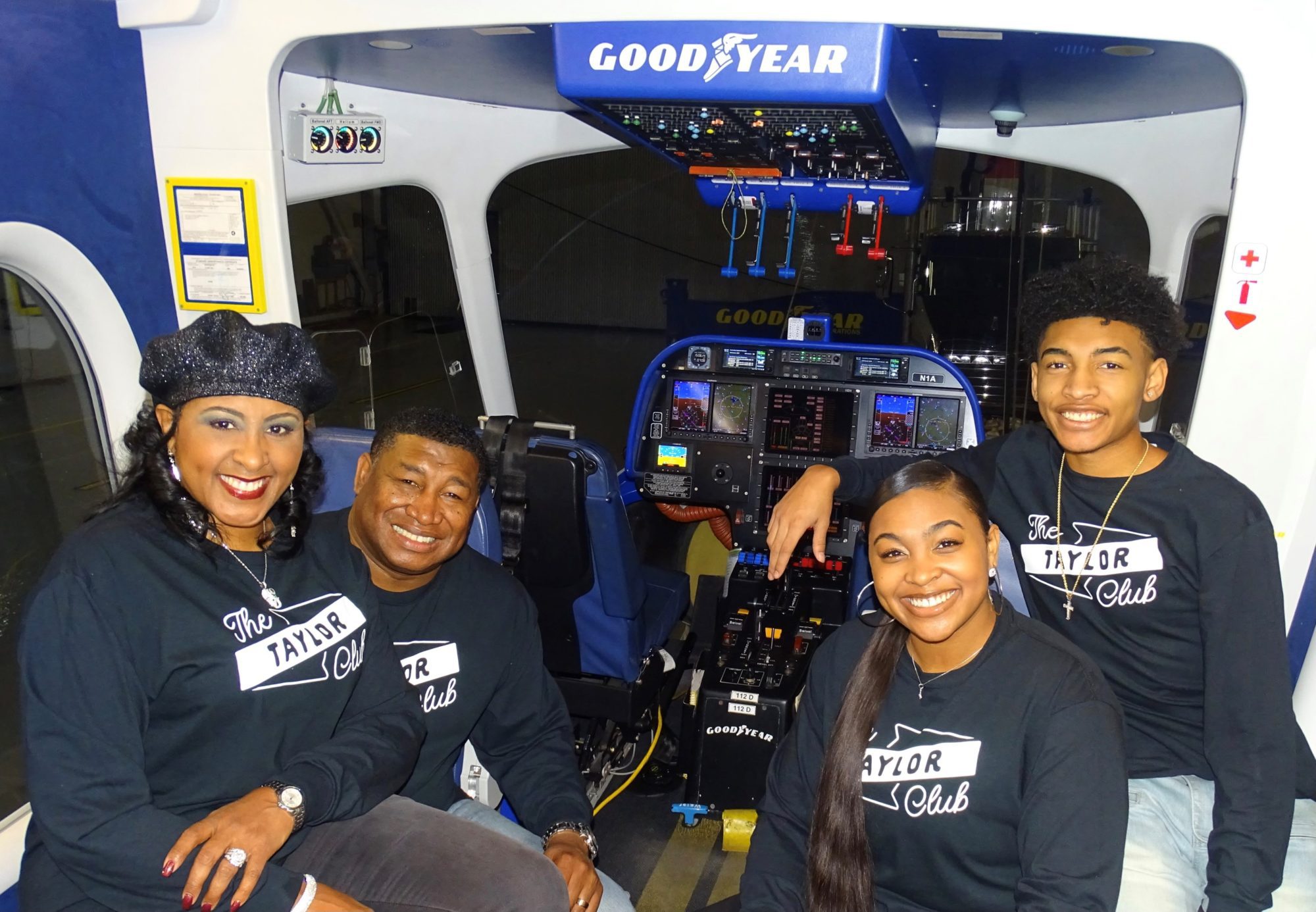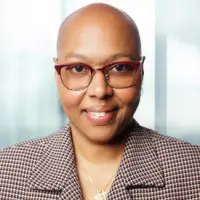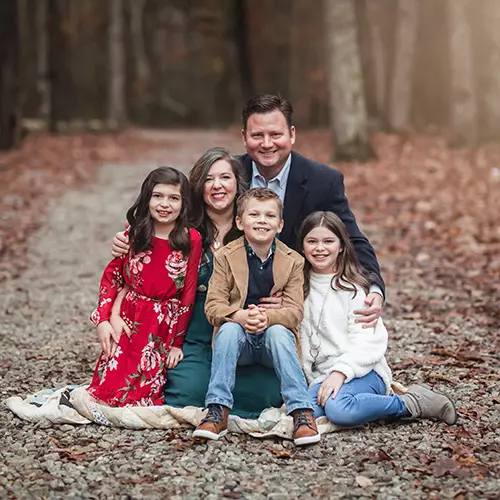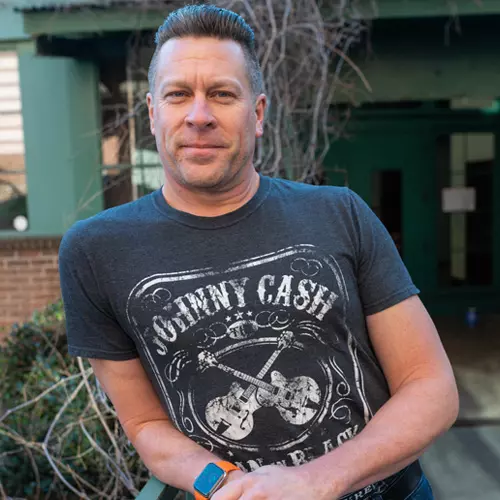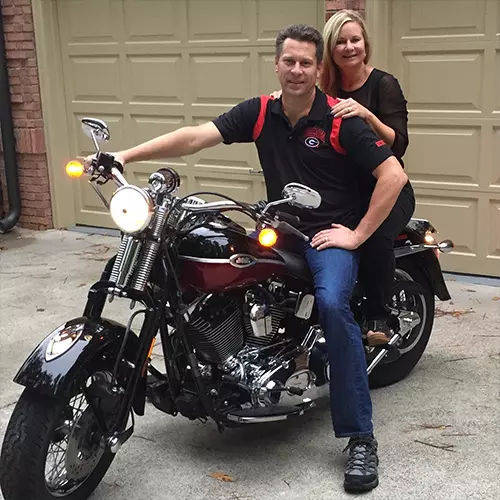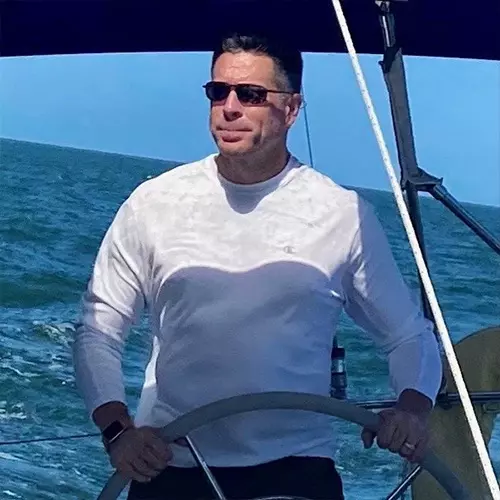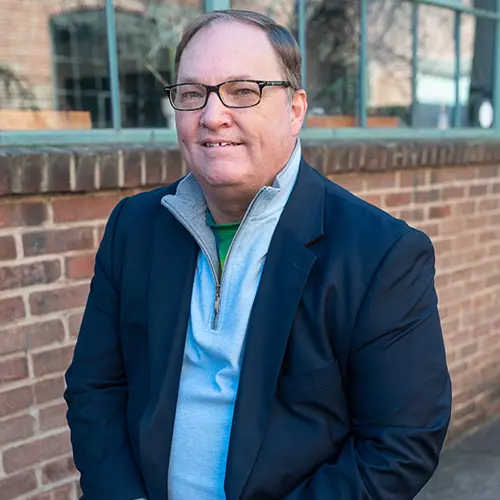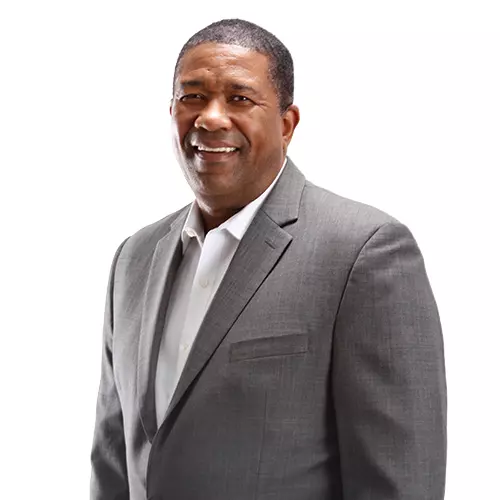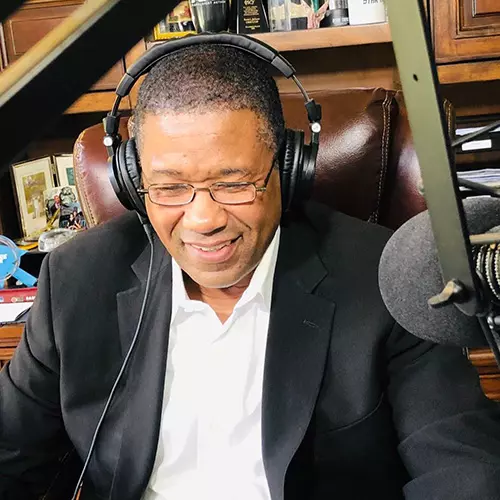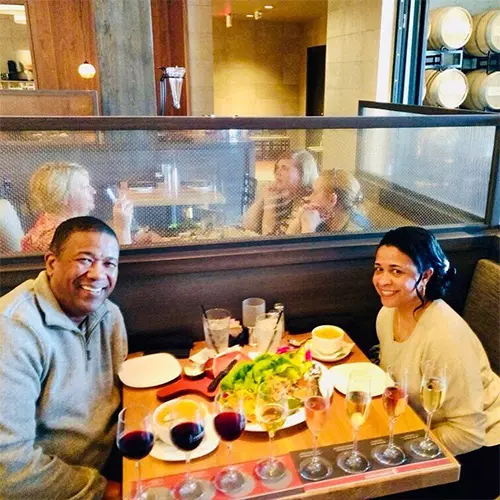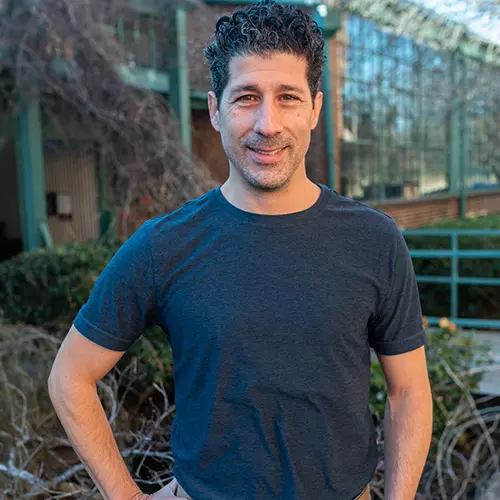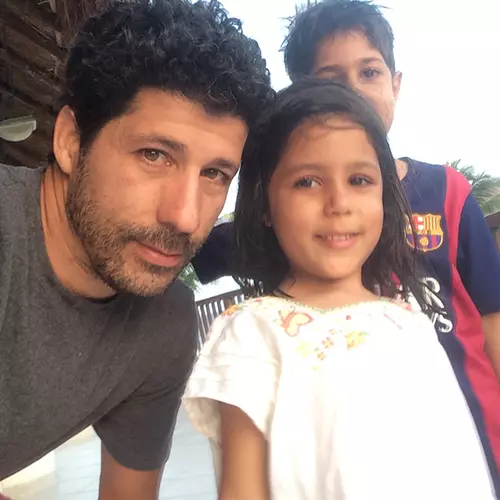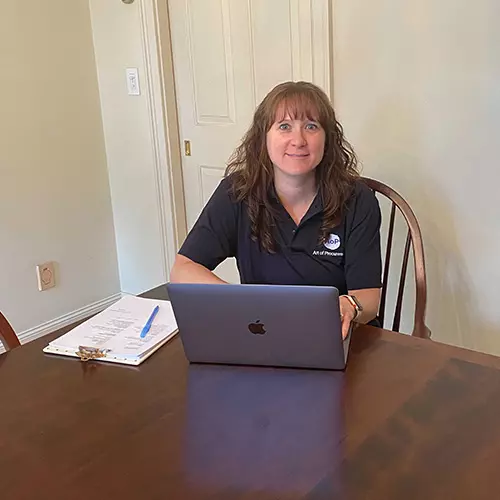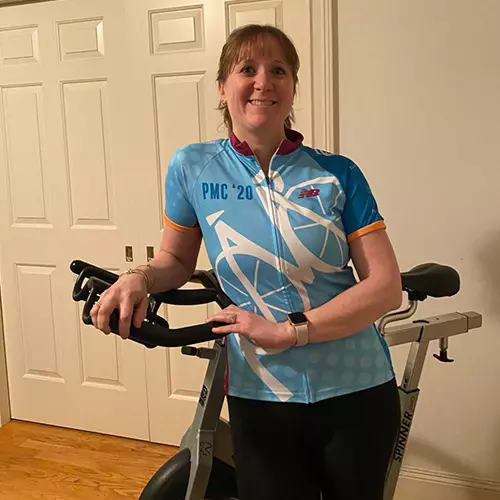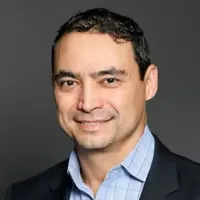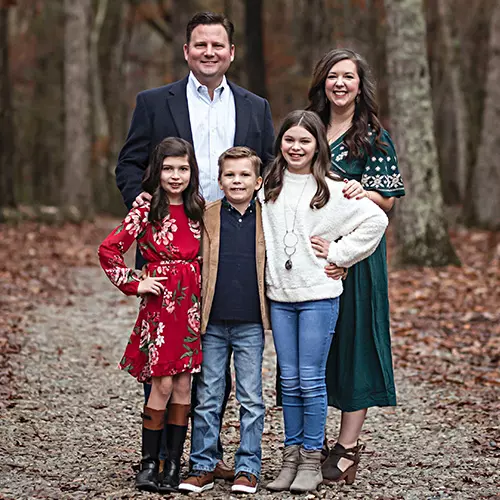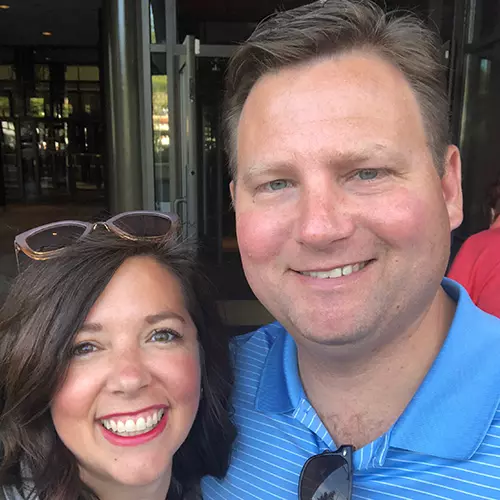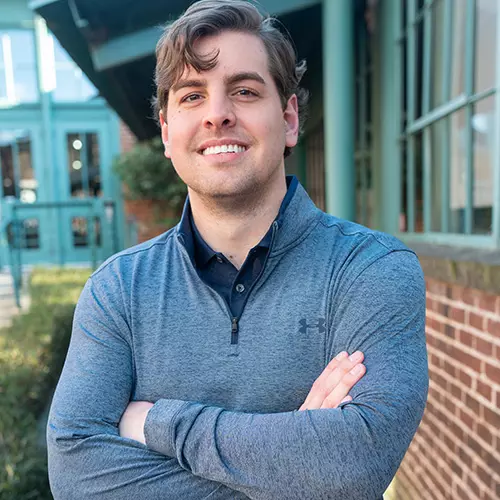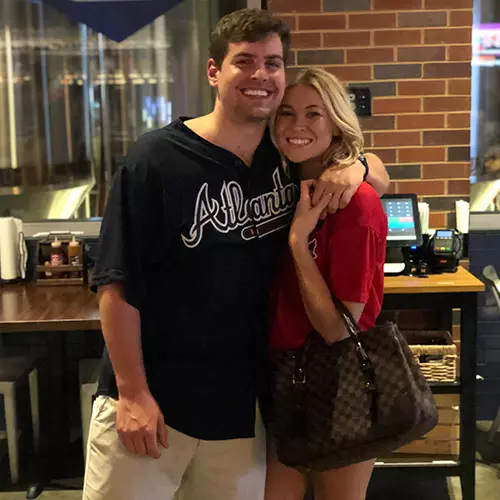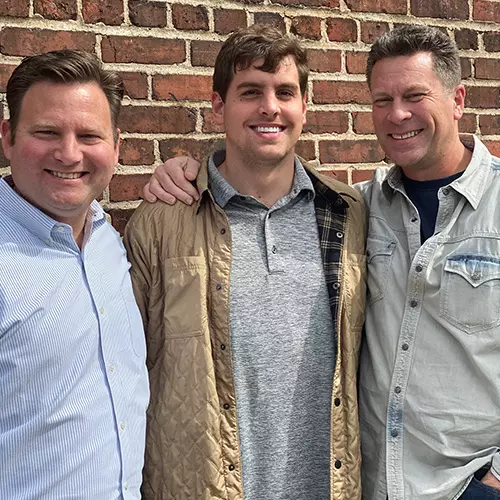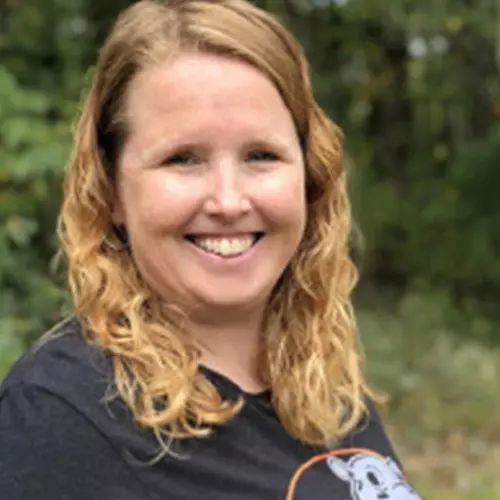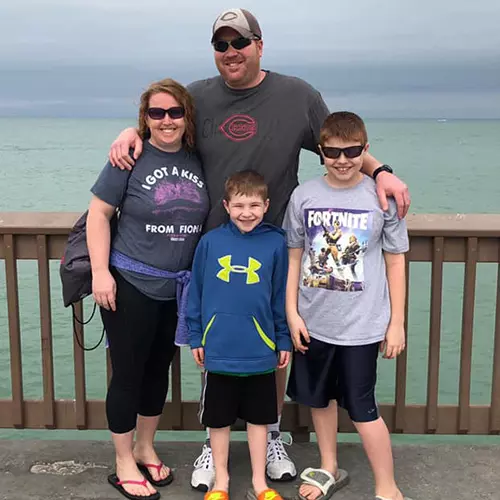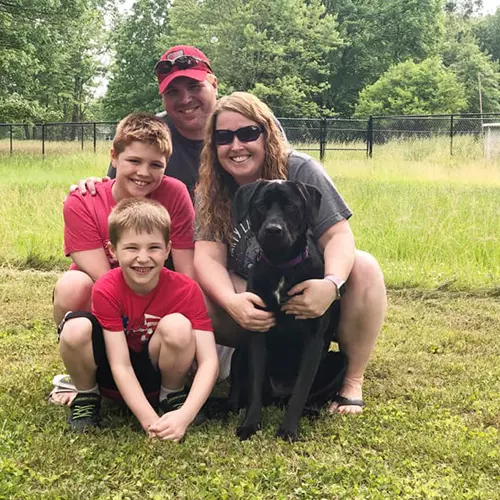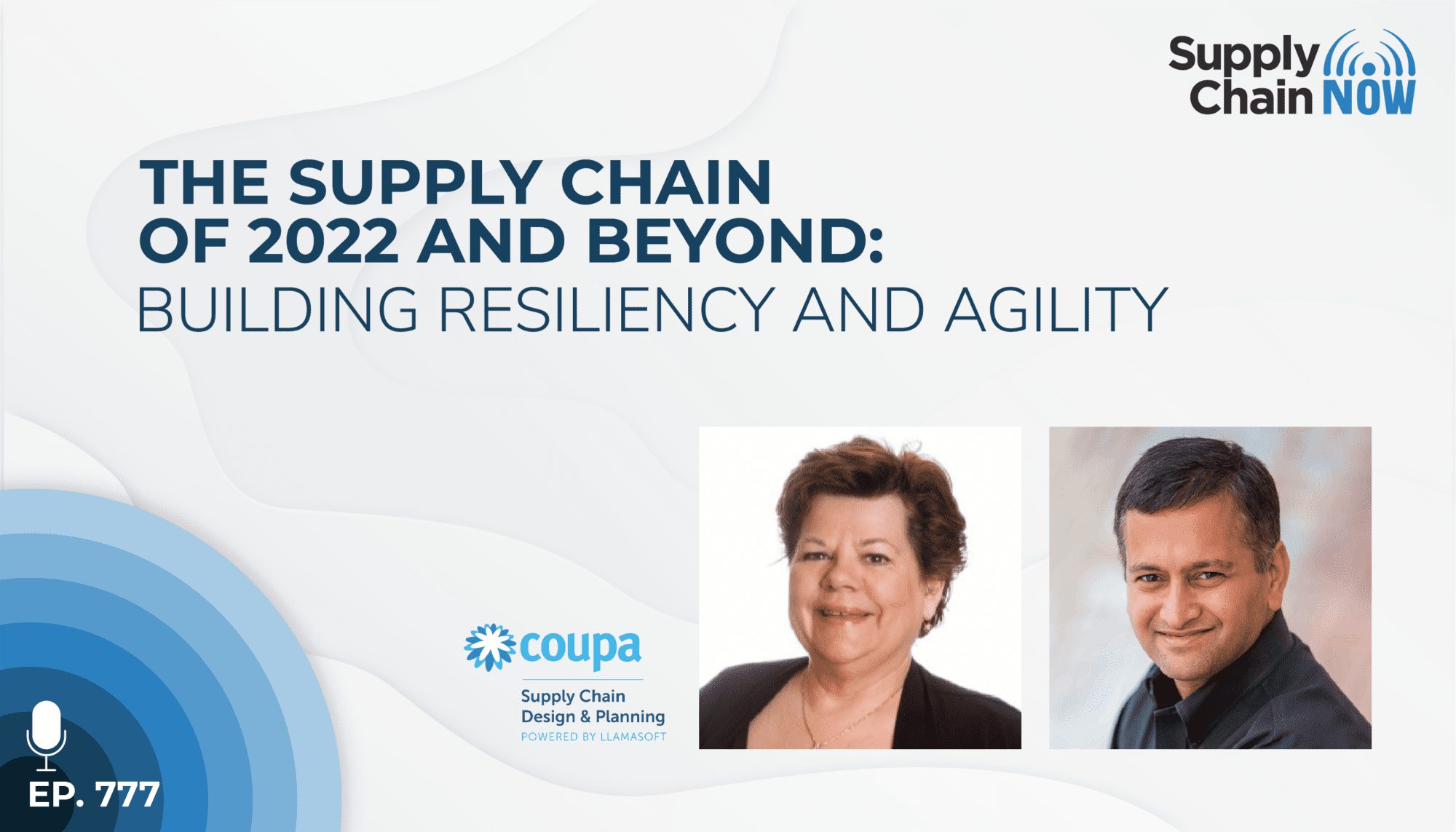
When these kinds of disruptions strike, it's very easy to get myopic, right? We tend to trade our telescope for the microscope. [...] And there is so much talk about real-time visibility, where is my shipment, right? If you know that your shipment is sitting on a ship that is sitting at the port for two weeks, it's like watching a crash in slow motion - because there are things that you can do proactively.
-Dr. Madhav Durbha
Episode Summary
Could supply chain design have saved us from some of the logistical headaches of 2021? And in a world of constant variability, are there really any “safe assumptions” left to guide supply chain planning? It’s time for a reset – and in this episode, we’re bringing you the perfect pair of vision and insight with Lora Cecere, Founder of Supply Chain Insights, and Dr. Madhav Durbha, Vice President of Supply Chain Strategy at Coupa Software. They join host Scott to discuss:
1) The top 5 reasons supply chain design isn’t succeeding at most organizations
2) How to effectively implement technologies that can drive decisions (and not just data)
3) Who’s succeeding in the industry when it comes to continuous design
4) Predictions for the supply chain’s future
5) Five supply chain assumptions to leave behind heading into 2022
Episode Transcript
Intro/Outro (00:03):
Welcome to Supply Chain Now, the voice of global supply chain. Supply Chain Now focuses on the best in the business for our worldwide audience, the people, the technologies, the best practices, and today’s critical issues, the challenges, and opportunities. Stay tuned to hear from those making global business happen right here on Supply Chain Now.
Scott Luton (00:32):
Hey. Hey. Good morning. Scott Luton with you here on Supply Chain Now. Welcome to today’s webinar. Folks, you’re in store for something really special today, resiliency and agility. Hey, how many times have you heard those words in supply chain conversations this year? How about network or supply chain design? Has your organization been rethinking its approach there? Well, today, you have the opportunity to learn from two of the best in the business as we have Lora Cecere and Dr. Madhav Durbha with us here today. Lora, how are you doing?
Lora Cecere (01:07):
I couldn’t be doing better. You know, as they say at West Virginia, fine as frog hair. And you?
Scott Luton (01:11):
Almost fine as frog hair. So, great to have you, Lora. And, Dr. Madhav Durbha, how are you doing?
Dr. Madhav Durbha (01:18):
I’m doing great. By the way, spare the doctor. Just call me Madhav. I’m good. I’m doing great. And how are you, Scott?
Scott Luton (01:25):
Awesome. We’re doing wonderful. I’m not doing quite as good as someone that had a hundred mile long distance bike ride, but maybe we’ll talk about that a little later on. So, welcome Madhav. Welcome Lora. And more on both of these esteemed panelists here in just a minute. But, hey, you’re in for a treat today with these two panelists. Let me introduce them, our esteemed panel.
Scott Luton (01:45):
First off, Lora Cecere is Founder of Supply Chain Insights, where she leverages 40 years of diverse supply chain experience to change the face of enterprise technologies, especially to help early adopters that are seeking that first mover advantage. She’s author of the popular blog, Supply Chain Shaman. She’s hosted a long running podcast, Straight Talk With Supply Chain Insights. And Lora’s mission is a simple and beautiful one, to help supply chains make the world a better place. I love that. Lora, good morning again. Great to have you here.
Lora Cecere (02:20):
Thank you.
Scott Luton (02:20):
All right. So, with Lora, we have Dr. Madhav Durbha, again, the Vice-President of Supply Chain Strategy at Coupa Software. Now, Madhav and his team helped customers and prospects solve a wide variety of supply chain challenges. Prior to Coupa, Madhav held positions at LLamasoft, Kinaxis, JDA Software, and i2 Technologies Incorporated. Now, with more than 20 years in the supply chain industry, Madhav has broad experience in strategy and process consulting, supply chain software, program management, software application development and deployment, and machine learning and data science. Madhav, great to have you once again.
Dr. Madhav Durbha (03:00):
Thank you. Thanks for having me.
Scott Luton (03:01):
So, the question is, not what we can solve here today, but what can we not solve today with Lora and Madhav. But today’s focus, again, that resiliency, that agility. That really brings us to – Lora, I’m going to start with you – supply chain design. That’s going to be a big thrust of our conversation here today. So, I want to start with our first question to you, Lora, how could the use of supply chain design have improved outcomes in 2021?
Lora Cecere (03:31):
So, Scott, only 9 percent of companies actively design their supply chain. And most companies are basically using Excel Spreadsheets. Which, it’s hard to manage a complex non-linear system like supply chain on an Excel Spreadsheet. And the traditional supply chain process delivers an efficient supply chain. And the resilience supply chain is one that has the same ability for balance sheet results given variability. And the agile supply chain is designed to absorb variability. So, if you’re not actively designing, you’re looking at buffers, push bullet, coupling points, form and function of inventory, location of suppliers, particularly with this high demand and supply variability environment, you can’t be resilient and agile. And that’s what a lot of people are finding out.
Scott Luton (04:24):
Well said. Madhav, same question to you, you know, how could the use of supply chain design at all or a better approach to supply chain design have improved outcomes in 2021?
Dr. Madhav Durbha (04:35):
Sure. So, if you look at how the companies make decisions, most companies make their decisions based on a preexisting thinking around supply chain planning and execution and so on and so forth. Oftentimes, the assumptions, the policies that guide these planning processes, are set in stone. Once you implement, once you go live, nobody goes back and questions and challenges those assumptions. But guess what happened? In the last year or so, all the pre-existing assumptions around the supply chains have been thrown out the window. One has to completely reimagine how their supply chains should look like and operate. And those are the areas where supply chain design can be of great help. In terms of outcomes, we’re finding more toilet paper on the shelf, right?
Scott Luton (05:25):
So, on that note, Lora, you shared a powerful statistic, and I want to ask about that in a second. But Madhav just brought up all these assumptions. All these assumptions that organizations, leaders, practitioners have made, continue to make, and they go unchallenged. But they have such a powerful impact on how supply chains perform. Do you want to speak to that for a second, Lora?
Lora Cecere (05:49):
I mean, you see it around us every day. One of the issues of the toilet paper shortage was the volume increased 23 percent. And we couldn’t stuff that volume through the retail doors. Now, if we had been doing active design, we would have looked at the middle mile and we would have looked at bringing that product directly to the stores, or redesigning those warehouses. But we just — we could make that a fit. If we look at what’s happening in Long Beach and Port of LA, we’ve got 39 percent more volume. We don’t have enough chassis. We don’t have enough chassis that are in working order. There’s no one that’s synchronizing those moves. And there’s also the need for us to step back and rethink, could we do this regionally? Could we simplify that bill of materials? Could we change where we actually are doing our buffers? And we’re only talking about the symptoms. We’re talking about all the ships off the shore. And the fact that ocean freight is five to seven times more expensive. And that the variability is much higher.
Lora Cecere (06:51):
But I got to tell you, Scott, only one percent of companies have – what I call – a supply chain planning master database, which is looking at variability and how lead times and conversion rates are changing in this world of variability. And they’re not designing for it. And so, we’re sort of asleep at the switch continuing to talk about symptoms.
Scott Luton (07:11):
Okay. Because I want to talk about the why there. You know, going way back to why only 9 percent of companies actively design their supply chains. Because as Lora said, Madhav, we’re talking about much of the country, much of the globe is talking about the symptoms. But speak to that for a second, Madhav, why are only 9 percent of companies actively designing their supply chains?
Dr. Madhav Durbha (07:37):
I think the key word that you used there is actively designing supply chain. So, when you ask somebody, “Do you design your supply chain more often than not?” They say, “Yeah. We design our supply chain.” Oftentimes, if you look at your supply chain maybe once in a year, once in two years, and make some adjustments, and off you go. So, I think the key word that you used is actively designing supply chains. So, some of the limitations that I see is, first of all, this thinking that supply chain design is this episodic exercise that I undertake only when I need to. Otherwise, I’m just running my planning and execution processes, and I’m happy. It’s like saying that I go to gym once in six months or once in a year and I feel fit. So, you know, that’s part of the challenge.
Dr. Madhav Durbha (08:27):
And part of the challenge is also in terms of what we talked about when these kinds of disruptions strike, it’s very easy to get myopic. We tend to trade our, you know, telescope for the microscope. We get so narrowly focused on here and now. But there is so much talk about real-time visibility. Where is my shipment? If you know that your shipment is sitting on a ship that is sitting at the port for two weeks, it’s like watching it crash in slow motion. Because there are things that you can do proactively. And the good news is, more and more conversations we’re engaged in now, customers are asking us, “How can I actively design my supply chain?” So, it’s to know how to head in the right direction, for sure.
Scott Luton (09:13):
I love that. Okay, Lora. Again, Madhav already kind of touched on some of what we’re going to be talking about next, which is some of the barriers. But let’s make sure we really give a fully throated definition of the why. Why are only 9 percent of companies actively designing their supply chains, Lora?
Lora Cecere (09:28):
Let’s start with what is actively designing. So, I see that supply chain needs to be redesigned based upon variability and changes and lead times quarterly or monthly as part of that SNOP process. And most people are hardwired to think about network design as an ad hoc process that’s really around bricks and mortar. They don’t think about inventory as a buffer and the need to reconfigure. They don’t think about what they need to do in the middle mile and the variability of nodes. And it’s a totally different discussion.
Lora Cecere (10:03):
And I often find that the people that use the design tools, which Llamasoft purchased by Coupa, is a great set of tools, are very low in the organization. And the supply chain strategy work is typically happening, and the finance organization on the back of Excel Spreadsheets, and they don’t know each other. In fact, I often will introduce them and talk to them about the use of design tools.
Lora Cecere (10:30):
So, five reasons. The people doing supply chain strategy don’t understand the tools and the need to really model complex nonlinear systems. Two, there’s a general lack of the terminology associated with active supply chains and how to put that into the processes in a systemic way. Three, we’re not tracking variability and holding ourselves accountable for resilience and agility to be able to really embrace variability. Four, we’re not really bringing that into systemic processes and asking ourselves about the design. Do we have a feasible plan? Are we able to execute? And the fifth thing, which is probably the most problematic is, when I do surveys and I ask people about the biggest barriers to drive progress, it’s the understanding of the executive team.
Lora Cecere (11:23):
And I think we’ve been lulled to sleep saying we got that end-to-end supply chain strategy, which is typically about transactional efficiency, order to cash, procure to pay. But most people don’t understand the decision support, how to make decisions, and how to use these technologies. And I find the weaknesses in the executive team.
Scott Luton (11:45):
I love that. All right. So, Madhav, let’s pick it up there. We started to touch on some of the barriers, both of you already have. What else are we leaving out? You know, how do we change this current state?
Dr. Madhav Durbha (11:57):
Sure. I think it all starts with the tone at the top, having the right executive sponsorship. Somebody with the charisma. Lora touched on this, this is like a team sport. And you’re designing your supply chain, you are driving the cross-functional alignment. So, really, that executive sponsorship becomes absolutely critical.
Dr. Madhav Durbha (12:18):
The second thing is in terms of the talent, acquiring the talent and retaining the talent as well. If you don’t show the law to these people who are designing your supply chain, there is going to be turnover in the organization. Acknowledge the value they bring to the table, but part of that also is bringing great analysis into fruition, and championing that. That becomes the role of the executive sponsor.
Dr. Madhav Durbha (12:44):
Really building strong relations with the university programs, and recruiting some of the right talent from some of the good supply chain programs out there and feeding that funnel, if you will, into the organization is absolutely critical.
Dr. Madhav Durbha (13:00):
The other thing I would touch upon is, oftentimes, I hear that objection that my barrier to adoption to design is my data is not ready. Let’s face it, your data will never be ready. It will never be 100 percent perfect. I’ve seen wonders happen when people visualize their supply chain map for the first time, let alone doing any analysis on that, all sorts of ideas start flowing through in that room. So, some of those things. And last but not the least, having the right technology. Lora talked about, you know, Excel Spreadsheets and things like that. Yeah, you can do an analysis, but how do you operationalize those recommendations. That’s where technology becomes an enabler. So, I see some of these as the barrier/bridges to cross.
Scott Luton (13:47):
Right. Opportunities. All right. So, Lora, I want to pose two of those that Madhav just shared to you. And I want to start with, he talked a lot about the involvement, the engagement, the sponsorship of executives, folks at the top, really, leadership throughout the organization. Speak to that a second, how critical is the involvement of our leaders?
Lora Cecere (14:08):
Off the charts. Let me tell you a story. I was working with a beverage company, and this beverage company was in the supply chain [inaudible] doing extremely well. And then, they decided to do product portfolio enlargement, but they didn’t have a feasible plan. Because every time you add a product to the portfolio, you increase the need for manufacturing capacity and cycle stock. And so, they didn’t understand that. And they didn’t understand that they were asking their manufacturing operation to do the impossible.
Lora Cecere (14:38):
So, I brought in a team with Llamasoft experience and using the Llamasoft tools – which is now owned by Coupa – and we started the modeling exercise. And I got to tell you, the CEO stood up in the middle of the meeting and went, “Oh, my gosh. I just didn’t understand. I didn’t understand the complexity of cycle stock and inventory planning.” Because most people are only looking at safety stock. They’re not looking at in transit and cycle stock and they’re not looking at variability. And I believe executives are visual learners and experiential learners, and people will talk the language of we need to do design. But when executives see it, they get up out of their chairs and they go to the screen, and they’re so excited, and they want to do what if analysis, and they want to understand why.
Scott Luton (15:26):
That’s the human element, right? We all want to understand what is just outside of our grasp.
Dr. Madhav Durbha (15:34):
Can I add something, Scott, to what Lora just said?
Scott Luton (15:35):
Yeah. Please.
Dr. Madhav Durbha (15:38):
I think at the heart of it, people have the right intentions. Oftentimes, it’s missing the contusion that if I connect these dots, here is the trade off. So, for example, you are approaching your end of the fiscal year and you want to bleed down your inventory. But guess what? There is a cliff event when the next month day one comes along, so how do you make sure that you’re understanding this visibility. And the tradeoffs across functions becomes very important in driving that change.
Scott Luton (16:07):
Excellent point. All right. I’m going to data next, because Madhav, I love what you said about your data is never going to be ready. So, hold that thought. Lora, I’m coming to you next. I want to share just a couple of quick comments here. And folks I’m trying to organize. Our comments taskbar was not ready for the tidal wave of good stuff that comes in from the folks tuning in. Sophia is with us today, one of our favorites, a true ambassador of global supply chain. Sophia says, “I echo what Lora says about lack of understanding of how these tools for supply chain design can help us improve our decisions. It is mostly shown when starting the model, the depth of detail, and the scope of it is always a challenge.” Well said, Sophia. Well said. Okay.
Scott Luton (16:47):
Lora, Madhav earlier, before the last exchange, talked about how the data is pointed to maybe as an excuse of why we can’t change. The data’s not ready. We’re not gathering the right data or we’ve got too much of it, we’re not sure how to prioritize or whatever the feedback is. What’s your take there?
Lora Cecere (17:08):
It’s sort of like dieting, right? I’m going to wait until tomorrow. It’s like the biggest excuse ever. It’s like get on with it, whatever data you got and just get moving. You know, it is like the largest excuse. And if I look at business results, I think that supply chain leaders, on one hand, need to pat themselves on the back that we’ve done 35 percent more volume. But on the other hand, we have under-delivered on resilience and agility. We talk the talk, but we don’t know how to walk the walk, and that needs to change.
Scott Luton (17:41):
Agreed. It must change. It absolutely must change. Really quick and, Madhav, I’m going to come to you from one last comment around data before we, maybe, point to some of those that are really doing well. And we probably have about 17 questions already submitted, so we may have a jumbo Q&A session here towards the end of today’s session. So, get those questions in.
Scott Luton (18:03):
Let’s see, Memory says – and, Memory, great to have you here today – “Failure to communicate how the benefits of agile supply chains benefit the people who make supply chains happen. It’s a big problem. It needs to become the language and practice of management and leadership.” Excellent point, Memory. One other comment from Yohan. He says, “Hooray for visual supply chain analytics.” I think there was a lot of passion in that response there. Yohan just mentioned analytics. We’re talking data. Madhav, you’ve talked about how folks point to the fact that our data is not ready. Elaborate a little bit more on that. And then, we’re going to switch gears a bit.
Dr. Madhav Durbha (18:42):
Sure. Oftentimes, it points to two things, I don’t have all the sources of data I need and I don’t have the data of the right quality. My advice always is, talk to the use case first. What business problem are you trying to solve? Maybe you don’t need all the data that you’re thinking about. So, that’s one. The second thing is, there are holes in the data, let’s work together. Maybe there are some reasonable assumptions that we can put in place to start with. To Lora’s point, don’t wait until your data is perfect.
Dr. Madhav Durbha (19:13):
So, there are ways around that to be able to interpolate data, they are based to plug the holes in the data, but it has to be use case driven. And then, once you start laying that foundation, organically grow from there. As opposed to, “I got this data in this different spreadsheet and this data in this different database.” Let’s not proliferate that problem. Let’s start laying that data foundation and keep expanding on that as well.
Scott Luton (19:40):
Well said. All right. I’m going to stick one more question here before we point to some of those organizations that are really getting this right and do them well. You mentioned technology earlier, Madhav, and, goodness knows, we’ve got no shortage of technology options in today’s supply chain tech golden age. Lora, I’ll come to you. We’ve had plenty of conversations previously about the effective use and implementation of technology. And those that just go after all the shiny objects, and to Memory’s point perhaps – I think it was Memory – it burns people out. They don’t get it. It’s just implementation after implementation. Nothing gets solved. Nothing gets effectively and sustainably changed. So, speak to this golden age of supply chain technology, and maybe what you’ve seen well-performing organizations, how do they approach it?
Lora Cecere (20:30):
Well, you know, in many organizations, supply chain design technology sort of like that stationary bike in the exercise room that’s not used. In fact, I will go into organizations and I will call Madhav and I say, “Does this company have a license?” And he’ll tell me who, and I’ll introduce them and I’ll educate them on what the capabilities are. Because many people see it as a bricks and mortar exercise that they’re only going to do network design when they need a new warehouse or they need a new manufacturing site. They don’t think about it in terms of flow and variability.
Lora Cecere (21:04):
And I really challenge people, because in the last decade, three things have happened, Scott. We’ve invested in ERP systems, which are really good on transactions, order to pay, procure to pay, order to cash, but we’ve not really cracked the nut in decision support. Secondly, alignment has grown. There are bigger issues between finance and operations and operations and sales. And that’s because we’ve invested in functional excellence. And third, people aren’t clear on supply chain excellence. They’ll say they want supply chain excellence but, really, what most people are advocating is the lowest cost efficient supply chain. And they don’t realize they have multiple supply chains, and that some can be efficient, but others need to be agile and resilient. And it requires a different set of techniques.
Scott Luton (21:53):
I love that. And all the definitions of supply chain excellence kind of you alluded to can be very different. And even in one single organization, does the whole team know what that means? So, Madhav, whether you want to piggyback on something Lora shared there, just one final thought around technology. We’re going to talk about, you know, some of the folks are getting it right, but how would you advise a listener when it comes to not just selecting, but successfully implementing the right technology these days?
Dr. Madhav Durbha (22:22):
Yes. Start small and think big, that’s what I would suggest, is, have an end goal in mind. But the technology of today can be consumed in bite sizes. That’s the big difference from the days of the ERP systems. These no longer don’t need to be like a long drawn out multi-year deployments. You could have a multi-year strategy, that is absolutely fine. But break it down into bite sizes and start giving that to the organization. So, frankly, in a matter of 12 weeks or so, 8 to 12 weeks, we had seen design projects come to fruition and then organically expand from there —
Scott Luton (23:06):
I love that. Let’s put aside that old example about how to eat an elephant. Let’s use how do you eat a box of French fries, one French fry at a time, to your point, Madhav. All right. So, a really quick example, Kayvon says, “Executives are visual learners.” I think one of you mentioned that, Lora and Madhav. Great point. Kayvon says, “All decision support systems should provide a tool for visualizing the results and showing how the decisions suggested can impact the outcomes.” Well said, Kayvon. And Sandra – it’s great to have you here, Sandra – she says, “Exactly. Get out of that cost reduction mindset, for the love of God.” Great to see you, Sandra. Okay.
Scott Luton (23:48):
So, let’s move then. We’re almost right on time, Lora and Madhav. How about that? Let’s talk about who’s doing it well. Both of you have already shared in, roughly, 20 minutes time a ton of analysis and observations around the massive challenges we have and some of the solutions out there to break through. But who would you point to as who’s doing this really well? Lora, we’ll stick with you, who’s out there with a cape on?
Lora Cecere (24:13):
Well, my candidates are Schneider Electric and Ikea. And both have leadership that is clearer on the definition of supply chain excellence. And they’ve built capabilities to make these tools to do what if simulation and connect them to systemic processes. Let’s say, and they’re all perfect, but those are my candidates.
Scott Luton (24:37):
Wonderful. Those are two great candidates that we probably can all relate to in a variety of ways. Including some of that furniture that Amanda is much more skilled and adept at. She takes all the tools away from me, Lora and Madhav, occasionally.
Lora Cecere (24:51):
Probably rightful that he says that. Amanda rules your place.
Scott Luton (24:56):
That’s right. Okay. And on that note, big thanks to Amanda and Jada, and Alice, and so many others behind the scenes. Trisha and Gina, you name it, that are helping to make the production happen today. All right. So, Madhav, same question, who’s doing this well? Who’s wearing the cape out there these days?
Dr. Madhav Durbha (25:09):
I think Lora covered two of my favorites already, for sure. You know, especially when you look at Ikea, they have design and planning under one umbrella. It is very important to make sure, because we talked earlier about the assumptions and policies that guide planning, oftentimes, come from design. Maybe if I were to pick a couple, my favorites would be beyond what Lora mentioned. I would pick CHEP as an example, they’re a Brambles Company.
Scott Luton (25:42):
The big pallet company.
Dr. Madhav Durbha (25:44):
The pallet company, right. So, they are designing circular supply chains and making the world sustainable. Saint-Gobain is another one that comes to my mind. What is interesting about them is, they are designing their networks, their transportation, logistics networks, exploring internal synergies between multiple business units. And if I’m delivering to the same customer, can the products go in the same truck. But they’re also looking externally as well. Because design does not have to be confined to the four walls of your company. They’re also looking at external companies like Heineken, for example, and [inaudible] partner together in jointly shipping product into the market. So, you know, those are some examples that come to my mind. You get cost savings on lock, but you also make the world a better place and more sustainable.
Scott Luton (26:37):
I love that. Okay. So, as we start to make progress towards Q&A here today, let’s look future, let’s look ahead. Let’s look at what’s next. Let’s put our shades on because the future is bright, I believe, as we continue to solve some of these persistent challenges that we’ve all alluded to, at least, a few of here on today’s call. So, Lora, what does the future look like for supply chain leaders?
Lora Cecere (27:02):
I think we have democratization of data and we have the digital twin on all their desks. And they can do their own what if analysis. And we’ve got – what I call – the market-driven knowledge graph, which allows us to see balanced scorecards and the impact of decisions and if we have a feasible plan. Why did we ever define supply chain planning? So, only 3 percent of the back office organization actually gets that data. And they’re low level people. They turn over a lot. So, I think we have a rebirth of decision support, a redefinition, and it’s ubiquitous and it’s democratized.
Scott Luton (27:41):
I love that. Democratization, that is such a wonderful trend. It’s been rippling out across global business for quite some time. Madhav, same question to you, what does the future look like for supply chain leaders?
Dr. Madhav Durbha (27:53):
Hopefully, very bright. But Lora hit the nail on the head. So, almost give this analogy of a flight simulator. So, before I make any big needle moving decision from an executive standpoint, do I have the simulation cockpit in which I can test out different ideas and then put them to practice in the real world? And being able to do so at speed and scale becomes a very critical core capability. Let’s face it, supply chains are undergoing massive shifts. If you take automotive industry, 3 percent of the costs today are electric. Whereas, ten years from now, it could be one third of the cost. Then, the world is changing so rapidly, being able to evolve as quickly with the speed of change is also absolutely critical. So, hopefully, they will have these systems at their disposal that will flex as their needs change.
Scott Luton (28:47):
I love that. And we all need to flex more these days, right? All the more reason to follow y’all’s example and become physically fit. Lora and Madhav in the pre-show conversation was making me feel bad for my lack of progress. But, hey, challenge duly excepted. So, one final question, and we’re going to get into Q&A. And, folks, we’re going to have quite a bit of time to work through some Q&A here today. And, of course, Lora and Madoff, as other things come to mind based on these critical area of resiliency and agility, especially when it comes to active supply chain design, we’ve got time for more comments from you both. Lora, starting with you, out of what we’ve talked about in the first 30 minutes or so of today’s webinar, what is one key takeaway that folks that are tuned in got to make sure that they leave this conversation with?
Lora Cecere (29:36):
I think the first discussion we had about active design, I think when people hear network design, it’s sort of like old stuff. Like, they’ve got these preconceived ideas that it’s one-off, it’s ad hoc, it’s done by a team, it’s part of the supply chain, and it’s usually [inaudible], we’re exploring bricks and mortar. I think this concept of an active cross-functional source make deliver together looking at options and what if simulation that lays above the tactical horizon of planning is something that’s not well understood. And so, I want people to think hard about active design, how it ties to product portfolio management, how it ties to SNOP, how it ties to supplier development and strategic procurement, how it ties to new product launch. And really make it part of the core fabric of supply chains. And the second thing is, be really clear on what is supply chain excellence, and what is an objective function, and what are the tradeoffs.
Scott Luton (30:41):
I love that. Two big things. And you make a great point, Lora, network designs, a lot of folks may go straight into transportation when they hear that phrase. Making sure trucks are making those right-hand turns back in my distribution days.
Lora Cecere (30:54):
You got it. Right. Right-hand turns.
Scott Luton (30:56):
It’s bigger than that, to your point. And I love how both of y’all have really embraced that supply chain design phrasiology. Madhav, the same thing for you, so Lora gave us a couple because today is Bonus Tuesday – I love that. What’s one thing, one key takeaway, folks that are tuned in here have got to leave this conversation with?
Dr. Madhav Durbha (31:16):
Maybe I’m doubling down on what Lora already said, but the move from episodic to continuous design paradigm. Match the clock speed of design with your SNOP processes. Otherwise, you’re working in a highly constrained environment where the cards are already dealt and you’re trying to play the best hand you can. Design allows you a lot more flexibility and optionality.
Scott Luton (31:39):
Well said. And that’s okay. Doubling down is perfectly fine in conversations like this. Folks, hopefully, you all have taken at least a page of notes, like I have here today. Usually, it’s closer to 17 pages when we have Lora and Madhav with us. All right.
Scott Luton (31:56):
So, folks, we’re going to move into Q&A. We’ve kind of had a 30 minute session with a nice primer, but we’re going to spend the next 20 or so minutes posing your questions to Lora and Madhav. So, this is your opportunity. We’re not going to be able to get to all the questions that are submitted today. However, we’re going to pass your questions over to our friends, Lora and Madhav. And who knows? Maybe you’ll have a chance to share a cup of coffee and a phone call after today’s session.
Scott Luton (32:22):
I want to start with this question – and, Madhav, I’ll start with you here. This is from Nanda, “You stressed the need for Actively -” big A, capital A “- Actively designing. Many times I have experienced a lack of dynamic tools to design a supply chain, which takes into account external inputs dynamically. What would your advice be?”
Dr. Madhav Durbha (32:43):
So, first of all, Nanda is the one who is joining from India. Is that right?
Scott Luton (32:48):
Yes.
Dr. Madhav Durbha (32:49):
Okay. Well, hopefully, we’re keeping you up still, so that’s great. So, start with the data that you have. Sometimes it is internal data or internal data feeds, that’s where you would start. Bringing in external data signals, increasingly where I’m seeing this design space evolving towards is more of a closed loop process. It’s not that you just design something and then you throw it over the wall. Instead, learn from the data that is emerging. Once you make that decision and execute, learn from the data and being able to bridge that back and close the loop. The technology is already starting to get there. So, Nanda, my advice to you would be, take a hard look at where you are at right now in terms of the technological capabilities you have. But, also, pay attention to where the world is evolving towards and see how you can bridge that.
Scott Luton (33:42):
I love that. Very nicely said, Madhav. Great question, Nanda. Lora, would you add anything to that?
Lora Cecere (33:48):
Yeah. I think, let’s [inaudible] structurally encased in yesterday’s solutions. So, if we look at, you know, what’s happening in in-memory models, what’s happening in cloud-based solutions, the capabilities have greatly increased. And people need to explore the envelope of, you know, simulation of what if optimization and the [inaudible] sequel.
Scott Luton (34:11):
I love that. So, on Twitter – and this is going to be a two-part. I’m going to share, perhaps, a question that they’re not looking for an answer on. A rhetorical question, thank you very much. And then, I’m going to ask y’all both a question of Christine that is looking for an answer. So, our dear friend, Tom Crag on Twitter says, “Any thoughts on how much of an ERP system is utilized, 10 percent, 25 percent?” And then, from Tom’s rhetorical question to Christine’s question, “How do we get organizations to recognize that just investing in ERP does not solve these complex supply chain problems?” And I want to start with you, Madhav, what would your response to Christine’s question be?
Dr. Madhav Durbha (34:51):
So, I think first of all, on the ERP question, if I recollect, Lora has done some research already in terms of what percentage of companies actually use that. I remember that, Lora. In terms of Christine’s question about how do you convince a leader who thinks that ERP is all I need, one thing to keep in mind is the world is turning more outside in at this point in time. What’s happening beyond the four walls of your company is going to impact you more than what’s happening within the four walls of your company. In an ERP world, you’re locked into the data within the four walls of your company. While that can be a starting point, that cannot be the end point that you end up. So, I think the key is to have them acknowledge that what is happening around in the world, and that data is not sitting in your ERP systems. You have to tap into those external sources of data. So, I may steal one of Lora’s phrases, the planning is going to turn outside in and that’s what the leadership needs to be prepared for.
Scott Luton (35:55):
You sound just like her, Madhav. If we’ve heard it once, we’ve heard it a thousand times. There’s a lot of truth to that, outside in. So, Lora, how would you respond to Christine’s question about, “Oh, if we just invest in ERP, we live in Utopia.”
Lora Cecere (36:10):
I have a deep sigh. I’ve been an industry analyst for two decades, and it really gets down to follow the money. The systems that the consultants are making the most money off of are ERP. The executives are listening to the high priced consultants. Most of the high priced consultants really don’t know much about supply chain. And so, we’re looking at transactional systems. We’re not looking at how do we embrace the world of variability. And I’m hoping that when every CFO has to go to the microphone and tell investors that they failed, they’re reflecting on the fact that they’ve only invested in ERP and they really do not know supply chain. And I’m hoping that it opens up a new world for supply chains and logistics leaders to come to the table with simulation and what if optimization from tools, like Madhav, and to show them the stupidity of the investments of the last decade. And that’s my hub.
Scott Luton (37:14):
Well said. So, they got an answer. There’s a reckoning is the picture in my mind as you shared that, Lora. A big reckoning. And investing in ERP does not prove that you know how global supply chain works. All right.
Scott Luton (37:26):
Different direction here with this next question. And we’ve got a ton of great questions submitted. We’ll try to get to as many as we can as time allows, Inga says – and, Lora, I’m going to stick with you in this question here – “What is the biggest opportunity you see in SNOP? What is your advice on the topic?”
Lora Cecere (37:43):
The biggest opportunity is to look at market data, and to decouple the SNOP process from the budget, and to bring in network design tools. In the last decade we have coupled SNOP directly to the budget, which is really a handicap with great variability and really bringing those network design tools.
Scott Luton (38:07):
Well said. And, Madhav, the same question to you, what biggest opportunity do you see in SNOP?
Dr. Madhav Durbha (38:13):
So, it’s really testing out those assumptions and the policies and rules that guide your SNOP processes. Peel the onion a layer or two and start fulfilling those underlying assumptions. Oftentimes, I get frustrated when SNOP conversations are all about striking the demand supply balancing, and assuming that everything else is fixed. So, it just really restricts organizations. So, I think a big opportunity I see is being able to relax those hard data assumptions around SNOP.
Scott Luton (38:44):
Well said. Well said. A couple of quick comments before I get to our next question here. Corey says, “Very well said, guys, on ERP systems. It is within the four walls focused only, not your extended supply chain.” Good stuff there, Corey. Randall says, “Most investors do not know to ask a CEO or CFO about these issues.” Gerald says, “I echo the statement by Lora about separating the budget from the SNOP process.” Good stuff there. Okay.
Scott Luton (39:14):
This next question is going to take me a minute to read through it. So, a little bit of question, a little bit of perspective around it. Lora, you had a name for these questions last time we were together, but it’s kind of multi-point. So, y’all bear with me, okay?
Lora Cecere (39:28):
It’s a triple decker sandwich, right?
Scott Luton (39:32):
That’s right. Submarine sandwich. That’s right.
Lora Cecere (39:34):
Like, a club sandwich, you know.
Scott Luton (39:37):
Douglas says, “Hey, Madhav and Lora, great information. Do you see these disruptions that have upset our finely tuned supply chains going forward? Or do you expect these norm busting variations to continue going forward? It seems we’ve been lulled into passivity with a level of seeming stability over the past ten years pre-COVID. How do we convince our leadership executives that it’s probably not going to go back to predictable stability?” What a nice question there. Madhav, we’ll start with you. And I’ll circle back to Lora.
Dr. Madhav Durbha (40:13):
Just look at the recent history. In fact, I have a slide like that, that shows all the disruptions and the frequency and the magnitude at which these disruptions are most striking supply chains. Those windows are starting to shrink. Just this year alone, we had Texas winter storms that caused global plastic shortage. We had a ship getting stuck on Suez Canal. We have port congestion. History is not on our side if we believe that we are going to get into a new steady state where the world is going to be very rosy. So, let’s better be prepared.
Scott Luton (40:53):
Well said, Madhav. Lora?
Lora Cecere (40:54):
I think every time a company fails because of supply chain, it is a great discussion for us to have as a case study about the fact that we assumed five things in the supply chain that are no longer applicable. We assumed that transportation would always be there, we just had to negotiate price. Look at all the RFPs, look at the pushing back of receivables against those carriers, we need to be accountable. We’ve assumed that 3 percent of people can plan an organization, and that we can invest in transactional systems, and the people don’t have to own the plan. People need to own the plan. We’ve assumed that if we just focus on safety stock. We got to inventory manage. No. We’ve got to focus on cycle stock, and in transit stock, and obsolescence, and really manage inventory. It’s our most important buffer and it’s our biggest source of waste.
Lora Cecere (41:54):
Fourth, we’ve only focused on volume. With inflation happening, the price inflation, the need for bi-directional orchestration will increase. And our systems aren’t able to do that absent network design. And fifth, we’ve assumed that the efficient supply chain can be efficient with these conditions. And it can not be. And so, as we think about the inefficient supply chain with radical times and uncertain conversion costs and the inability of suppliers to deliver, we’ve got to rethink our basics.
Lora Cecere (42:29):
And I think it’s a wonderful opportunity every time a company fails. Apple, look at their returns. Why? It’s the investment in Foxconn and it’s the fact that they’re not good at demand management. They’re not using market data. Every day one of those case studies is going to hit the Wall Street Journal. And it’s a great learning for us in-vitro to test basic assumptions, because the biggest issue we have is right here, our ability to unlearn what we think are great practices.
Scott Luton (43:00):
Well said. Well said. Madhav, you’re nodding your head as well. I think both of y’all are deacons in the church of challenging assumptions these days.
Dr. Madhav Durbha (43:10):
That’s right. That’s right.
Lora Cecere (43:12):
Amen, brother.
Scott Luton (43:14):
Okay. Wonderful. All right. Hey, really quick, before we move forward – and I got about 12:47. We’ve got about ten more minutes with Lora and Madhav – we’ve got a few more questions submitted – well, more than a few. Inventory is full with questions. But Madhav said a second ago that he had some slides, you know, both Lora and Madhav are great follows and connections across social media, make sure you connect or follow Lora and Madhav on LinkedIn, in particular. And, folks, I also want to mention just now, before we wait to the end, if you want to learn more about how continuous supply chain design can reduce risk, improve resilience, and turn supply chain challenges into a competitive advantage – how beautiful would that be? – you can download Coupa’s ebook, Continuous Design Outsmarts Disruption: An Imperative For Supply Chain Resiliency. And you can download that right here on the go to webinar toolbar. You can click the download button and you should have that. If for some reason Murphy’s Law intervenes, just reach out to us. We’ll make sure you get a copy.
Scott Luton (44:13):
Okay. Continuing right along. This is a great question – and, you know, in the pre-show, Lora and Madhav, as we got our teams together, we had about 20 things we want to work through, and they were 20 of the best questions. But we’re like, “Hey, we got an hour. Let’s kind of streamline it down to here.” Well, this touches on talent, which is one of those questions that we were going to share initially. This comes from Scott, and I’m going to post this to Madhav first, should manufacturing organizations target having supply chain design talent with their differentiated quantitative skills and specialized tool sets as part of the organization? Or should they rely on outside help from consultants and contractors for design and then leverage analytics to monitor supply chain performance? Wow, that is quite a question. Madhav, your take.
Dr. Madhav Durbha (45:04):
Okay. So, I’ll tell you, based on what I have seen work [inaudible]. A central of excellence driven approach. However you staff [inaudible], it could be external consultants coming in and helping you out, your own internal staff, and whatnot. But really establishing that analytics center of excellence, and making sure that the center of excellence is very closely tied to your planning an execution of arms of the business to make sure that any recommendations that are made are getting implemented is absolutely critical. So, it’s not one of the other. But, to me, the linchpin is going to be having that focused center of excellence is what drives it. Staffing of that, it depends. It could be internal. You could externally source them. But you can’t outsource your problems away to other is the crux of it.
Scott Luton (46:02):
So, Lora, same question, when it comes to talent, what would your advice be?
Lora Cecere (46:08):
Build it in-house and train your executives to do their own supply chain side. But the tools and the capabilities we have today, you know, we should be really designing actively at the executive level and do it yourself.
Scott Luton (46:26):
Yeah. I’m with you. All right. This first question came from a comment you made on the frontend of the conversation, going back a ways, and it’s about planning, which is one of our favorite topics around here. Before I get to the question, Lora, one of the best parts of your conference back in September was you had a super planner. Someone that does really well in that role, speak and give best practices. And, Madhav, you were there as well. That was a stroke of brilliance. And I think one of the best things we heard from her, all three of us did, was, we got to recognize our planners. We got to love them. We got to hug them. And thank them for what they do for the whole organization. And, Lora, you want to comment on that really quick?
Lora Cecere (47:08):
So, the best red block post in my whole Supply Chain Shaman career is, have you given your demand planner some love today? And they don’t feel satisfied in the job. They’re beat up. And most people feel that the tools that they have don’t work well because we’ve hardwired them into the back office and they can’t do what if simulation and they can’t really look at variability. We need to change that. And, you know, it was really eye opening for me when I started being open to the fact that how we’ve designed demand planning doesn’t work for demand planners. We need to do better.
Scott Luton (47:50):
Agreed. We must do better. And, Madhav, your quick comments before I pose this question from Blaine.
Dr. Madhav Durbha (47:56):
So, in terms of showing love to your planners, I would say the same thing about people who model and design their supply chains. Oftentimes, organizations fail to provide the right career path for this kind of talent. Especially when you’re building your supply chain and designing your supply chain, you have that end-to-end perspective, very unique perspective that you can bring to bear. And oftentimes, I see this kind of talent being grossly underserved. And what happens? That’s where you have retention issues, internal. So, really investing in their career growth, investing in their ongoing education, and providing that impetus would go a long way.
Scott Luton (48:38):
I love that. And, hey, we got to give our planners and those supply chain designers, you just mentioned, Madhav, the right tools and support. The right ones. Not the latest and the shiniest, but those that really work and move the organization ahead, in addition to the recognition.
Scott Luton (48:53):
Okay. Blaine asks Lora then, “The master supply chain planning database is intriguing. Can you elaborate?”
Lora Cecere (49:01):
Well, I think people should take the signals of loading, unloading, arrival, and they should record it by lane. And they should be looking at, not only what it is, but the variability. And then, they need to feed that into their batch systems for planning. And they need to look at shifts and conversion rate as they run manufacturing, and the impact of product proliferation, and make these discussions data-driven. We’re not doing that. We run our planning processes with the same old assumptions that when they were installed and they’re not really looking at variability and current factors.
Scott Luton (49:43):
Madhav, any comments?
Dr. Madhav Durbha (49:45):
Sure. I’ll give a example. Recently with the COVID impact and all that, some of the work we had done in the area of demand planning, for example, or demand modeling, relying on three year historical indicators is not giving the right information for CPG companies. However, when you bring in things like Google mobility indices, how much are people moving about? Are they stuck at home? Are they going to entertainment establishments? And how are those patterns changing provides you a whole new set of insights. That’s where this marrying external data with internal data becomes absolutely critical. And I gave it, Lora, that supply chain master planning database needs to incorporate these not so traditional data streams into that process.
Scott Luton (50:32):
Well said. Okay. Go ahead, Lora.
Lora Cecere (50:34):
And people shouldn’t just think about master data is transactional data. They need to think about it as the data that is used ubiquitously across people.
Scott Luton (50:44):
Christine says, “Yes. Yes. Yes. Dynamic data versus static master data, that is not updated and does not reflect what is happening today in your supply chains.” I love that, Christine. One final question from Wallace here today. And I hate to say that because I’m really enjoying these conversations and all the things we’re getting from the cheap seats or the sky boxes, depending on how you view the comment section. This comes from Wallace – and, Madhav, I’m going to pose this to you first – “In supply chain design, is there enough buy-in of a deductive process in building our master schedules? Or do you start with a fresh set of ideas and strategic plans that are drawn from our preconceived needs before our ideas are validated and documented?” Madhav, your thoughts.
Dr. Madhav Durbha (51:32):
If I understand the question correctly, you know, do we look back into the history and use that as the basis for designing your supply chain? Or do you want to look into the future? Maybe that’s how I’m kind of interpreting that. I would look into the future. I would look into the future and design a supply chain for future, as opposed to, this is how my supply chain ran and this is what has worked for me. So, that’s how I think about that.
Dr. Madhav Durbha (52:02):
Maybe I’m not understanding the question as well, but that’s my interpretation based on what I sense there.
Scott Luton (52:08):
Yeah. And, Wallace, that’s a great question. Wallace says, “Looking into the future,” as a follow-up. So, I think we’re tracking there. You got to start with that white open canvas, like Lora and Madhav, y’all both did back in September with the visual illustrations, which we really loved. So, Lora, your take on that question from Wallace.
Lora Cecere (52:29):
I think that you do need to have the design planners working in concert and archiving their plans. I’m amazed how a few companies archived their plans. When I first started studying active network design, I was doing some work with HP. And they had a group of master planners, and they would archive their plans, and they would compete, and they would share plans across the world. And then, when they started, they would start with the white sheet of paper. But they could go back to historic plans and they could tweak it and they could learn from it. Three things I see people aren’t doing, (1), network design and doing it actively; (2) even saving plans; and (3) going back and questioning how good was that plan.
Scott Luton (53:14):
Well said. And we got to leave it there as much as we hate to do so. But, hey, be sure to check out, to connect, follow Lora and Madhav across social media. Lora Cecere, again, big thanks to you. The Founder of Supply Chain Insights. And Dr. Madhav Durbha, Vice-President of Supply Chain Strategy at Coupa Software, big thanks to you as well.
Dr. Madhav Durbha (53:37):
Thanks, Scott. And thanks, Lora. I’ve always enjoyed talking.
Scott Luton (53:41):
And thanks to everybody behind the scenes. Most importantly, thanks to everybody that showed up here today. Don’t forget, you can check out the ebook, Continuous Design Outsmarts Disruption: An Imperative For Supply Chain Resiliency, in the download section of go to webinar. Be sure to find more conversations like this one at supplychainnow.com. On behalf of our entire team here, Scott Luton signing off for now. Hey, challenging you to do good, give forward, be the change that’s needed. And on that note, we’ll see you next time right back here at Supply Chain Now. Thanks everybody.
Intro/Outro (54:11):
Thanks for being a part of our Supply Chain Now community. Check out all of our programming at supplychainnow.com, and make sure you subscribe to Supply Chain Now anywhere you listen to podcasts. And follow us on Facebook, LinkedIn, Twitter, and Instagram. See you next time on Supply Chain Now.
Featured Guests

Dr. Madhav Durbha is the Vice President of Supply Chain Strategy Coupa Software, where his team helps customers and prospects solve various supply chain challenges. Prior to Coupa, Dr. Durbha held positions at LLamasoft, Kinaxis, JDA Software and i2 Technologies, Inc. With more than 20 years in the supply chain industry, Dr. Durbha has broad experience in strategy & process consulting, supply chain software, program management, software application development & deployment, machine learning and data science. He received his Ph.D. in chemical engineering from the University of Florida and his bachelor’s degree in chemical engineering from the Indian Institute of Technology at Madras. Connect with Dr. Madhav on LinkedIn.

Lora Cecere, Founder and CEO of Supply Chain Insights, is widely recognized as a global supply chain thought leader and recently received the 2020 Women in Supply Chain Influencer Award. Today, Lora has nearly 320,000 Linkedin Followers and is known for her high-value point of view and research geared at helping early adopters seeking first mover advantages through innovative supply chain strategies and market execution.
